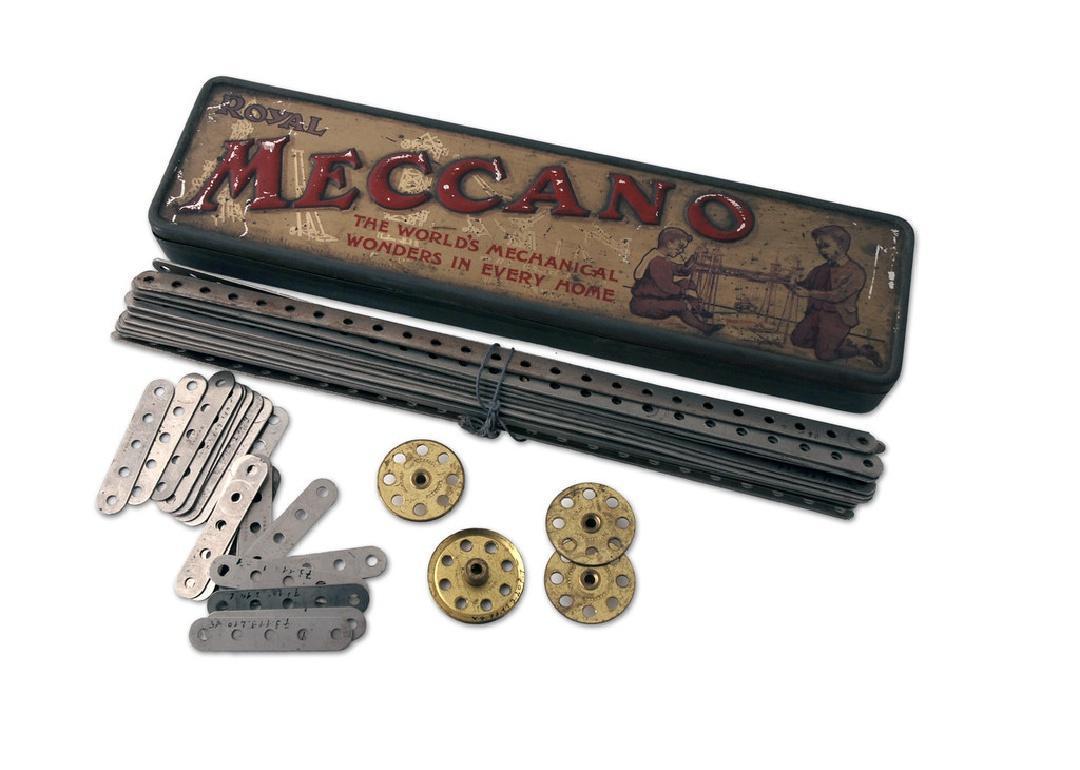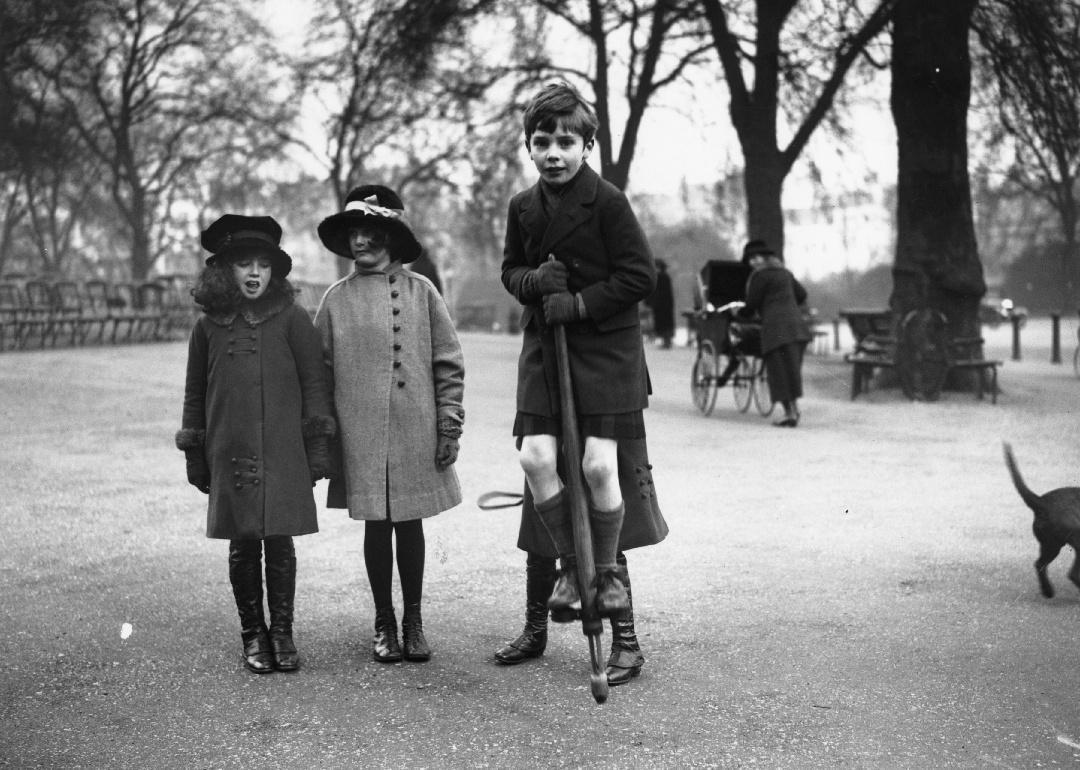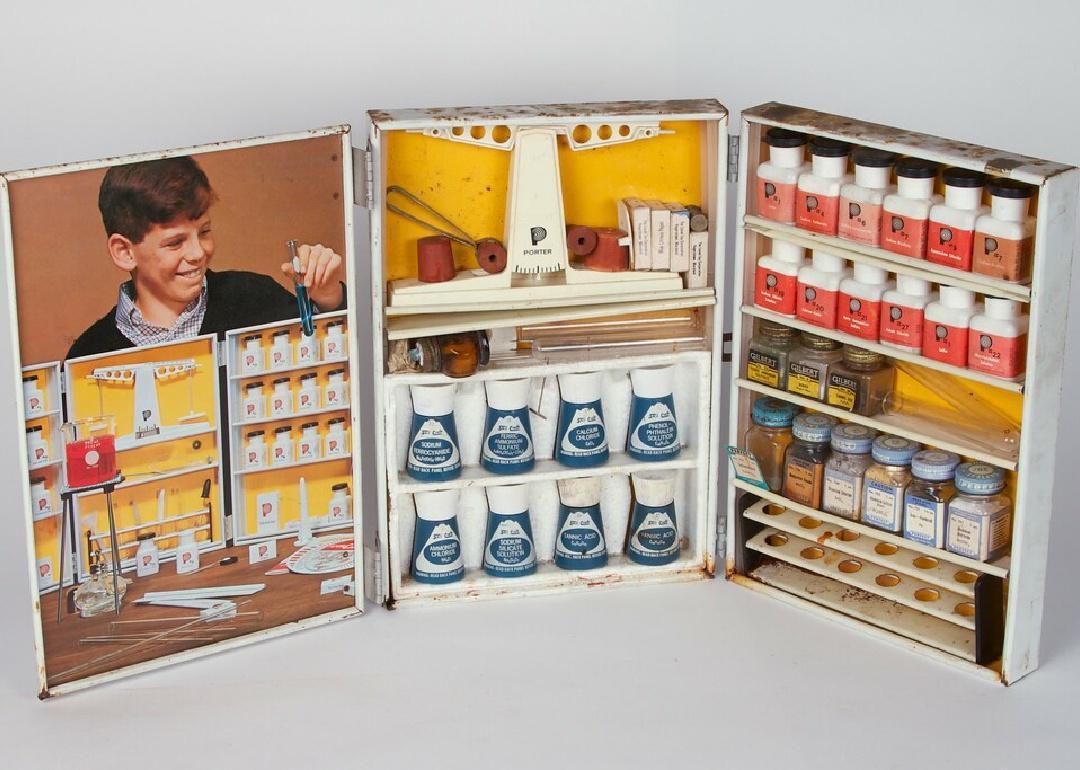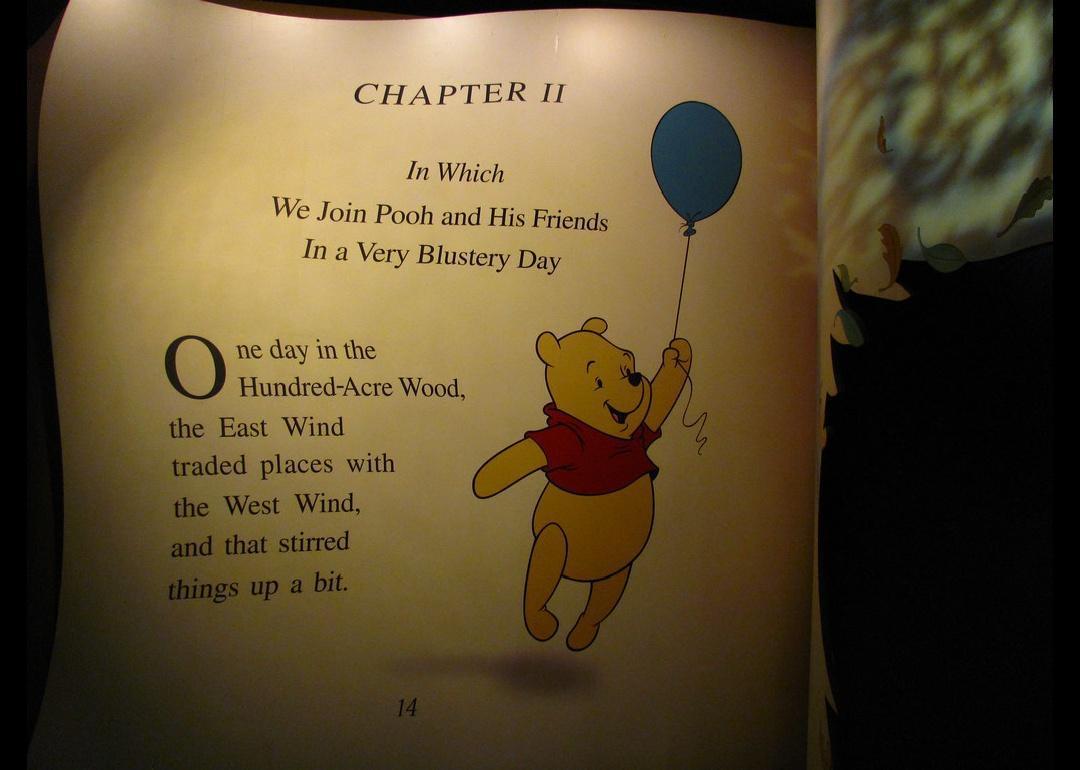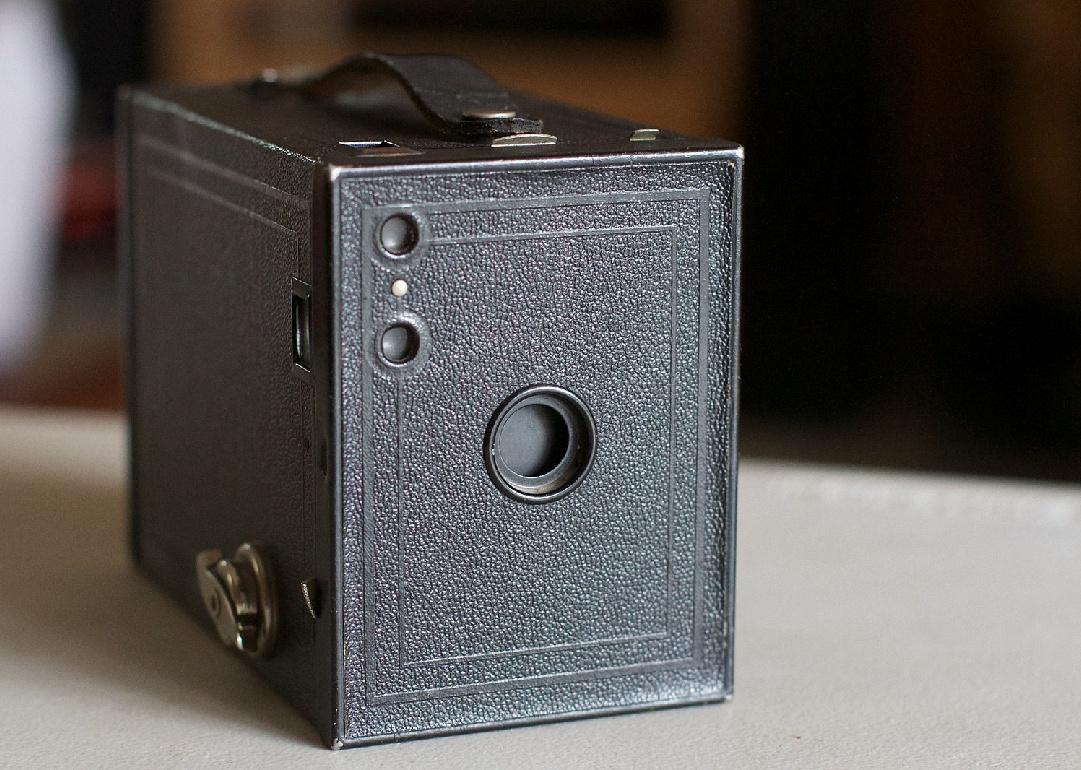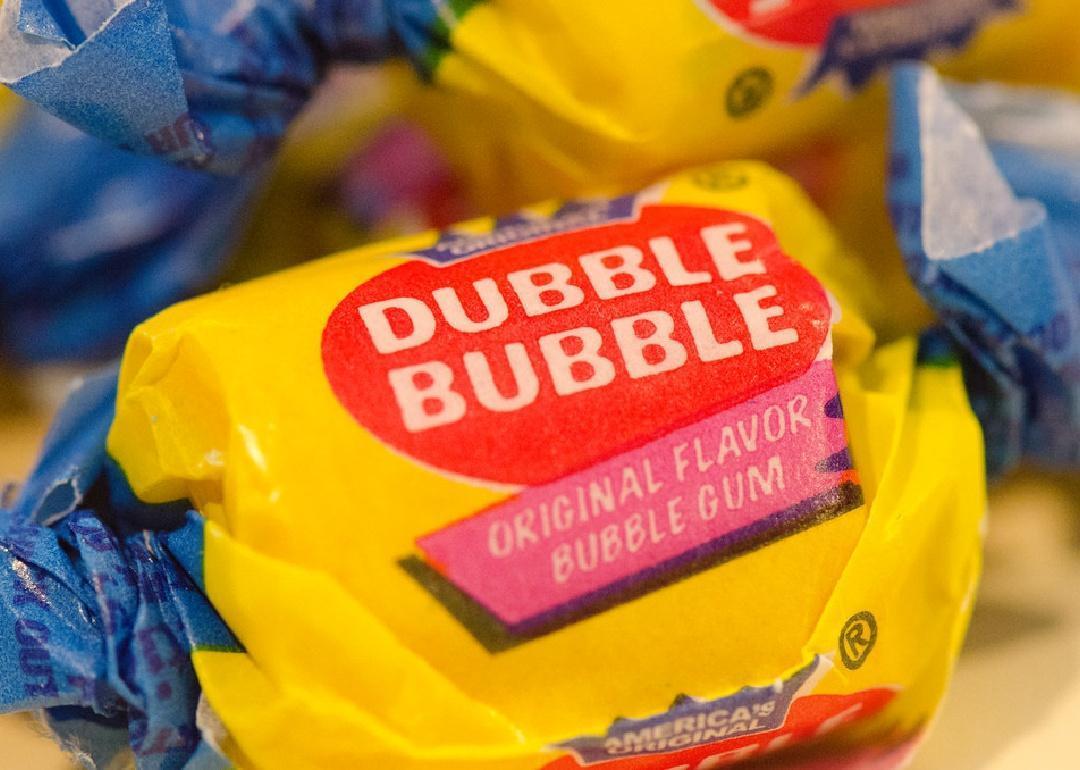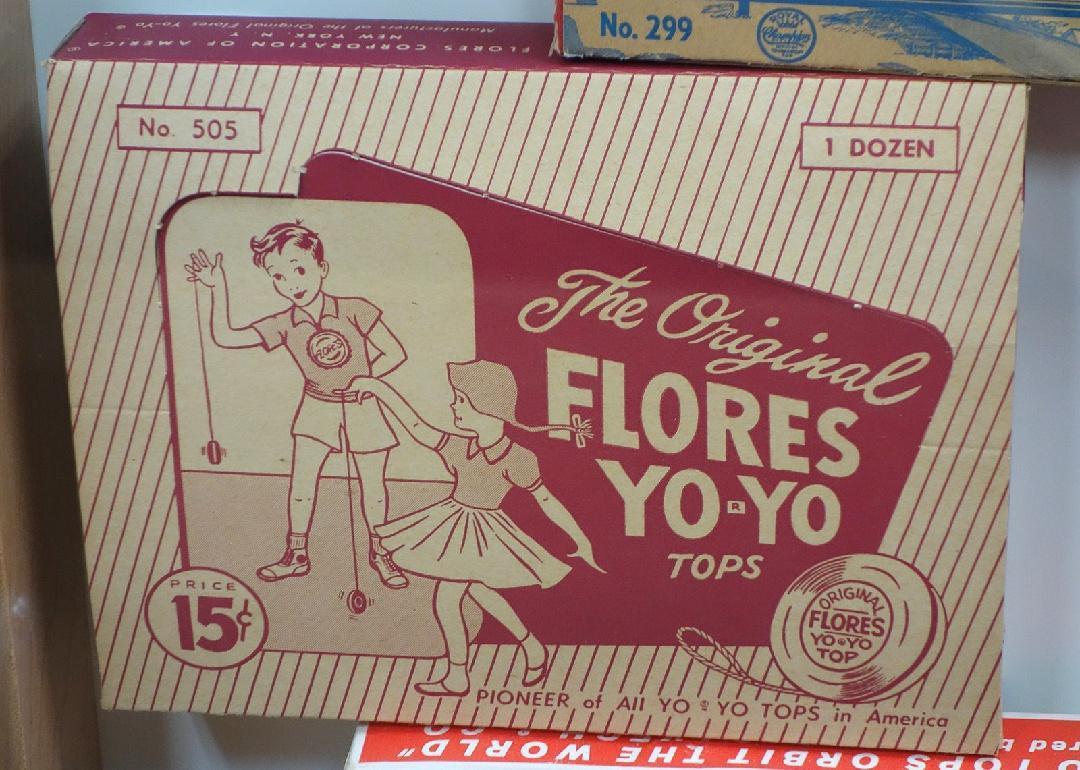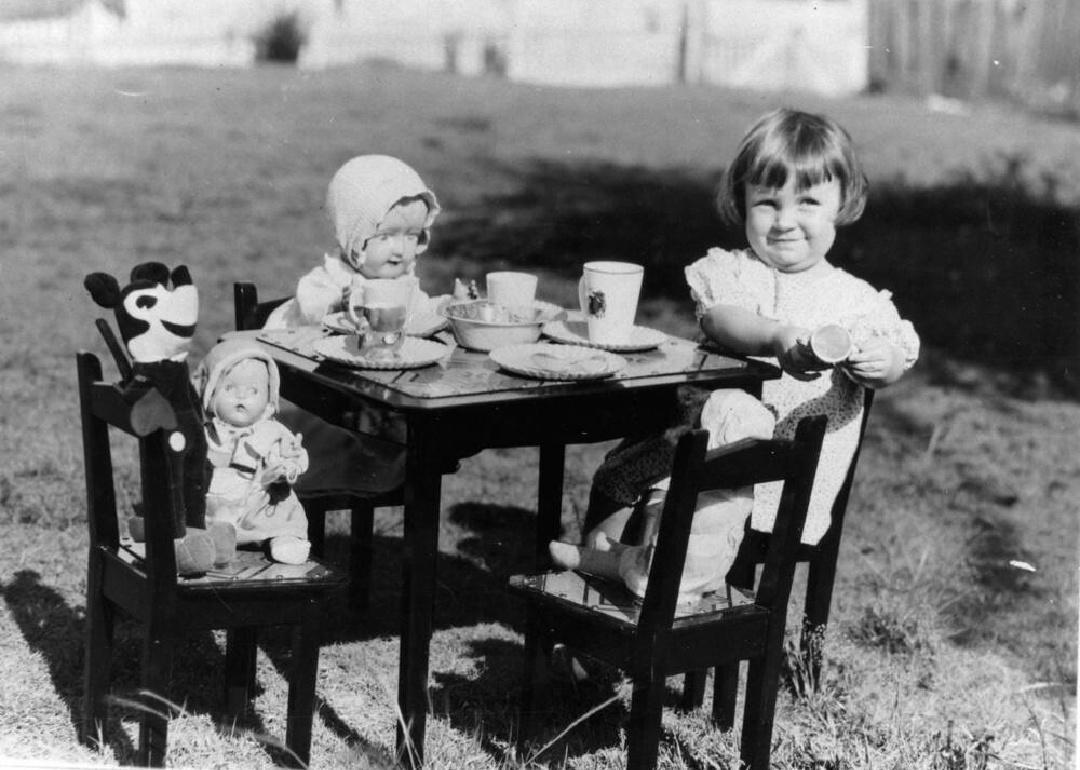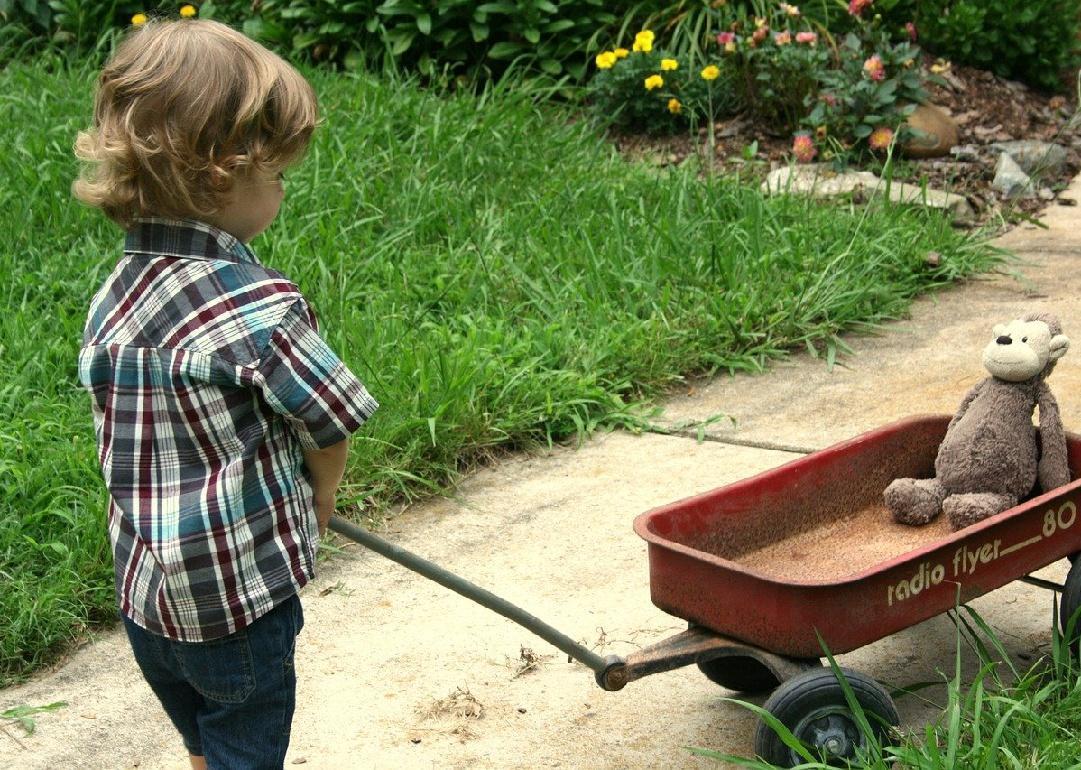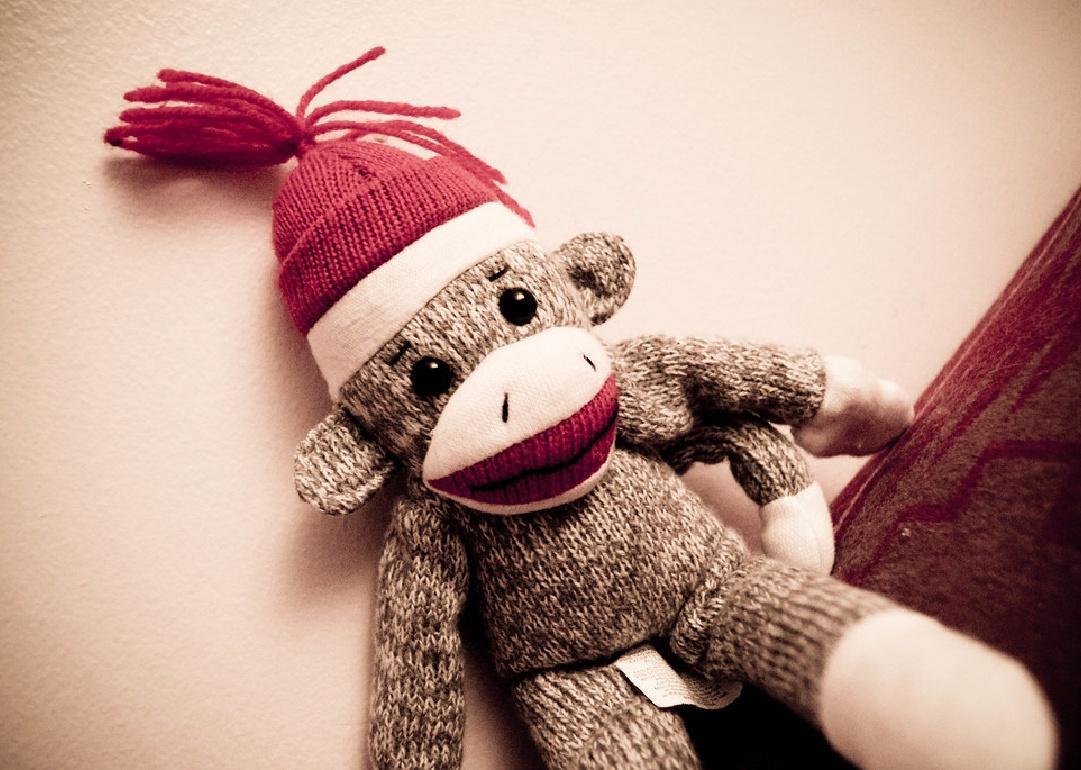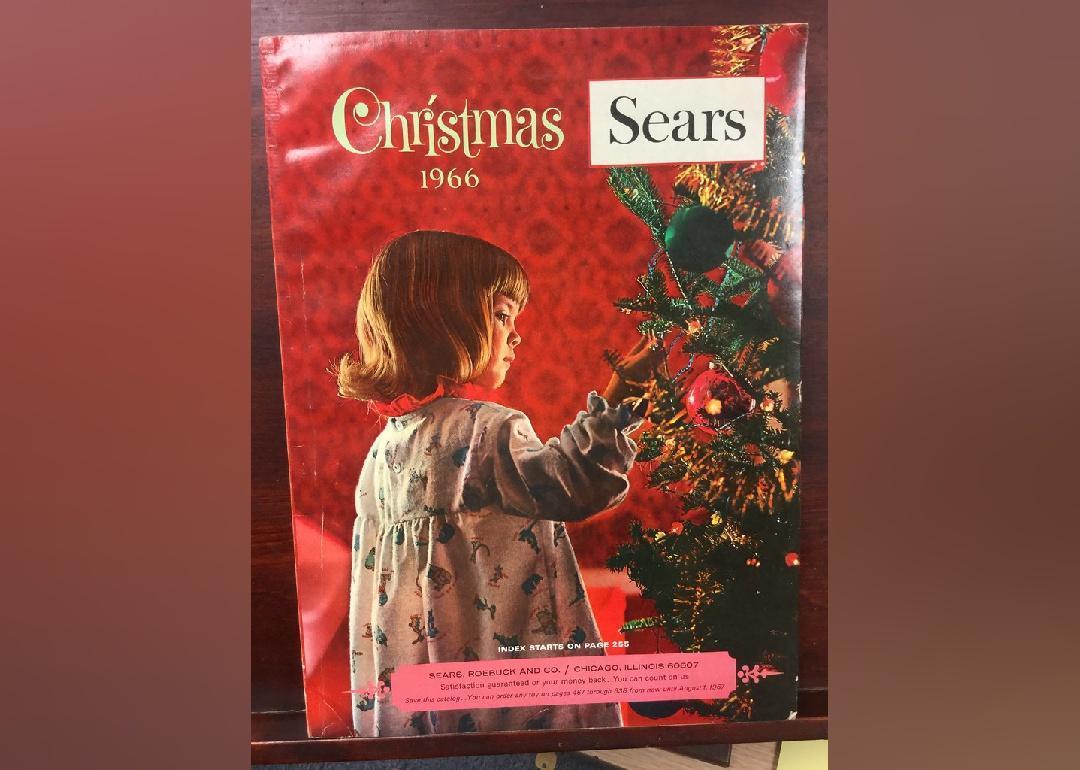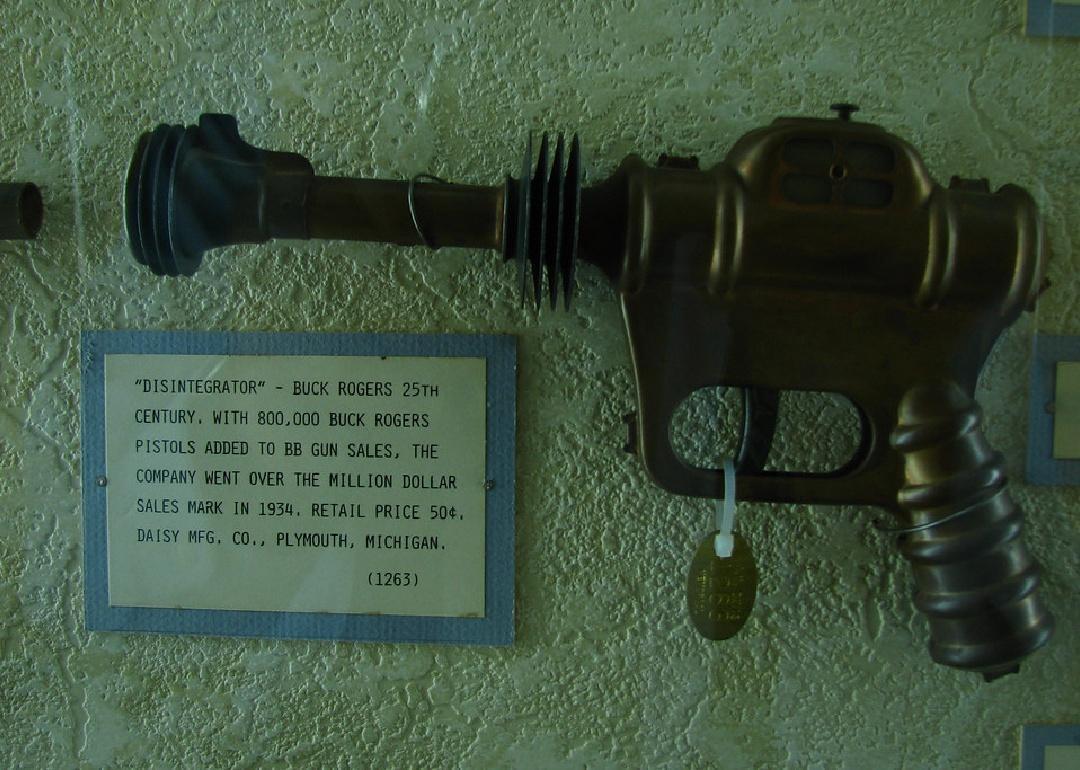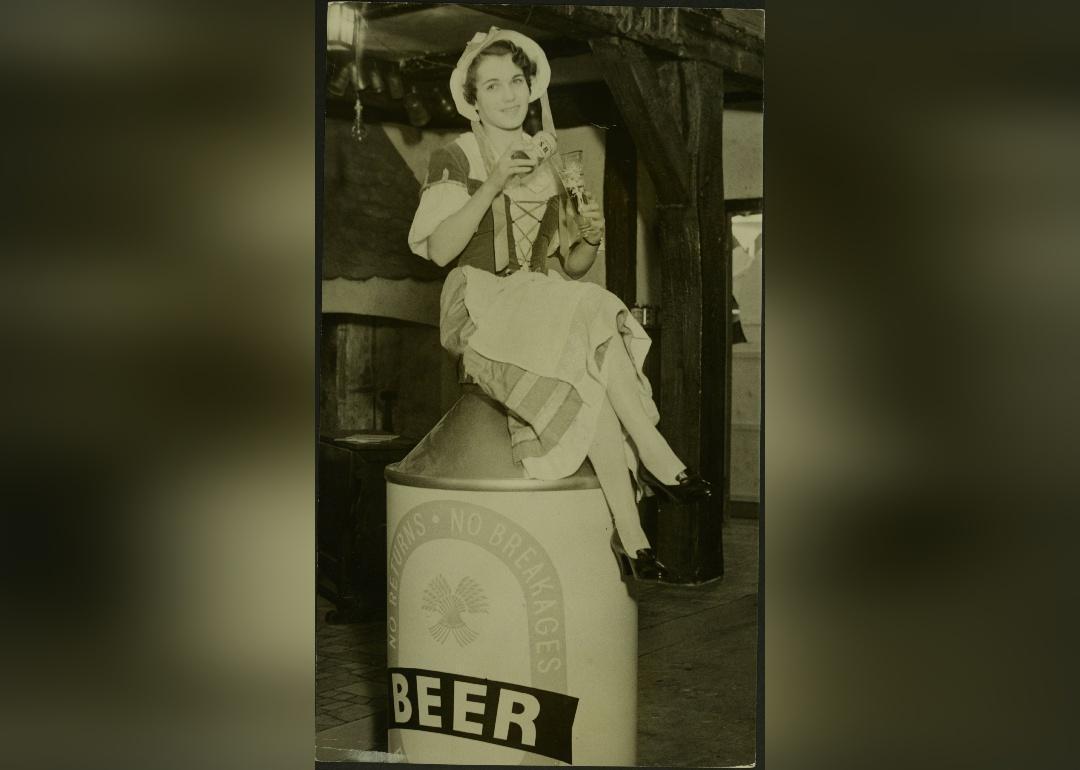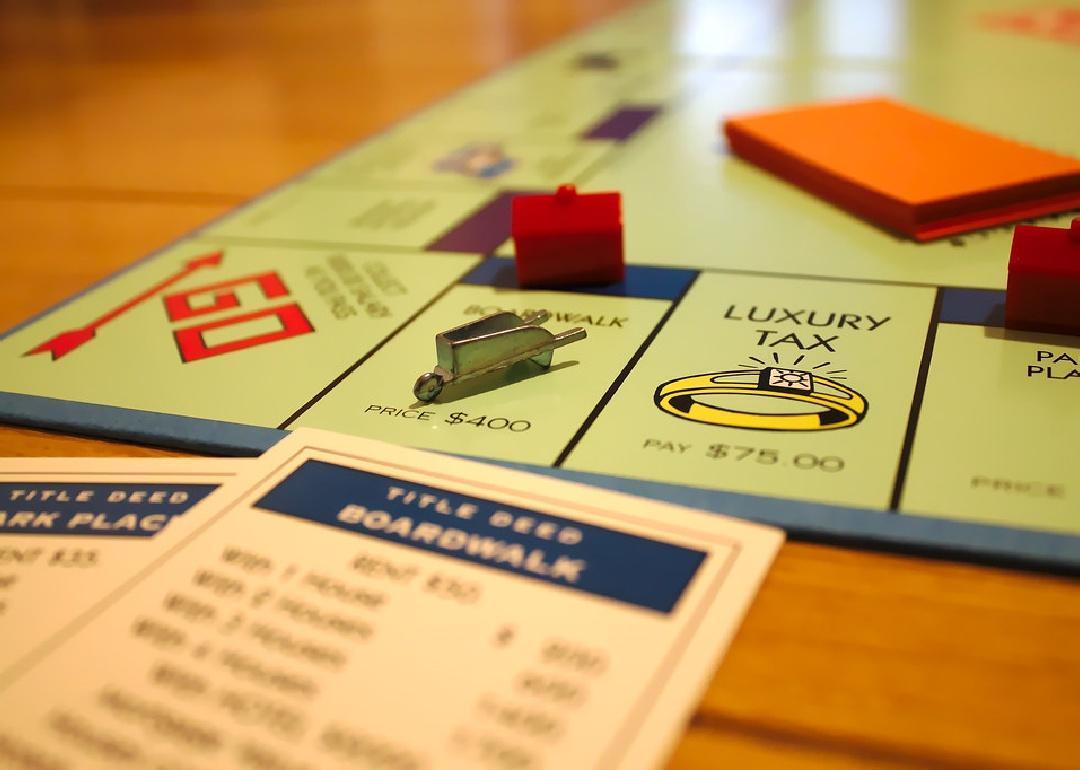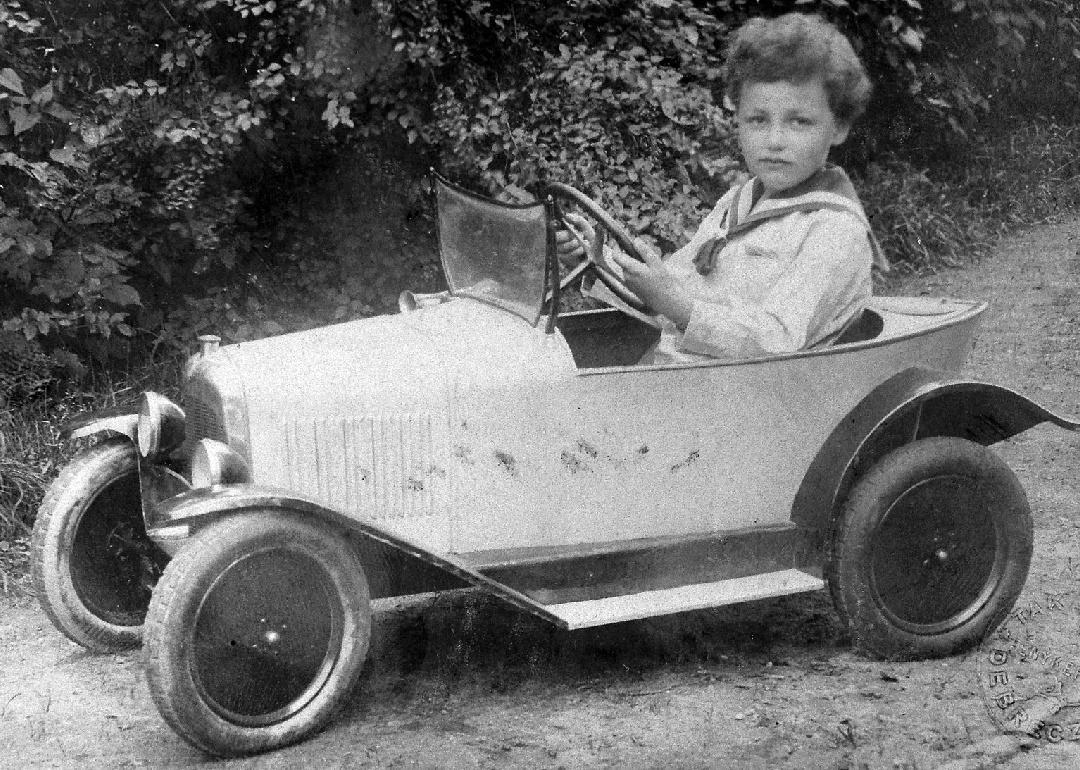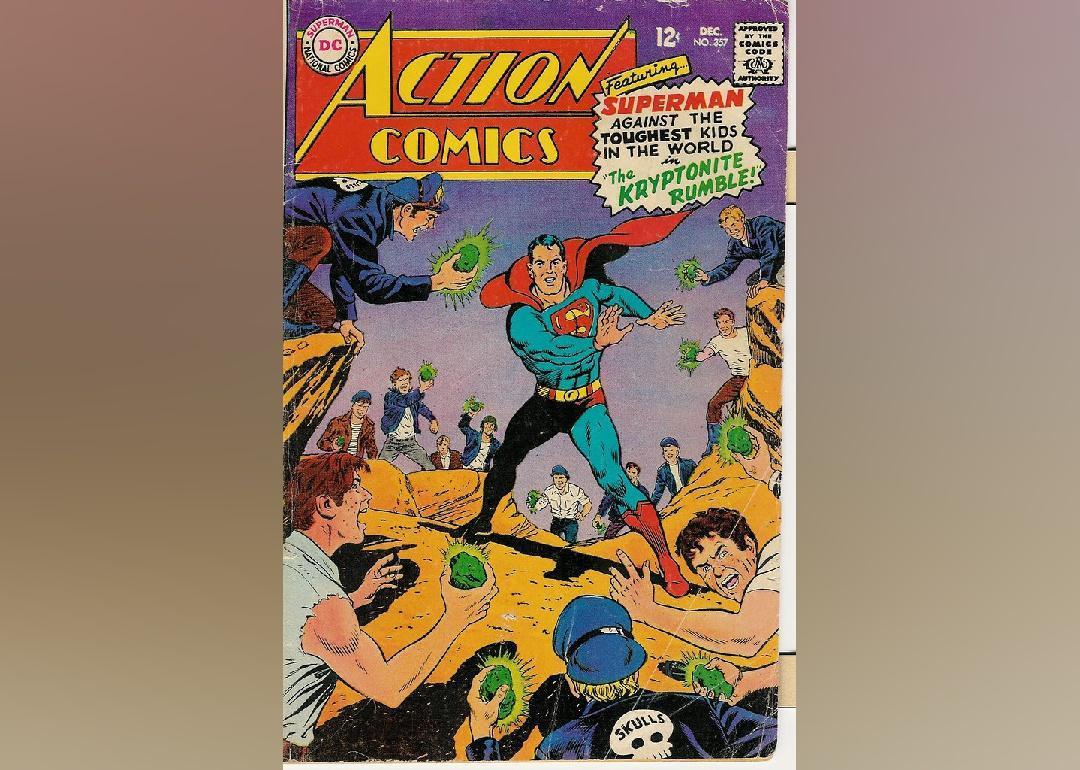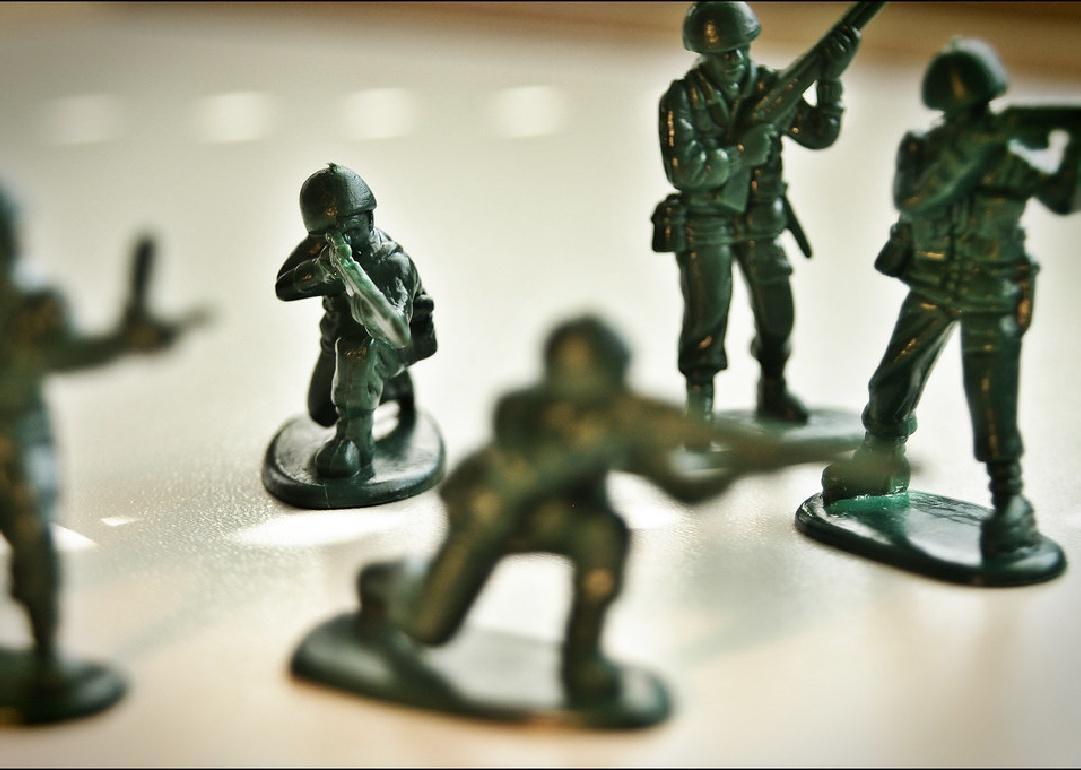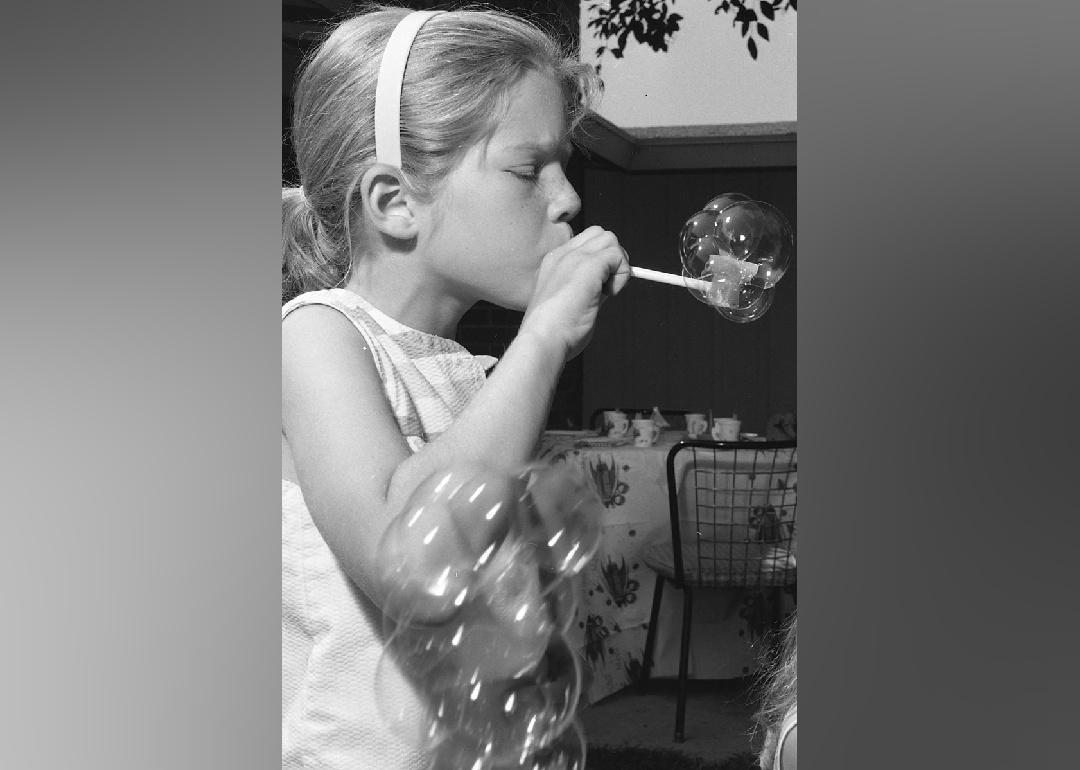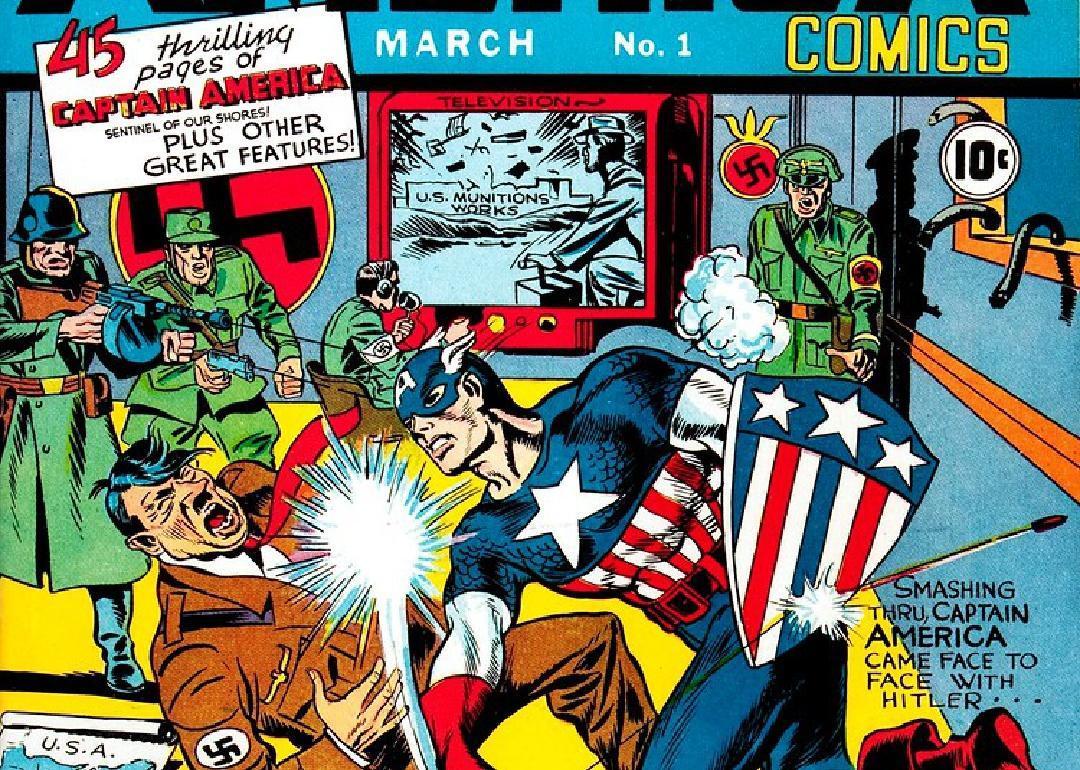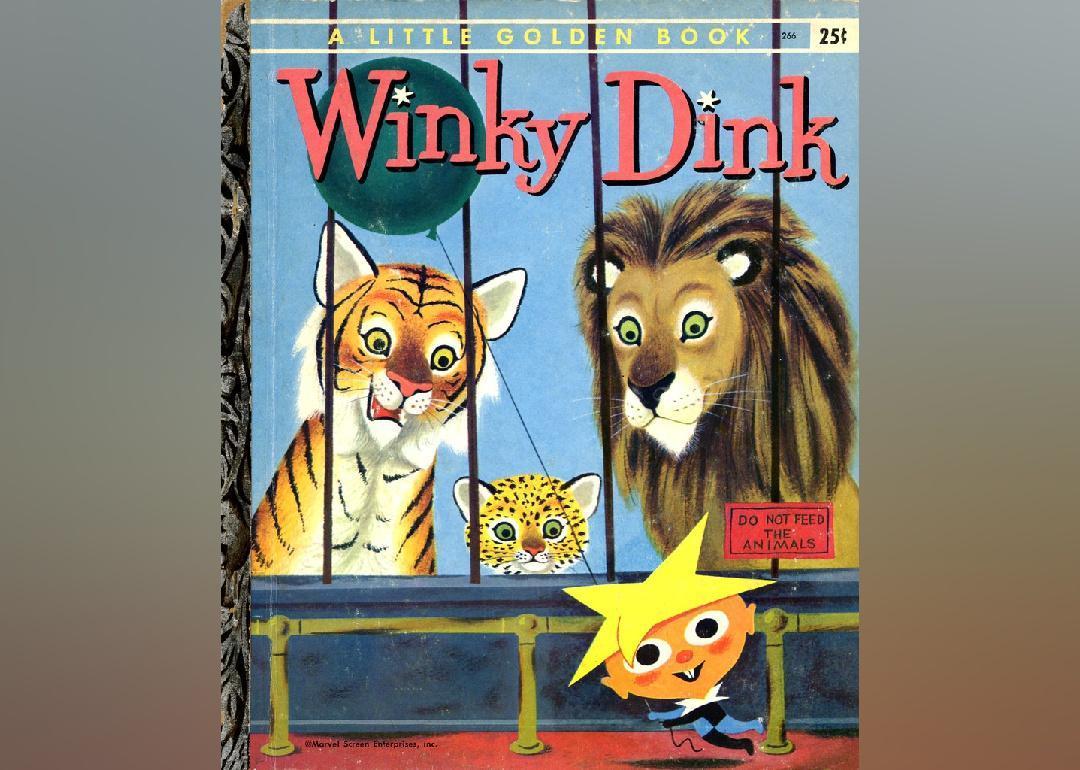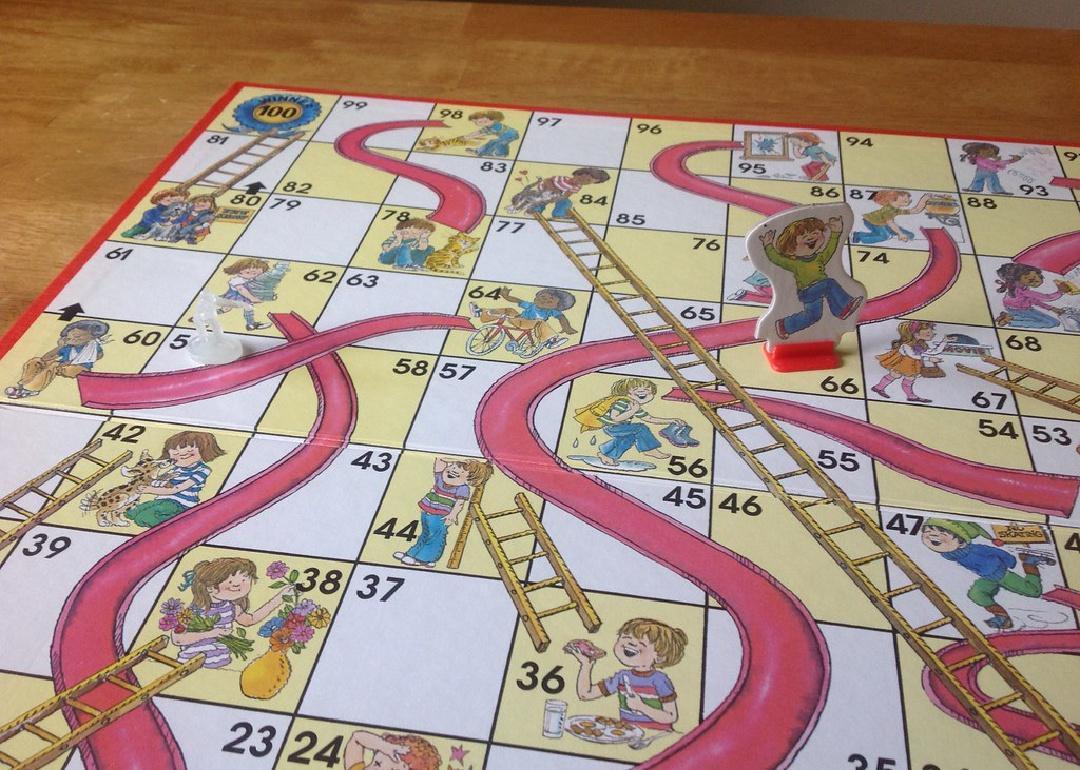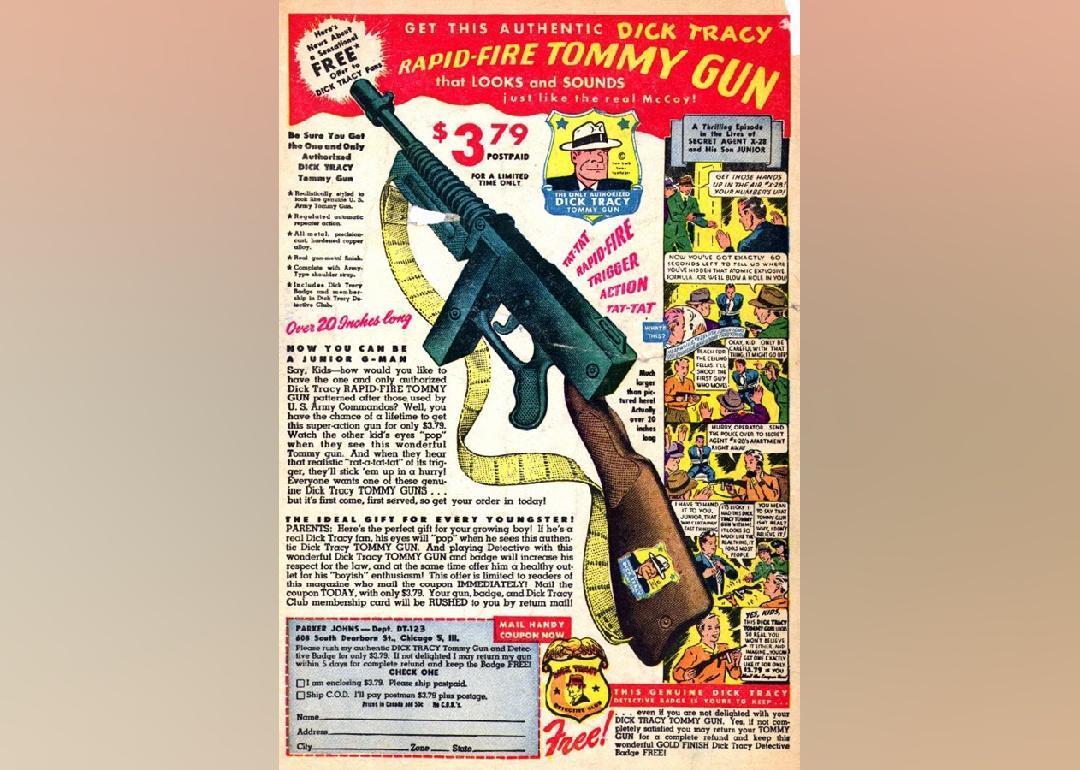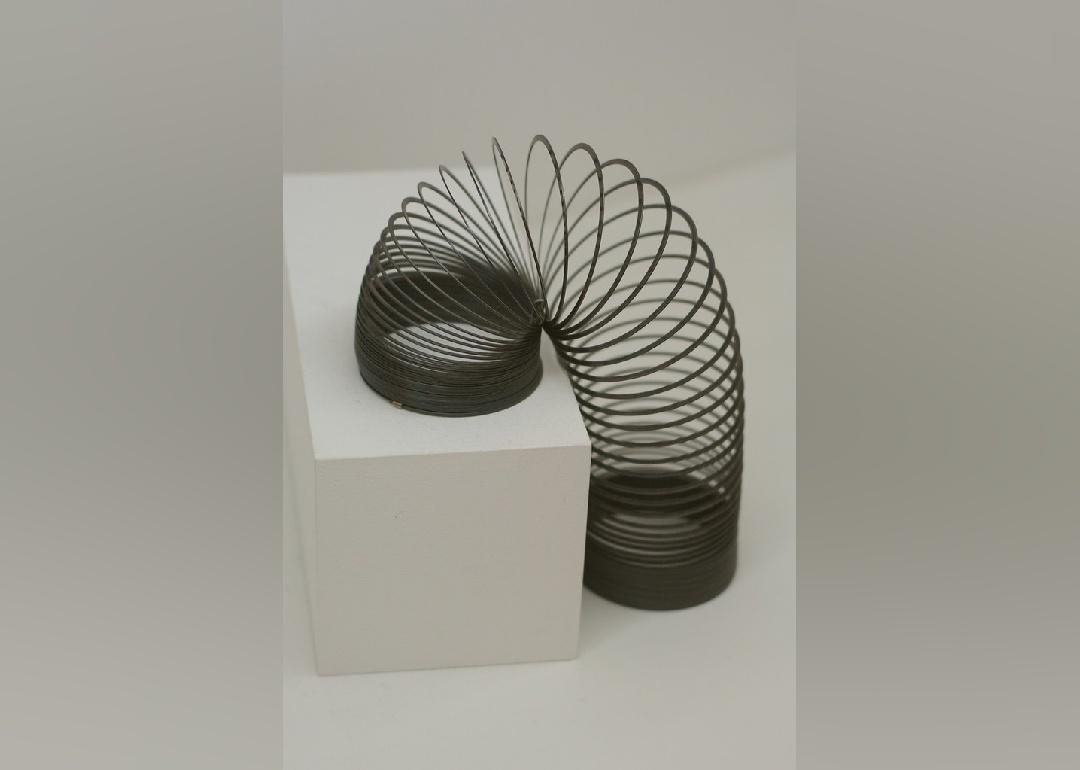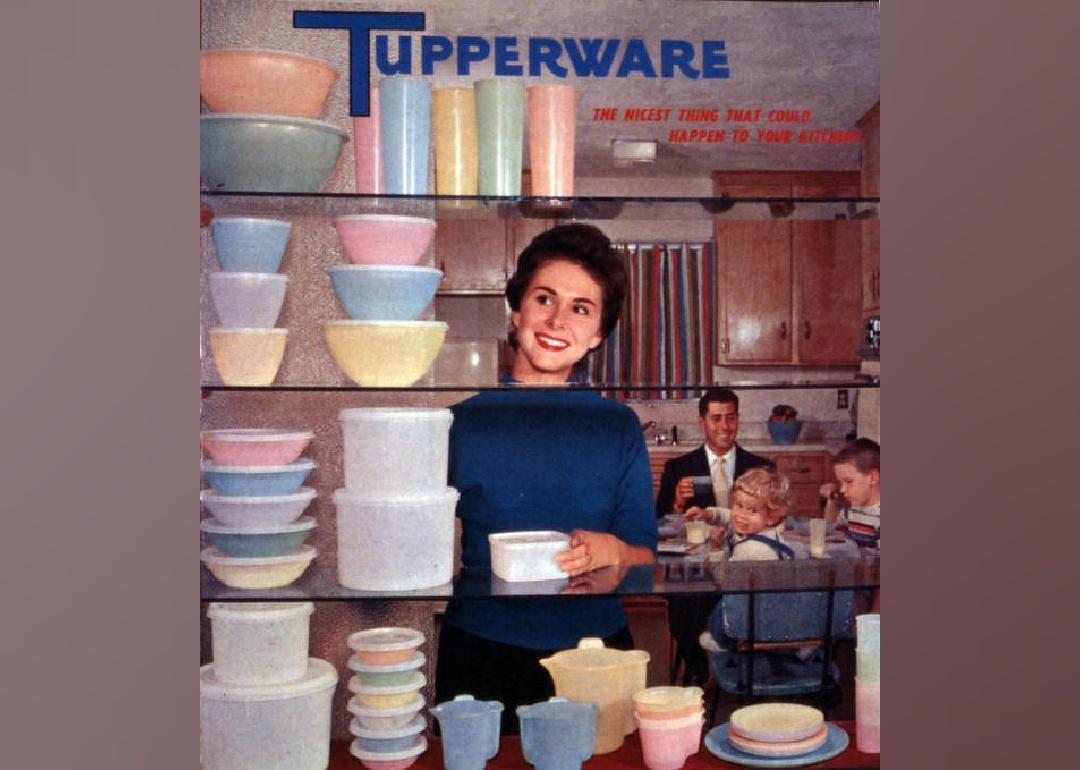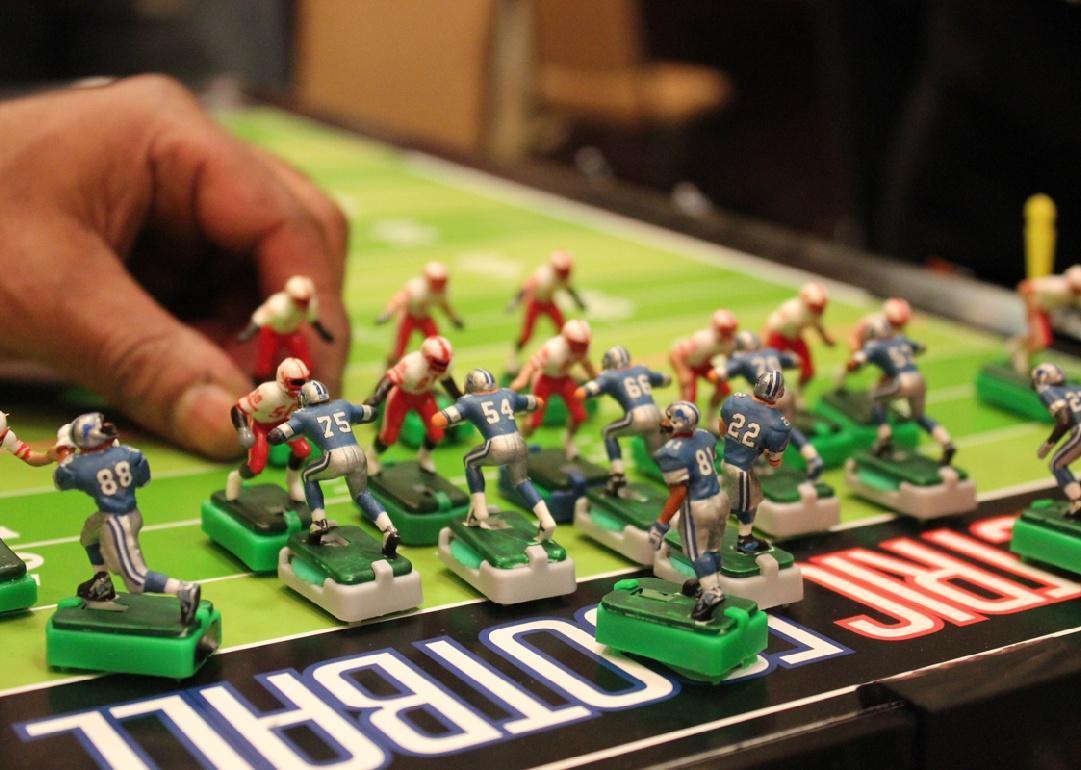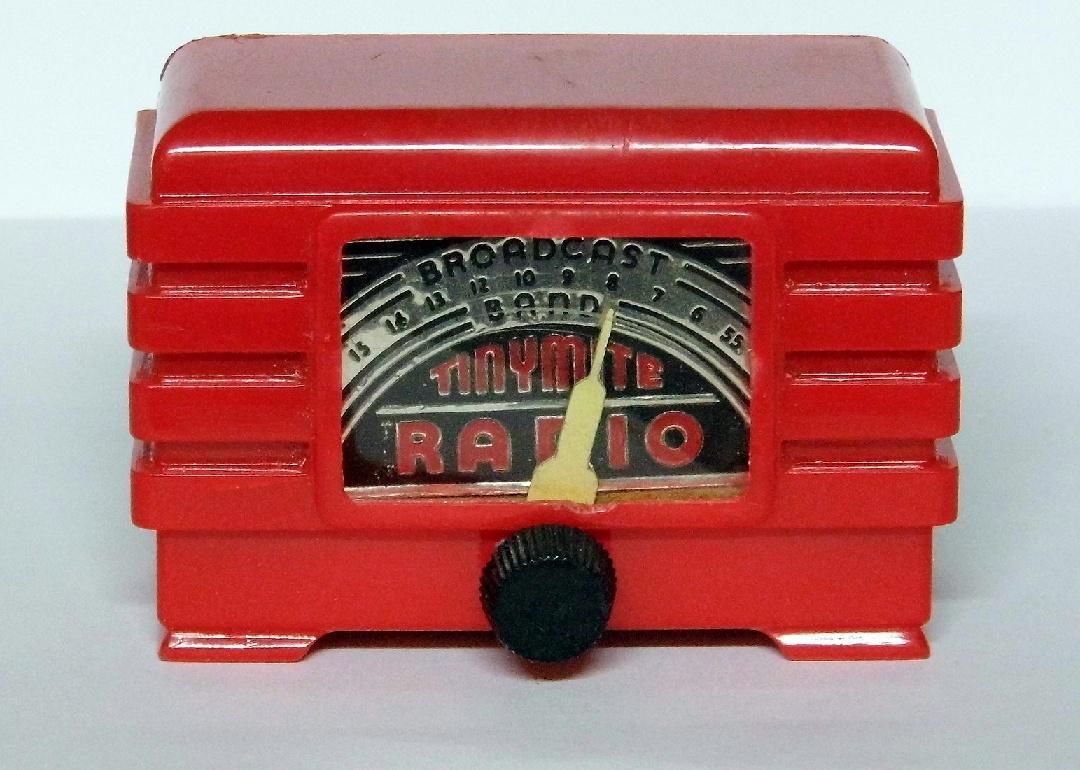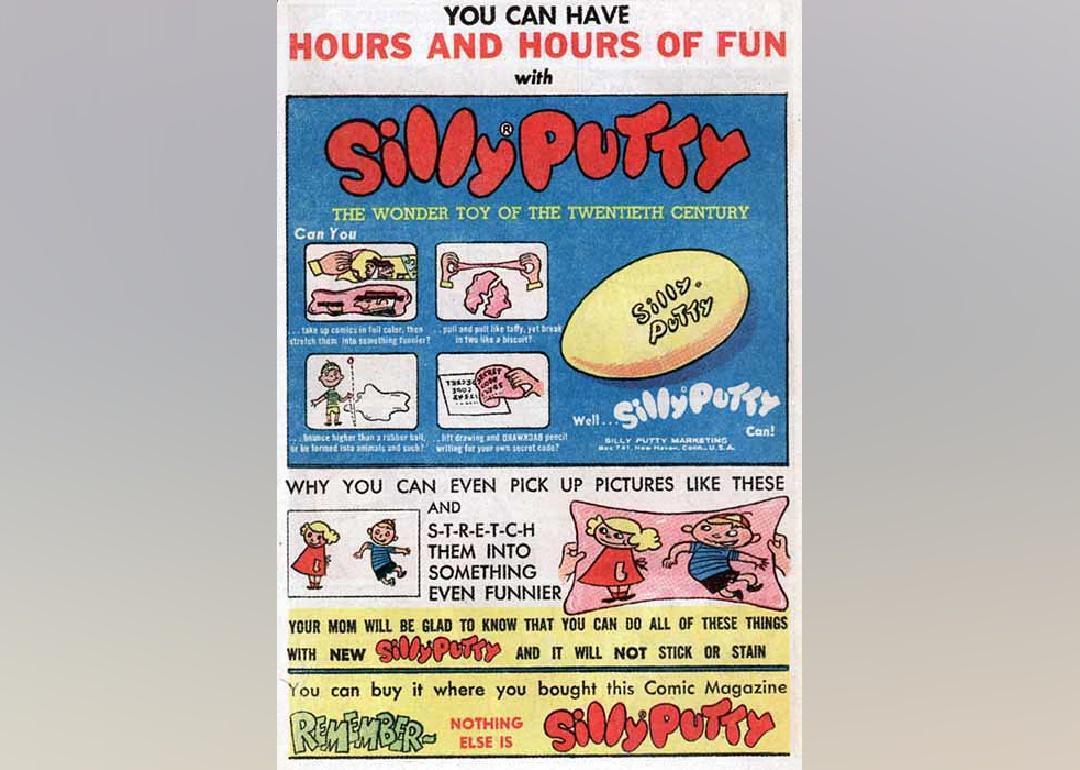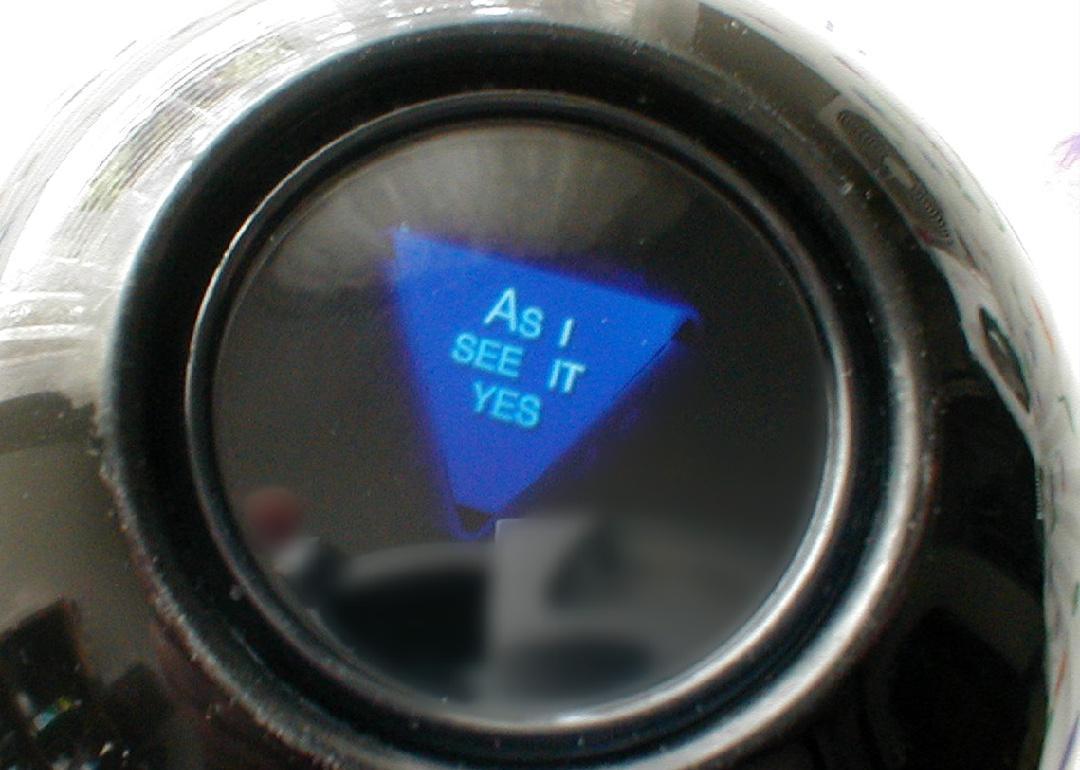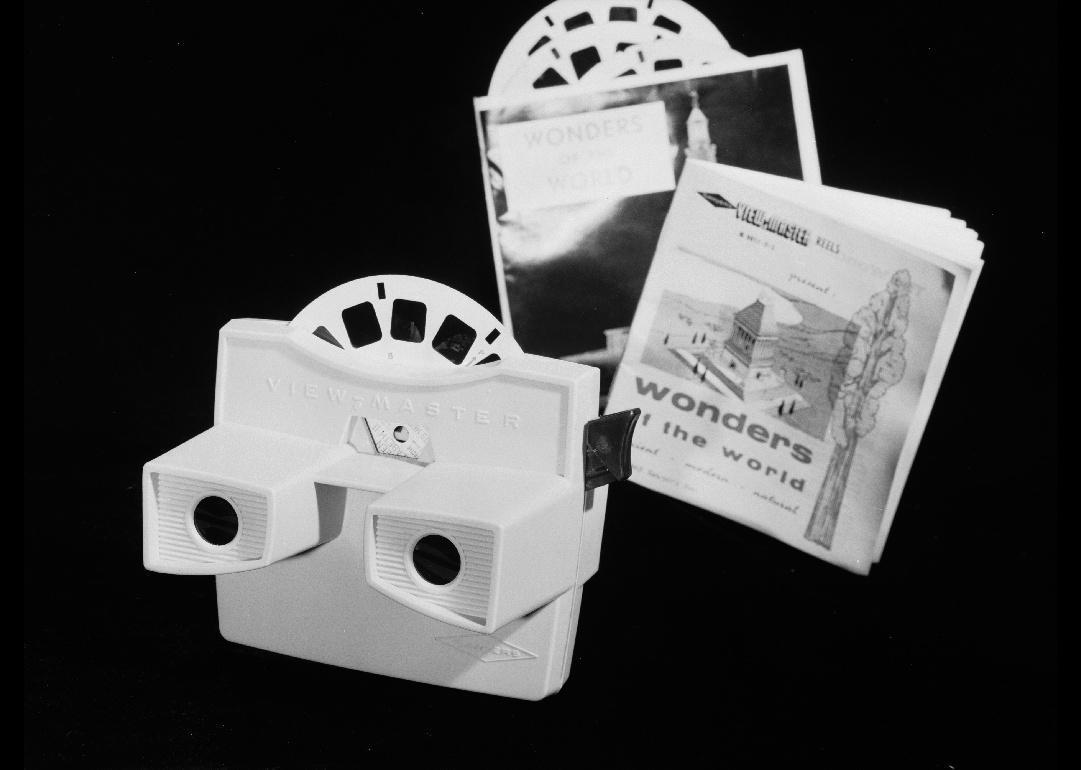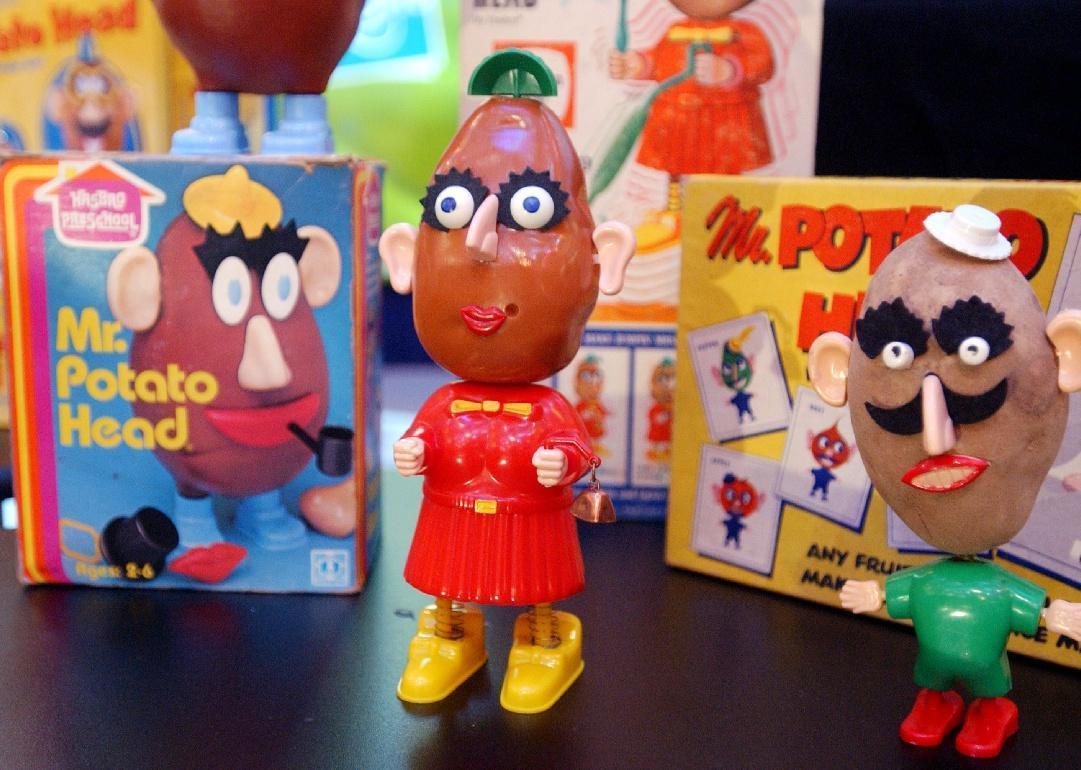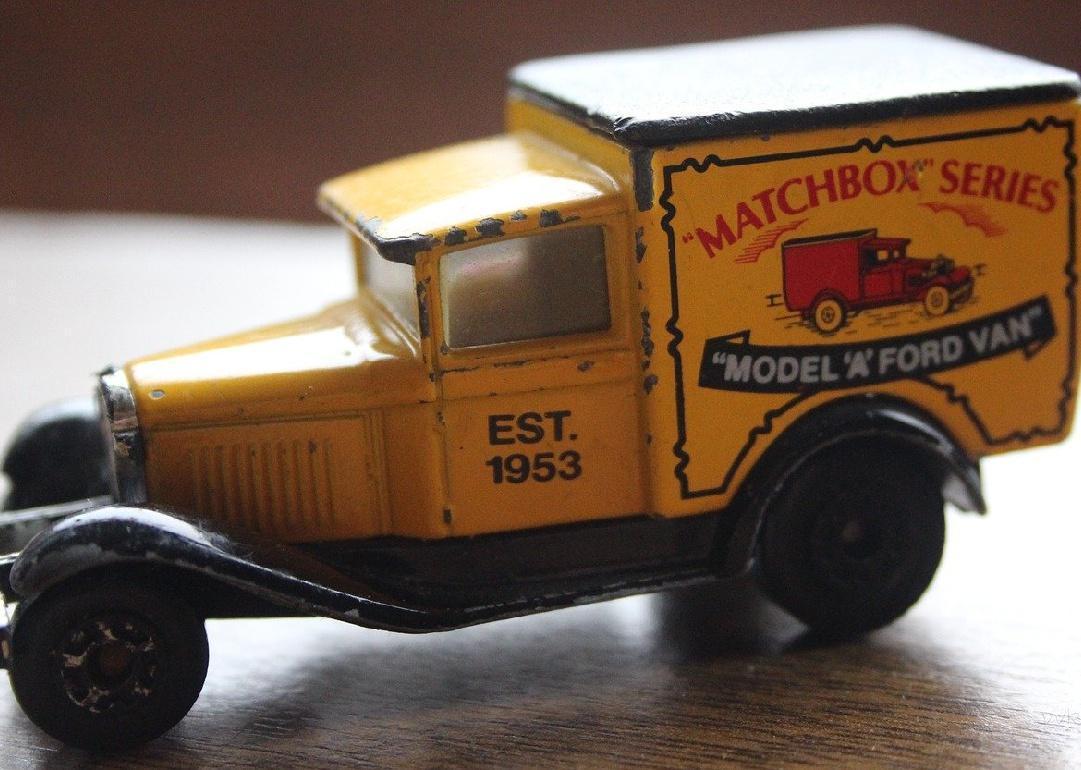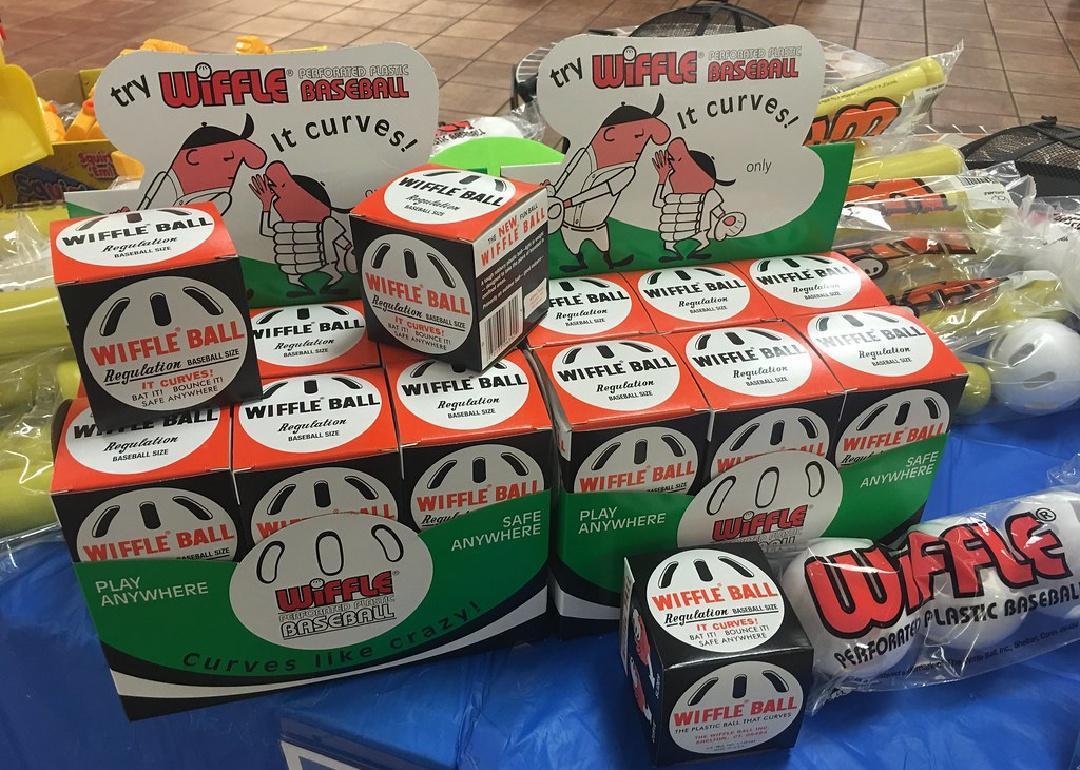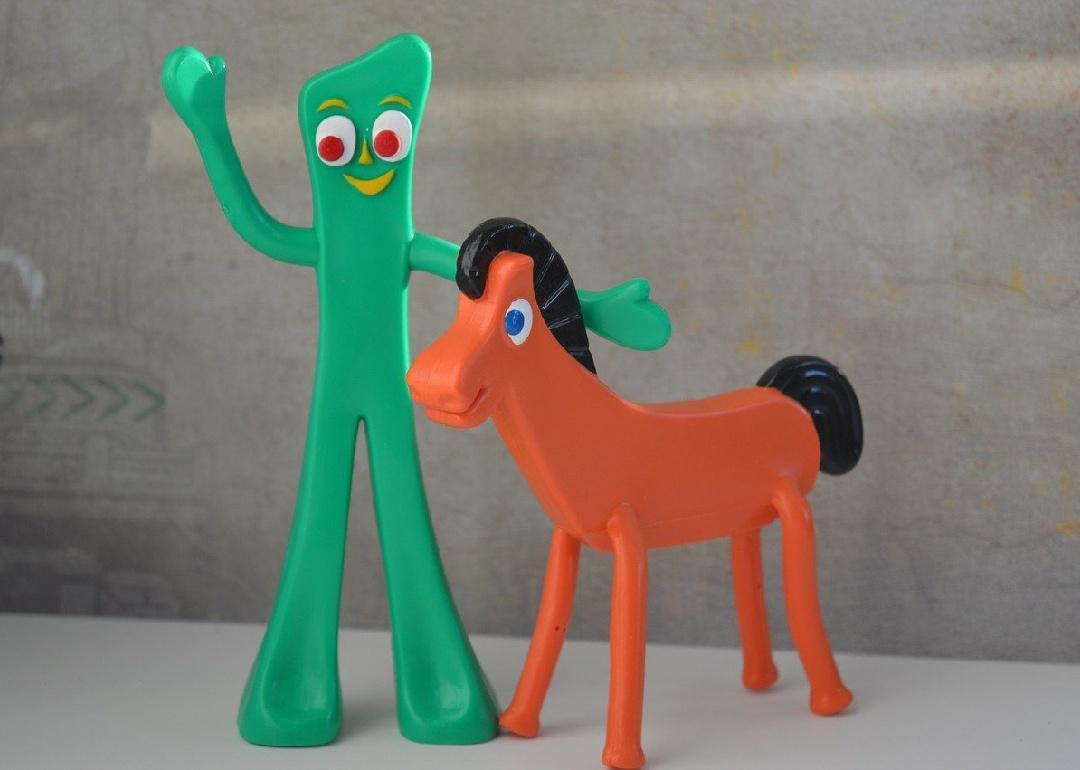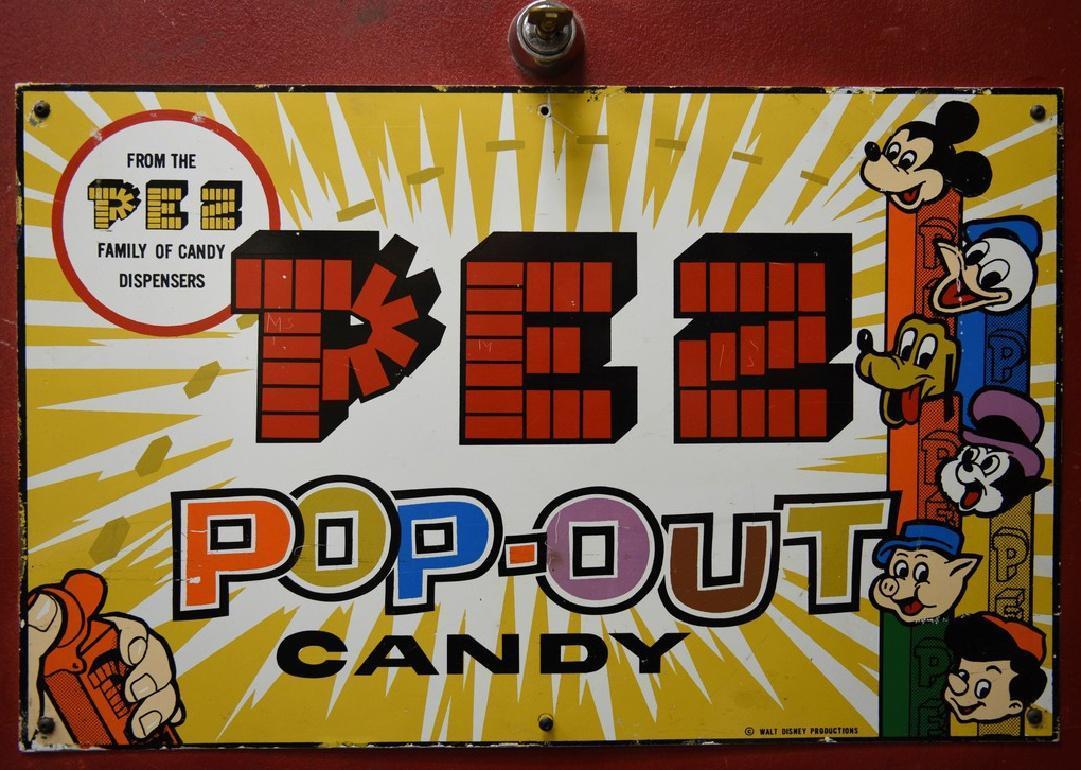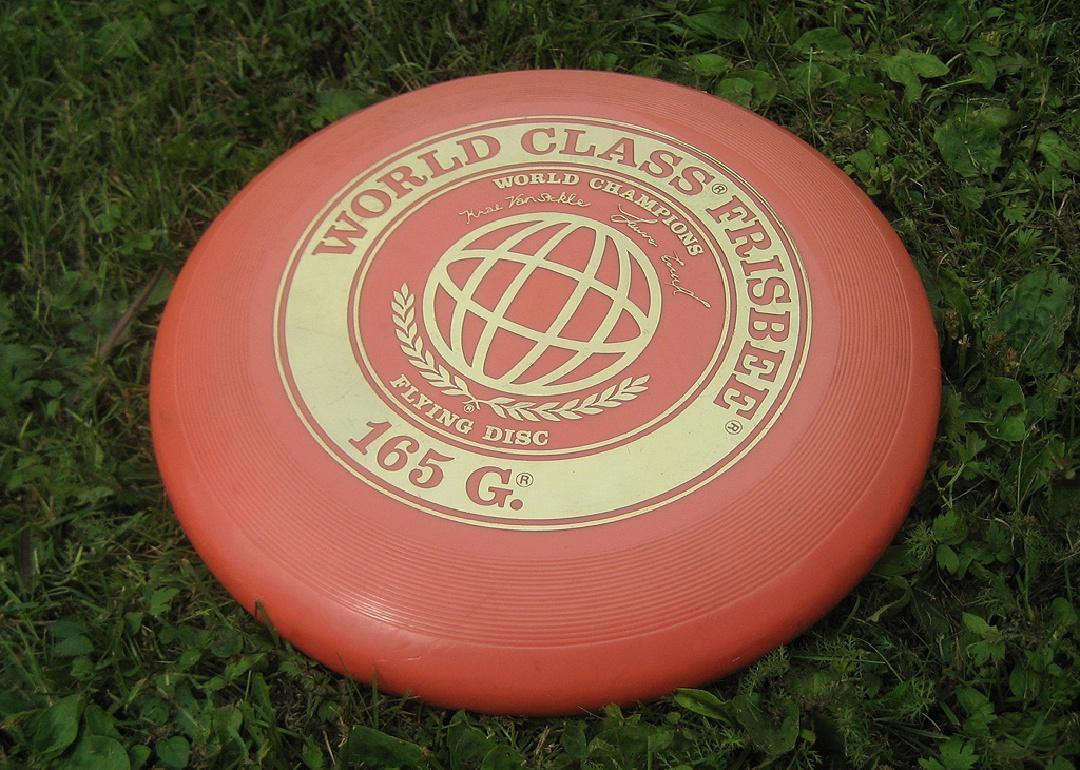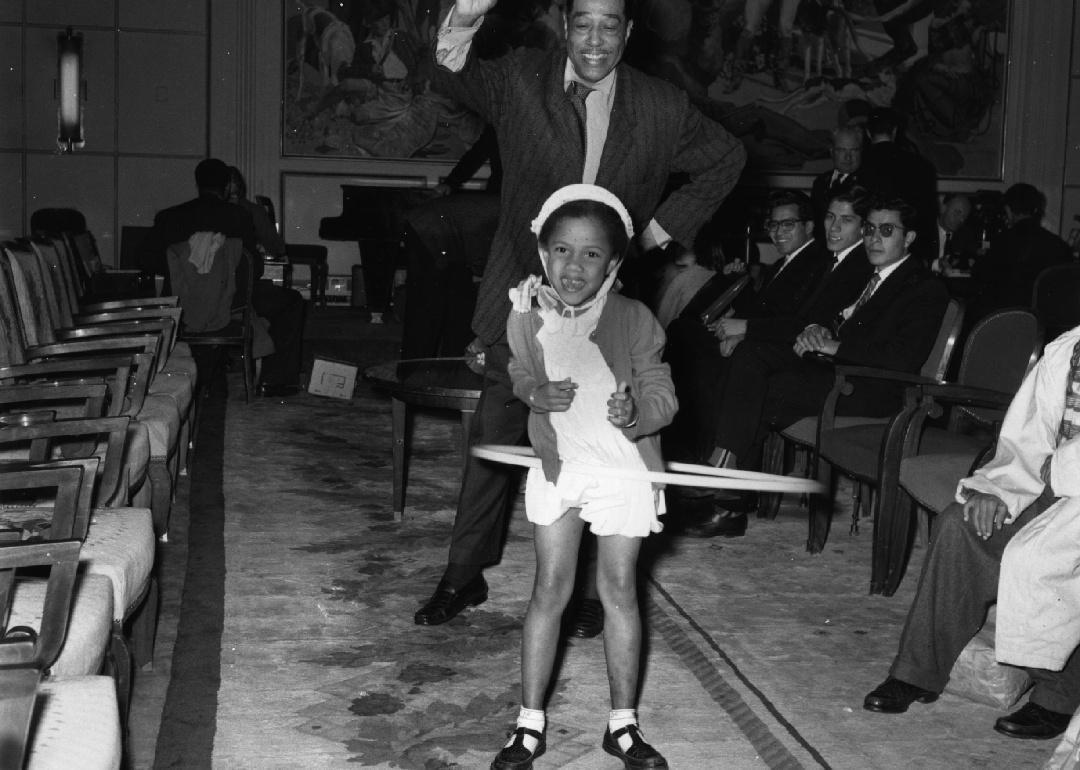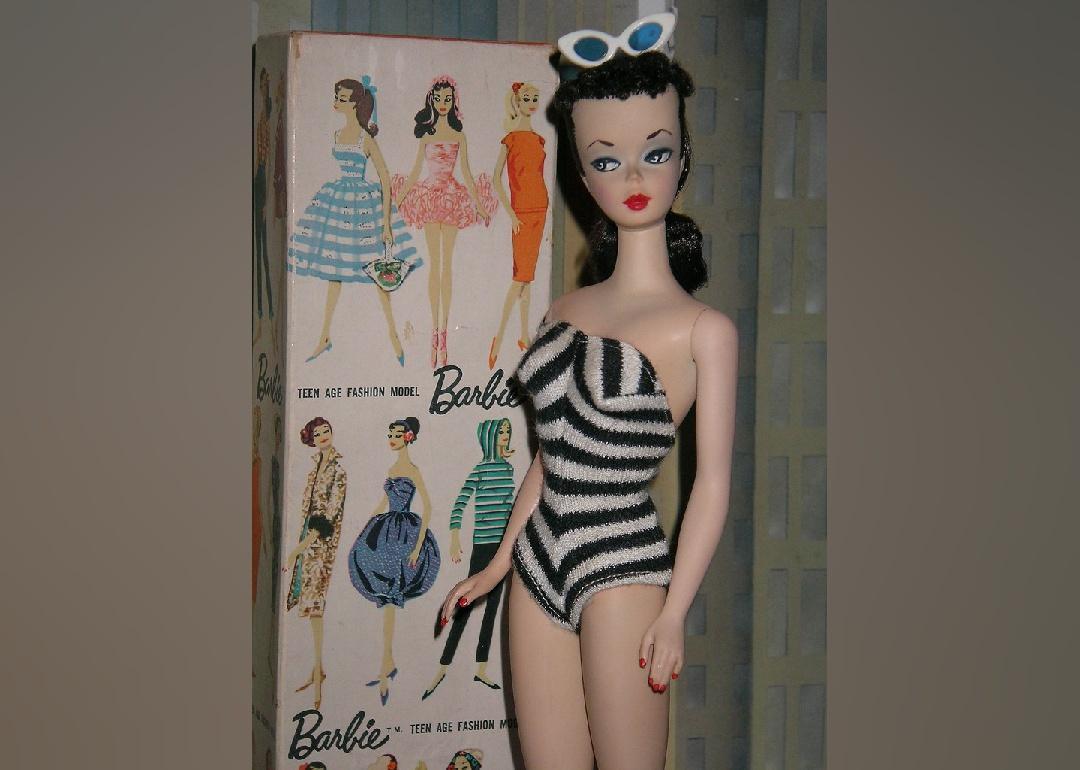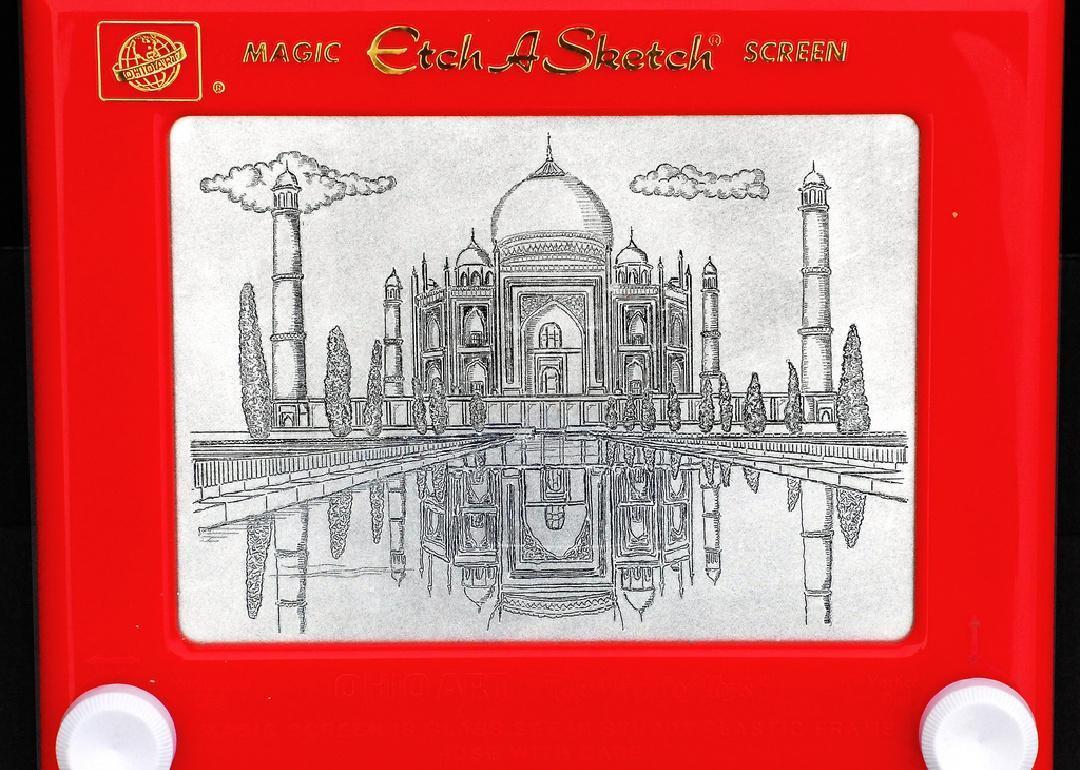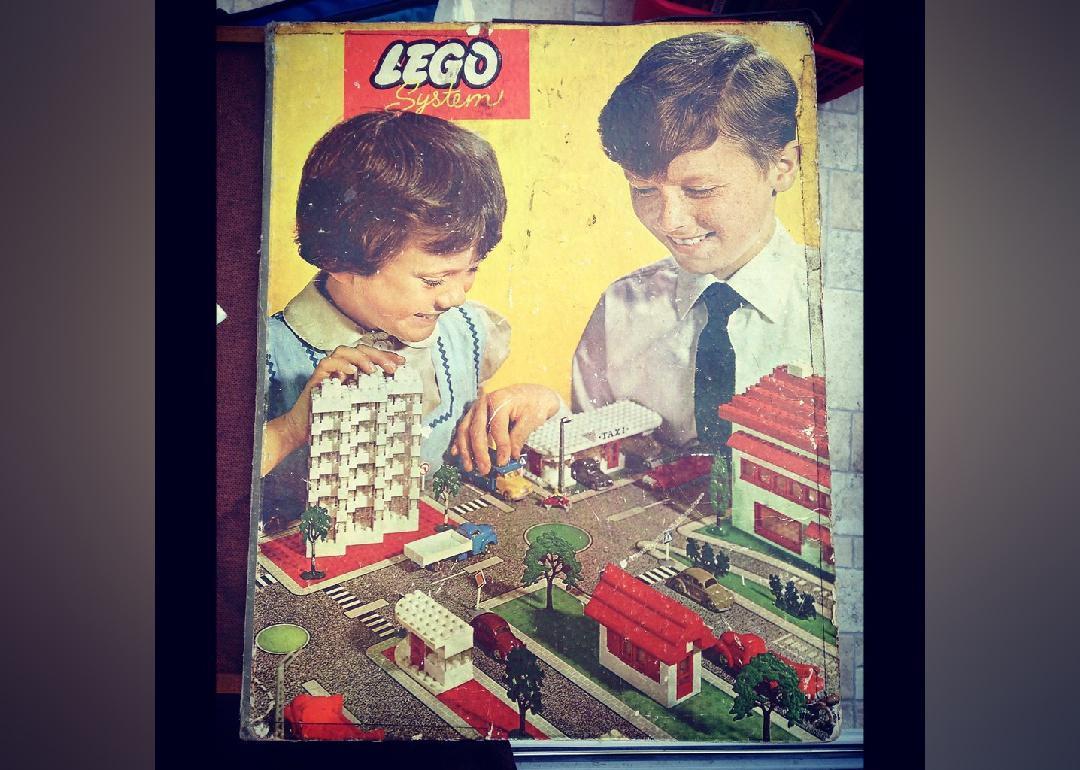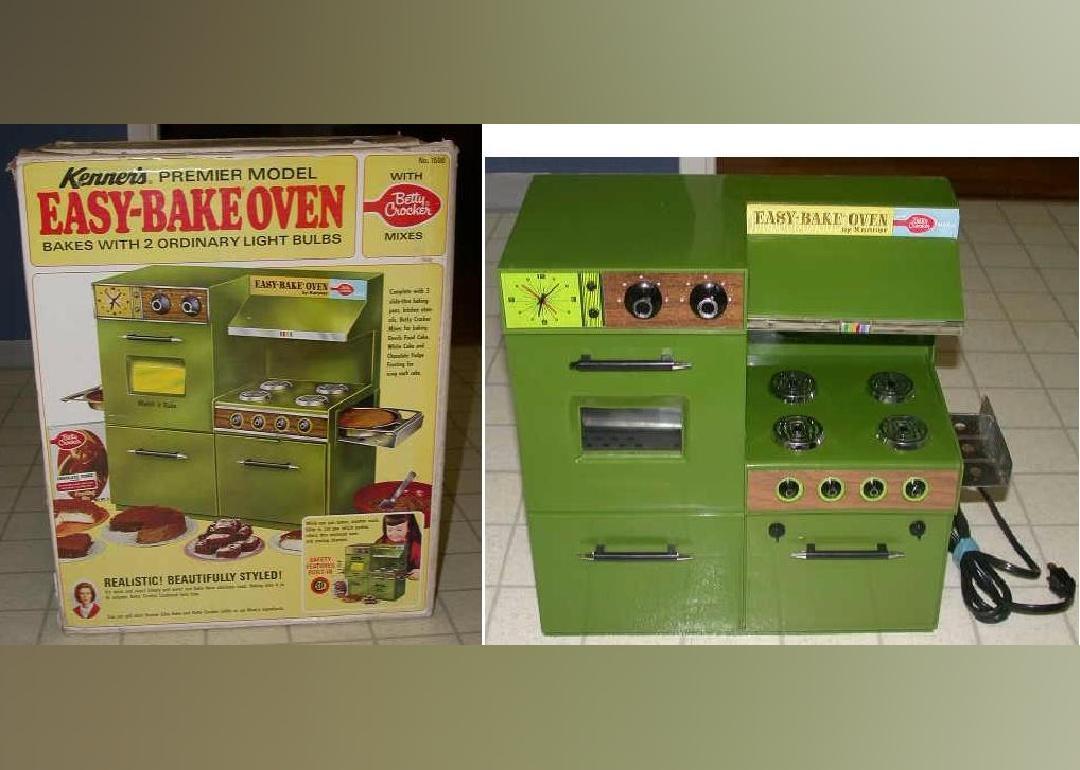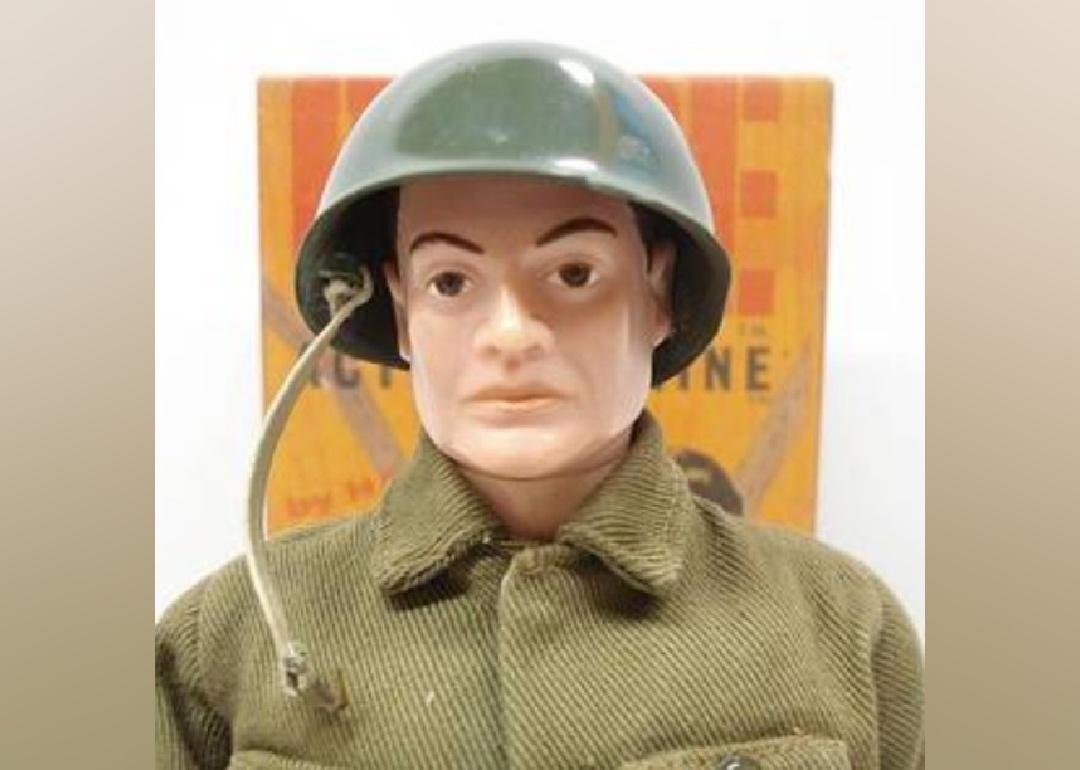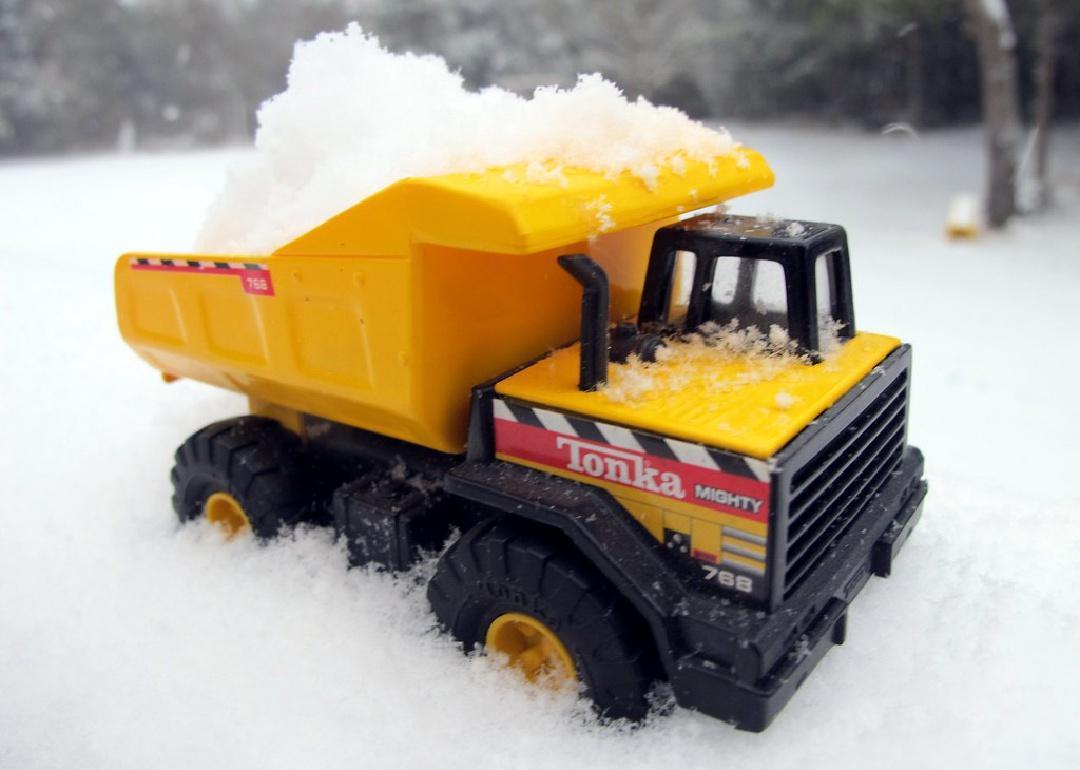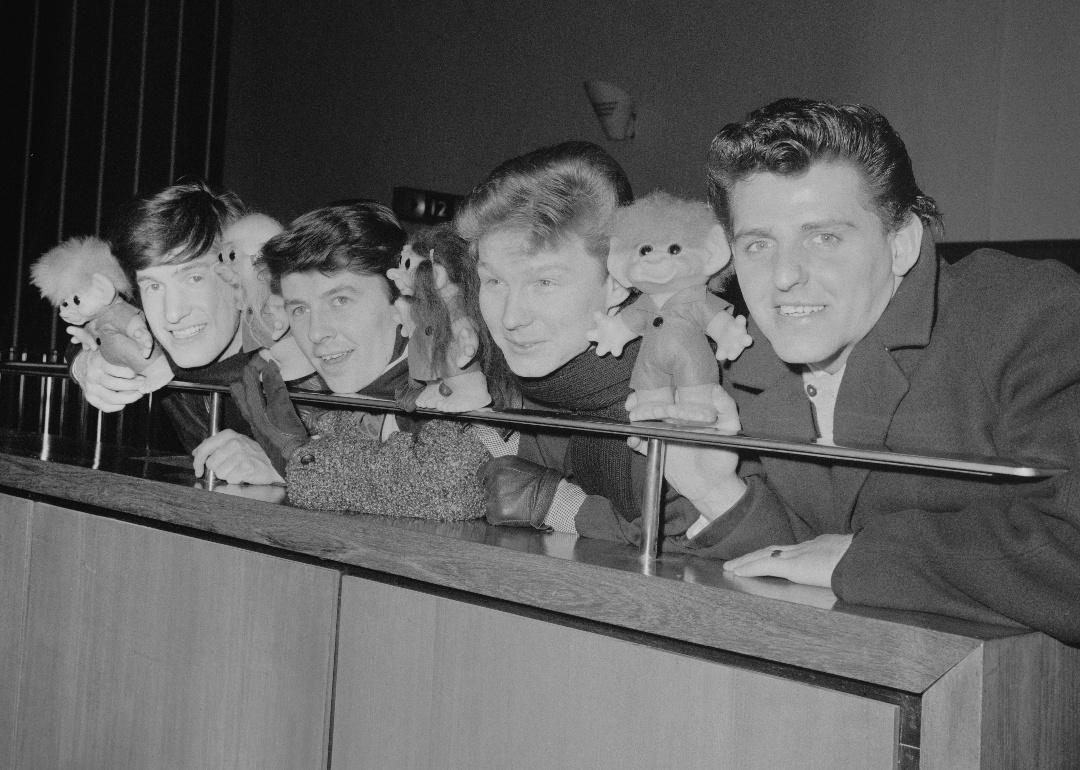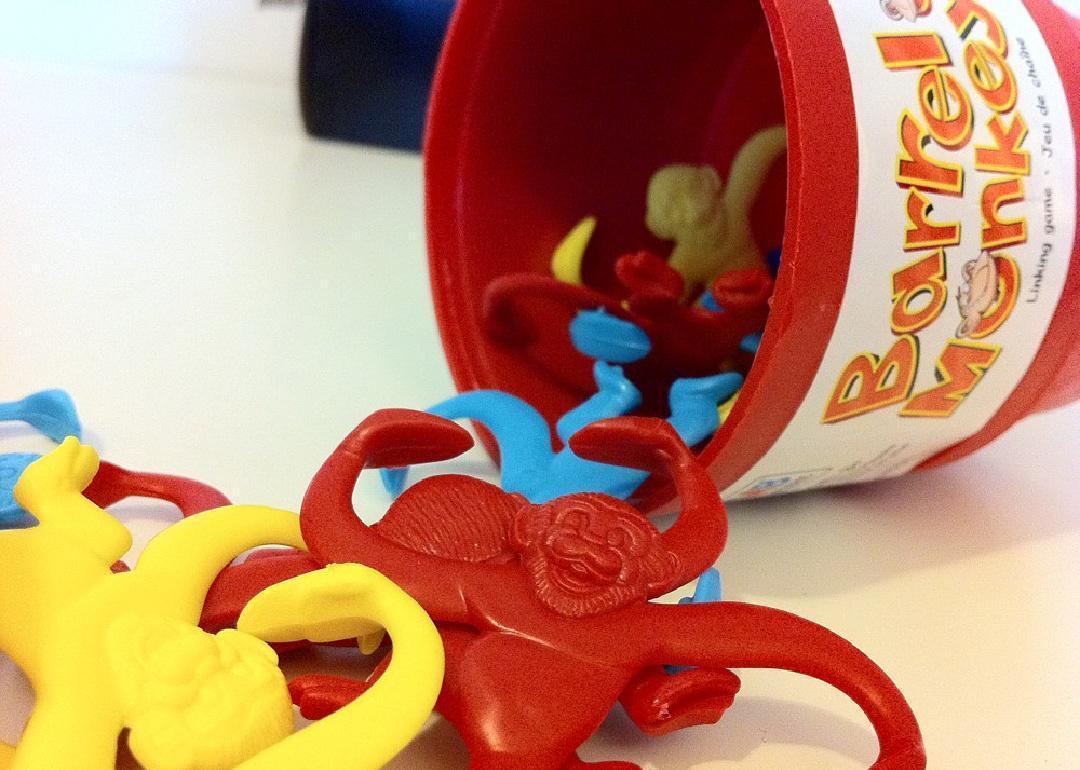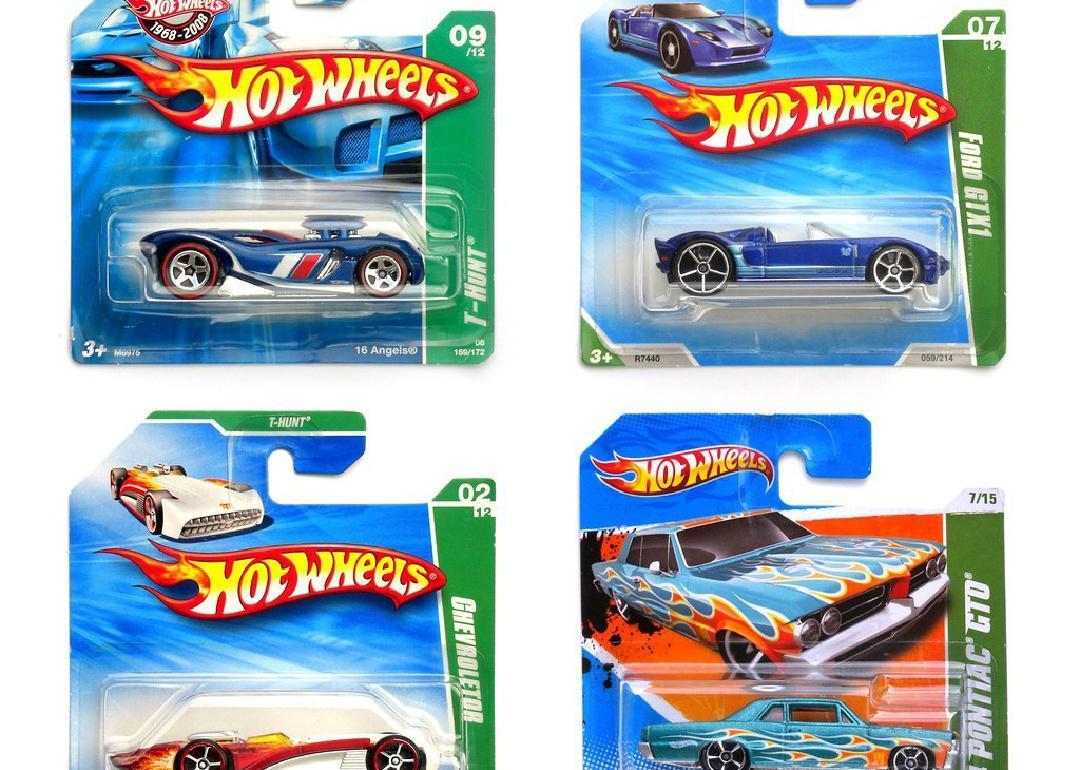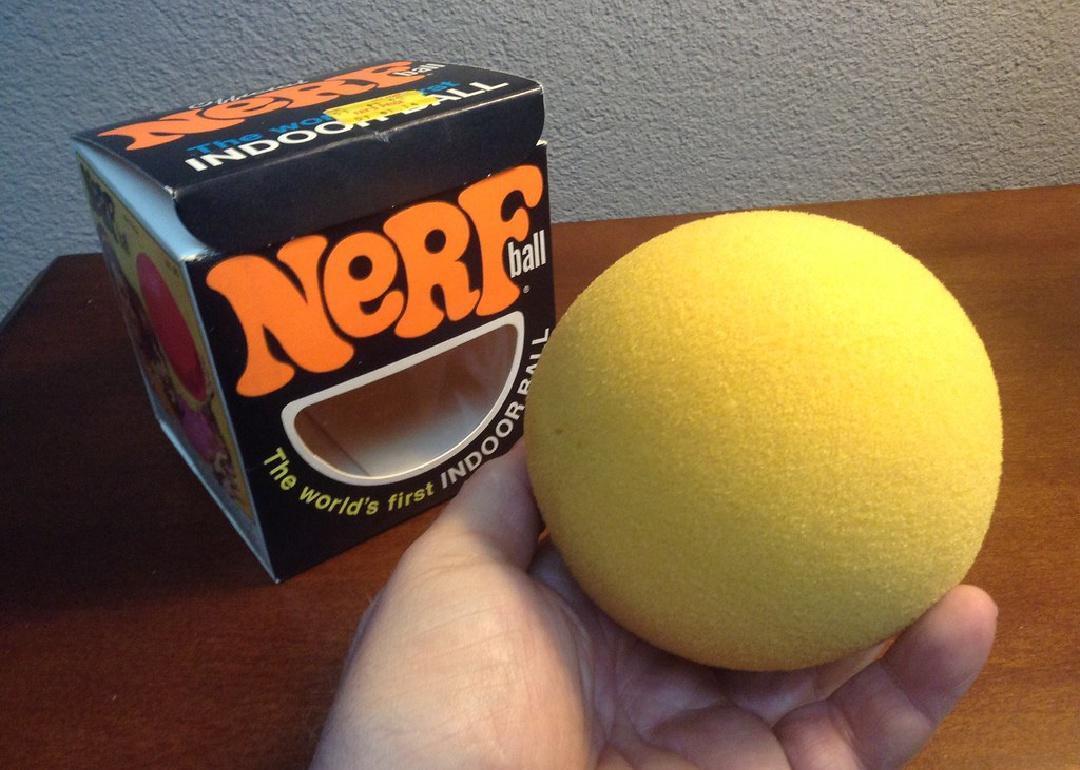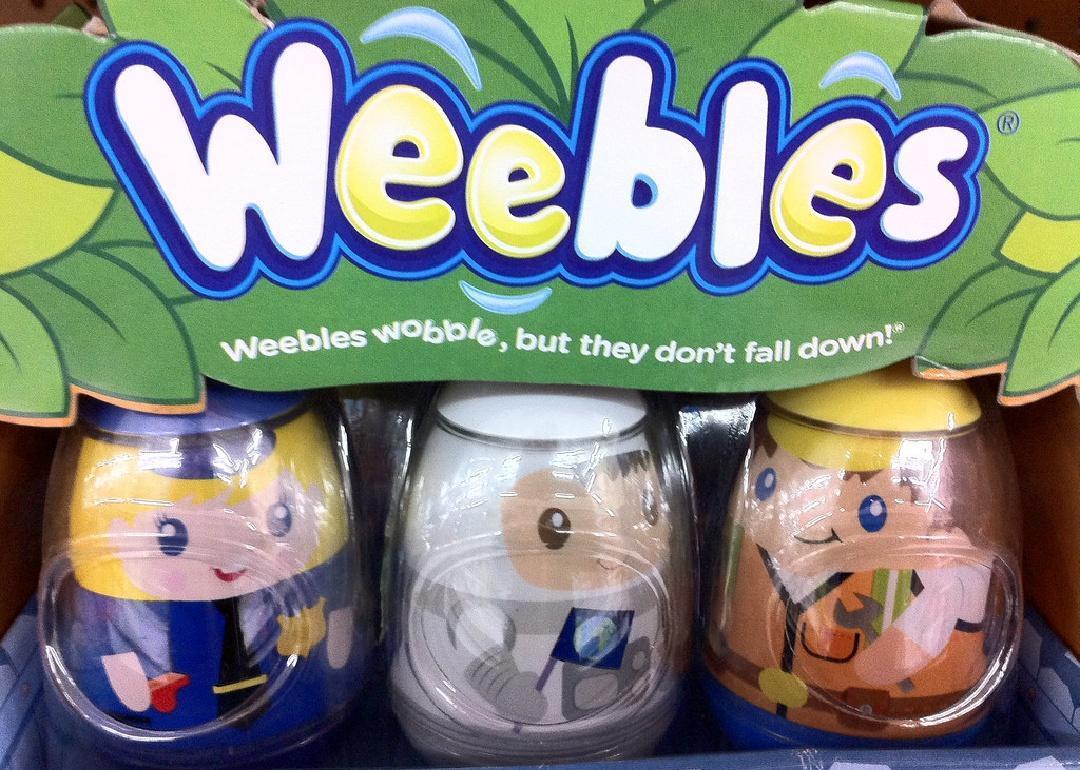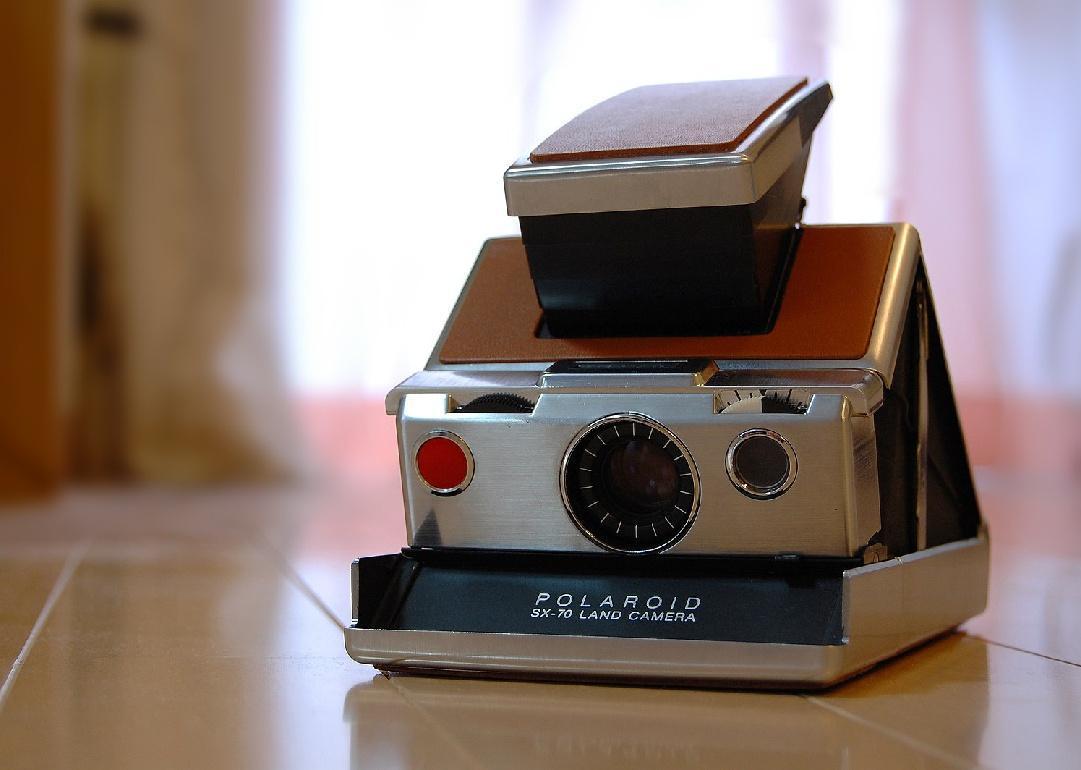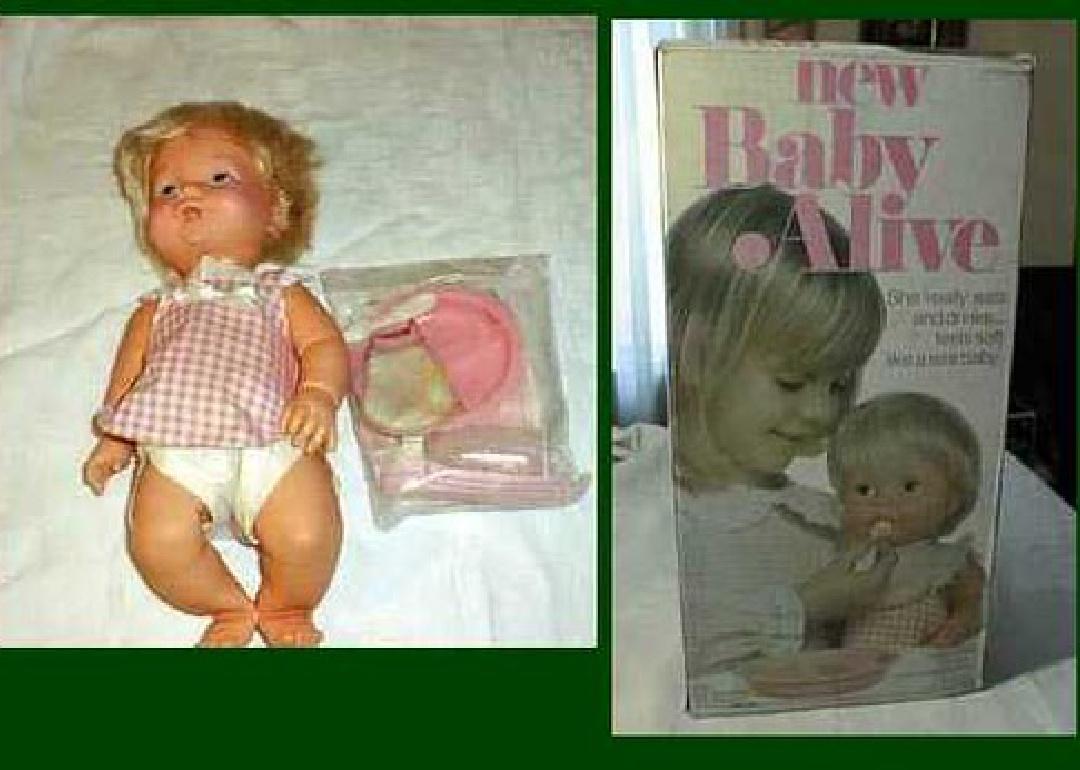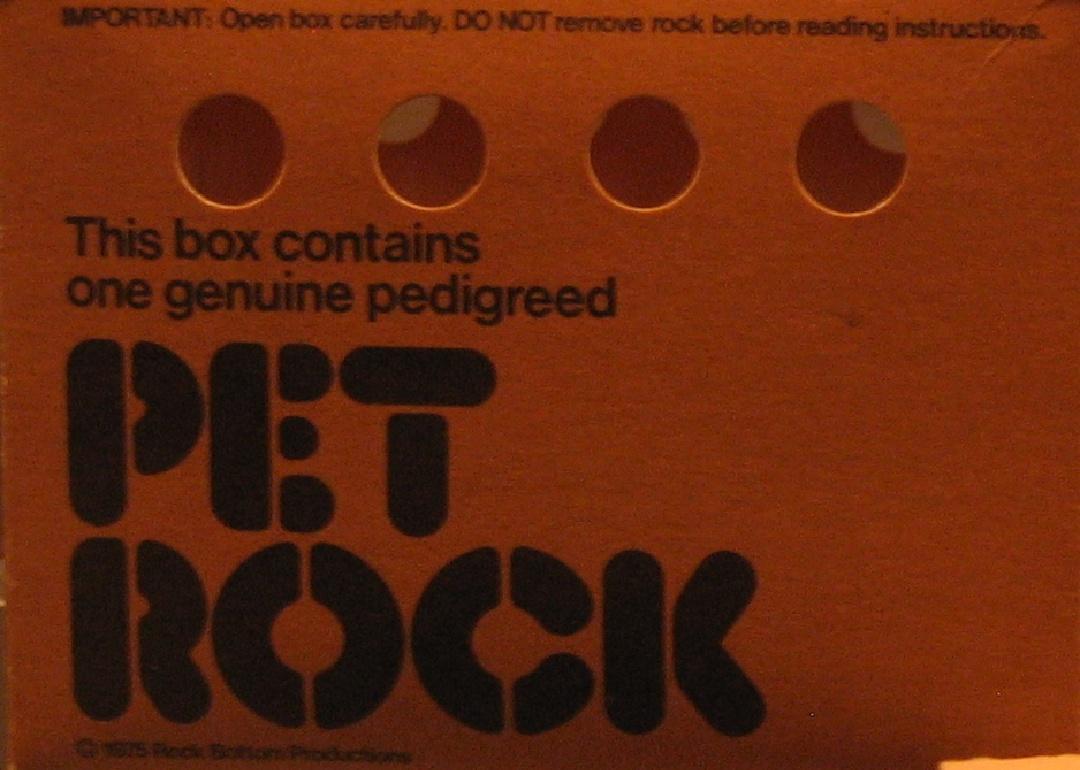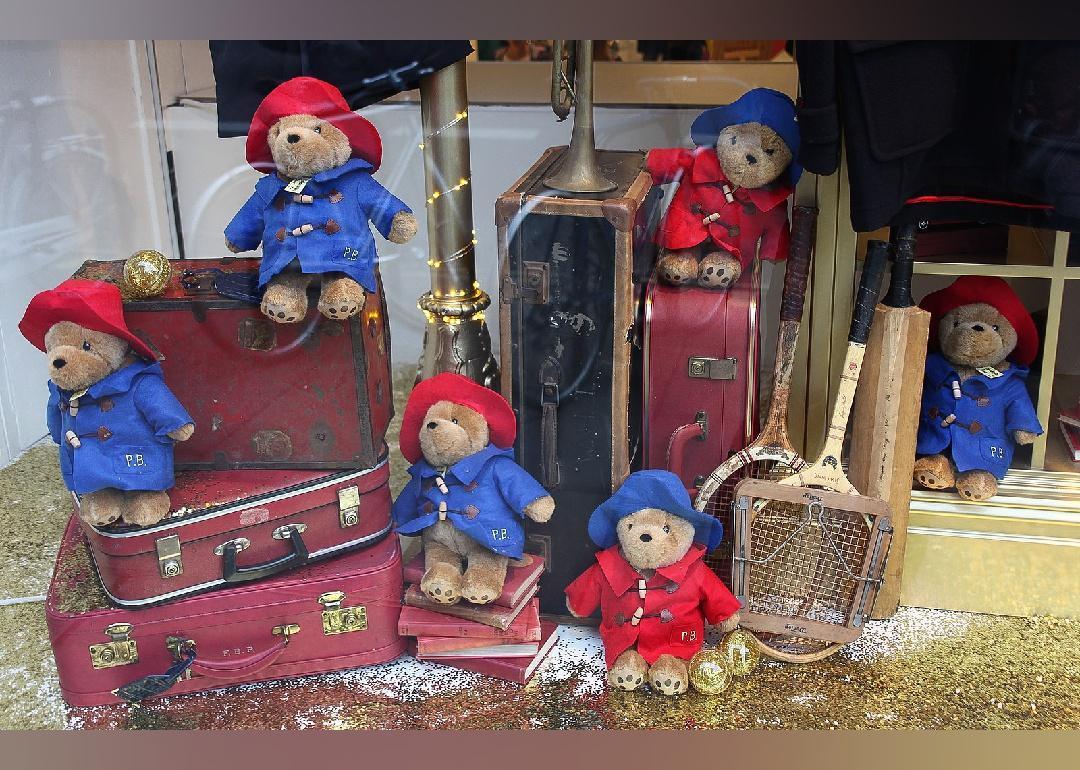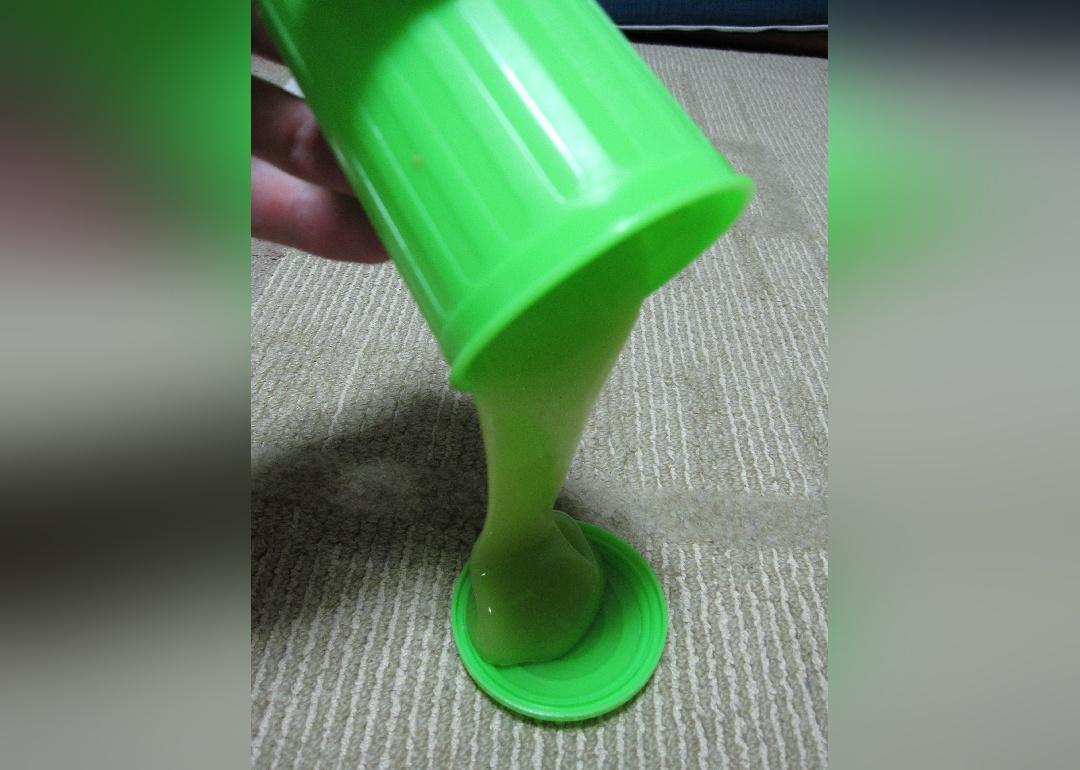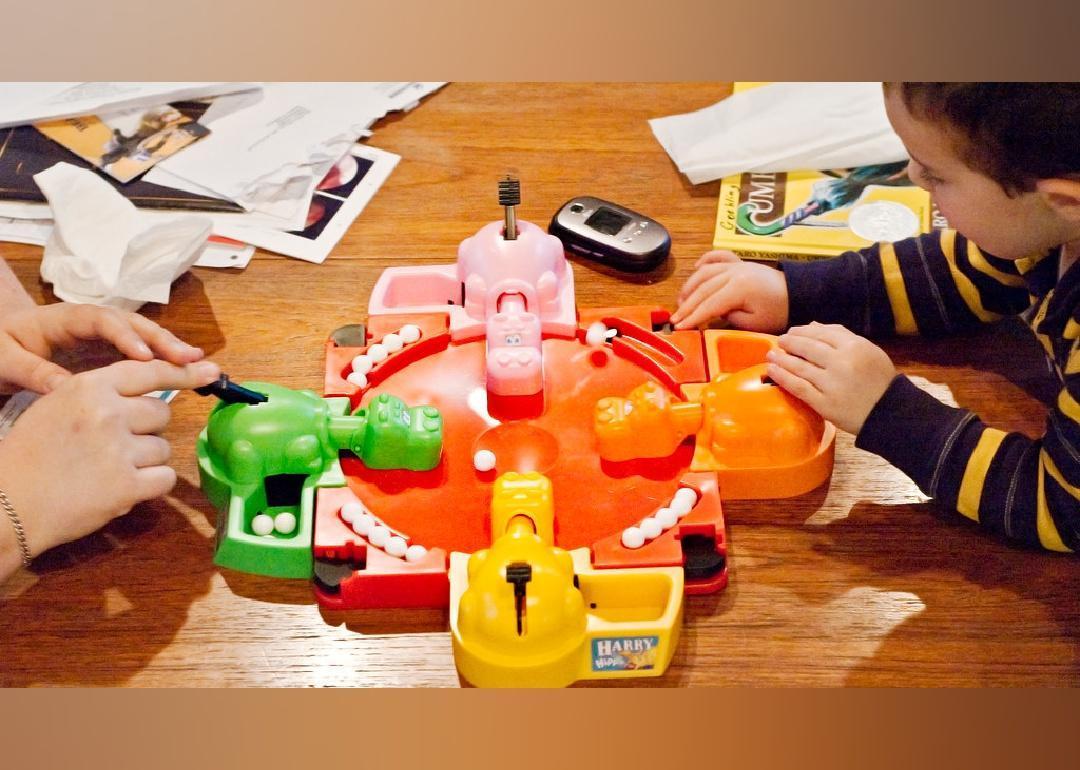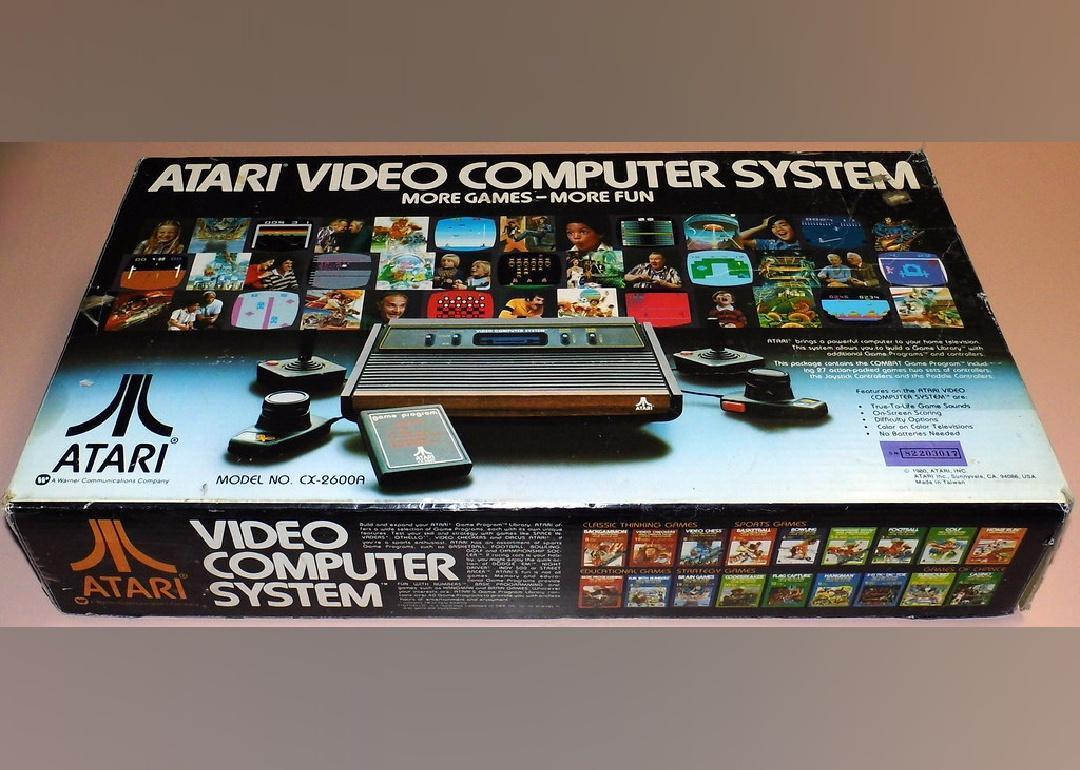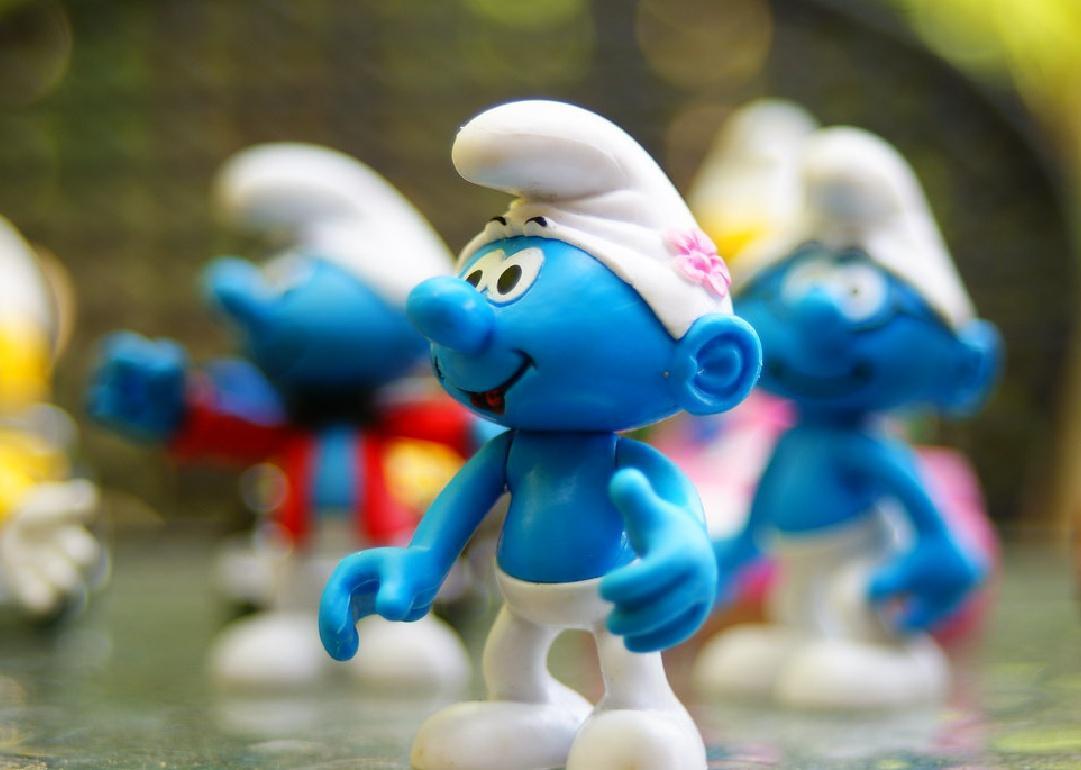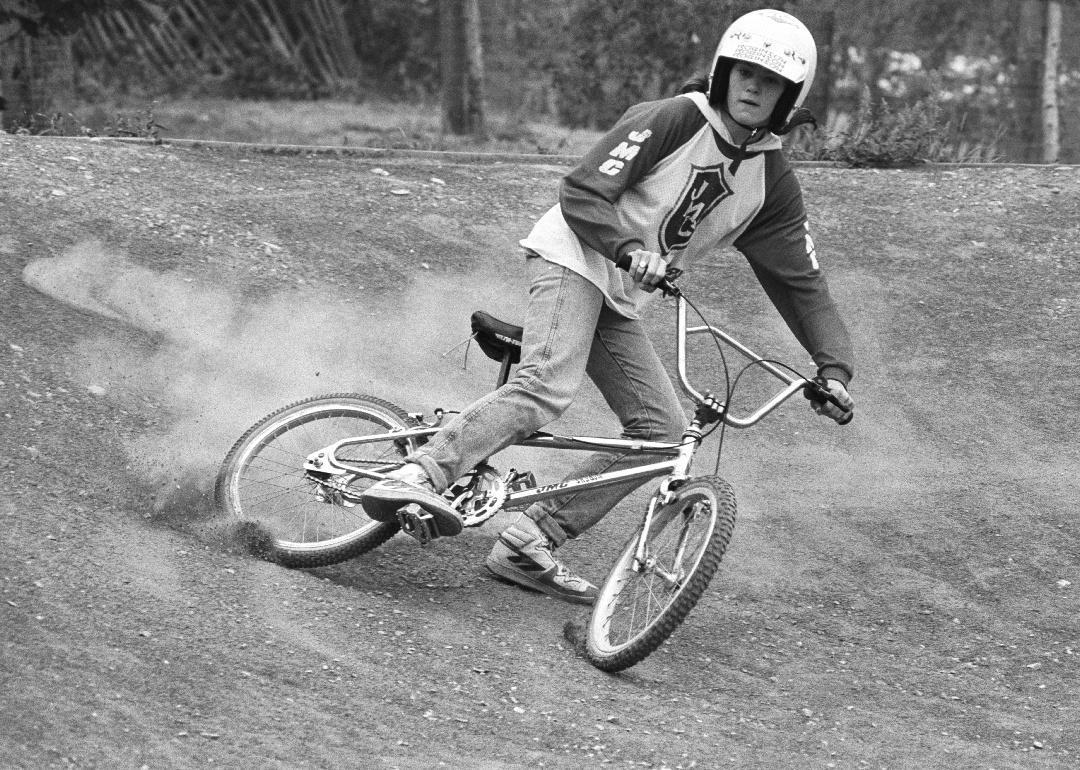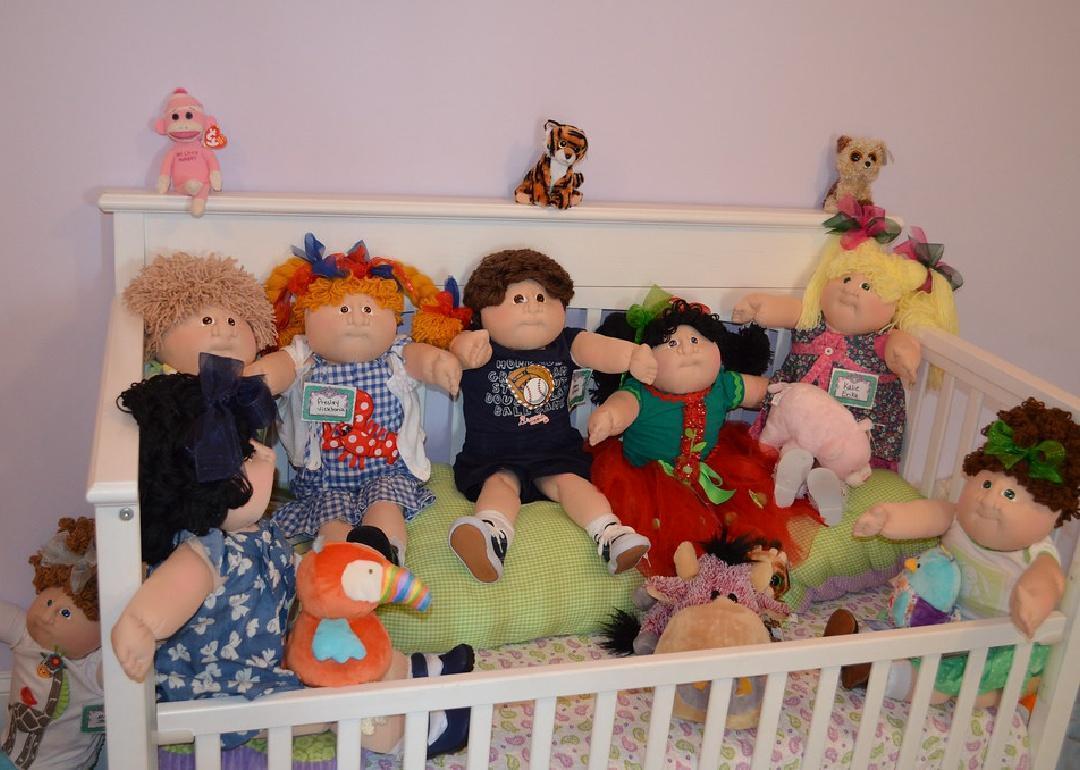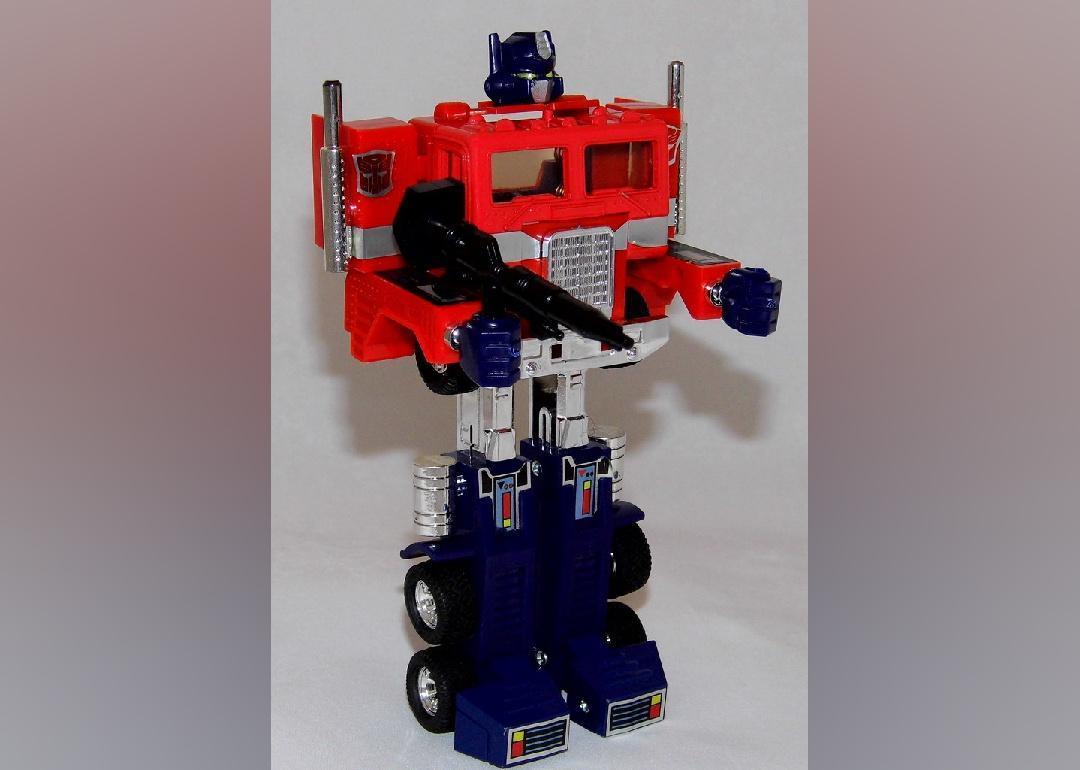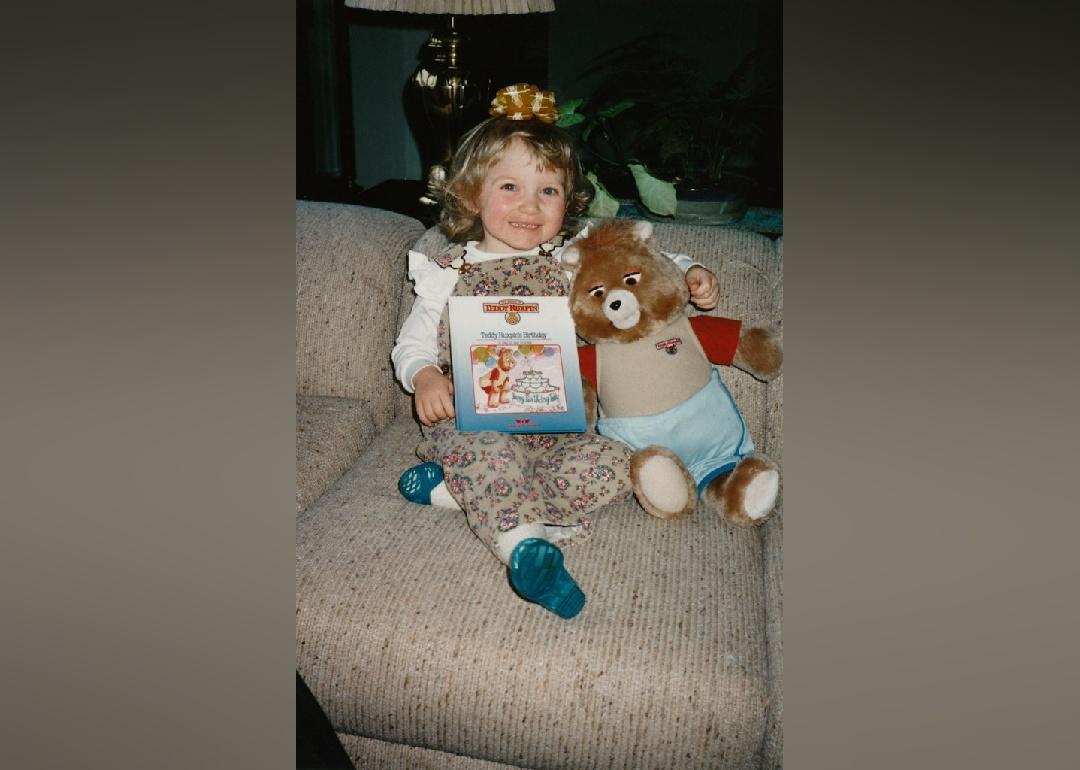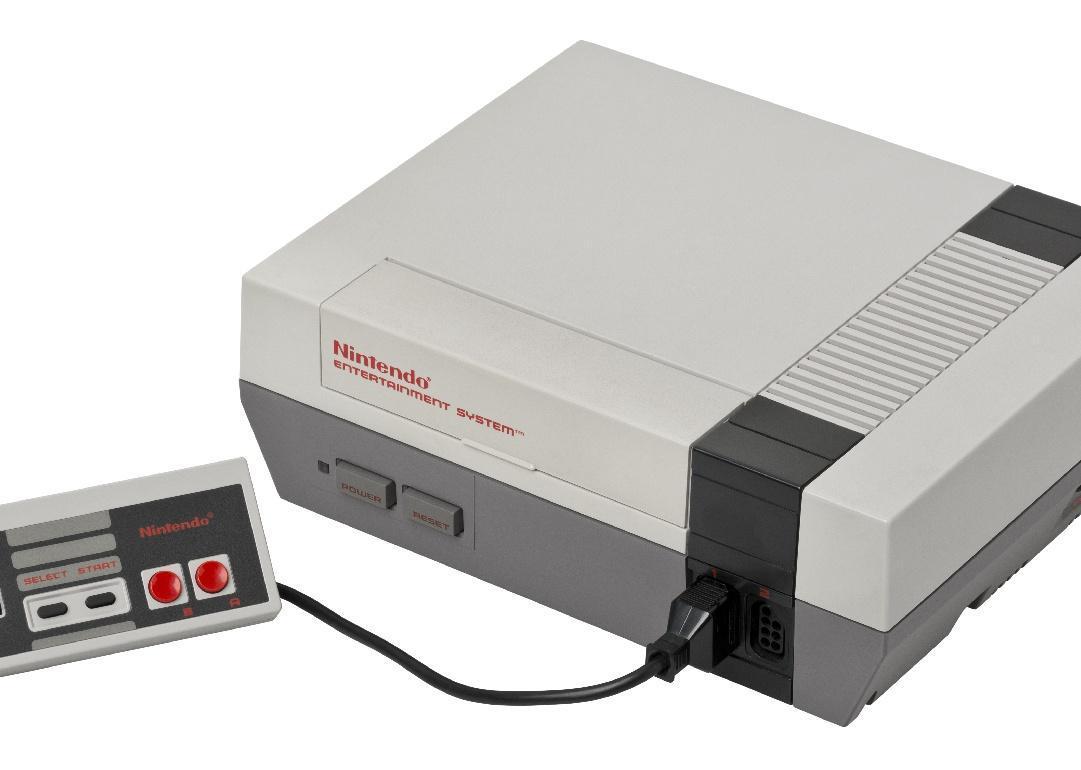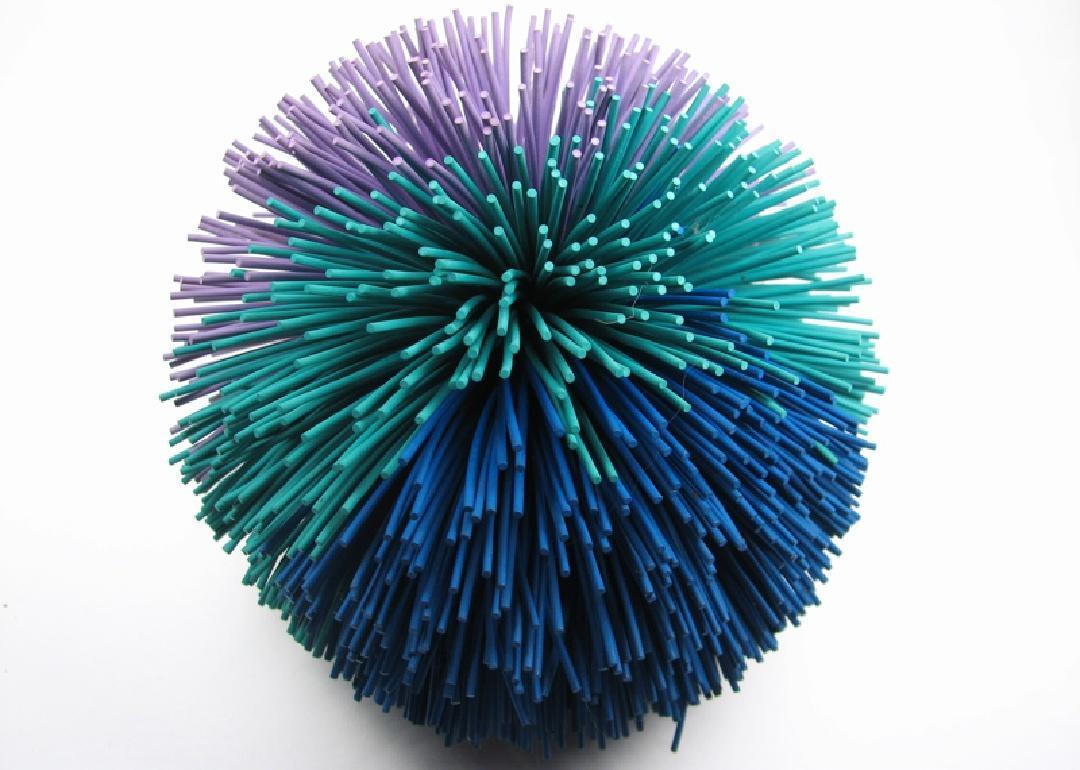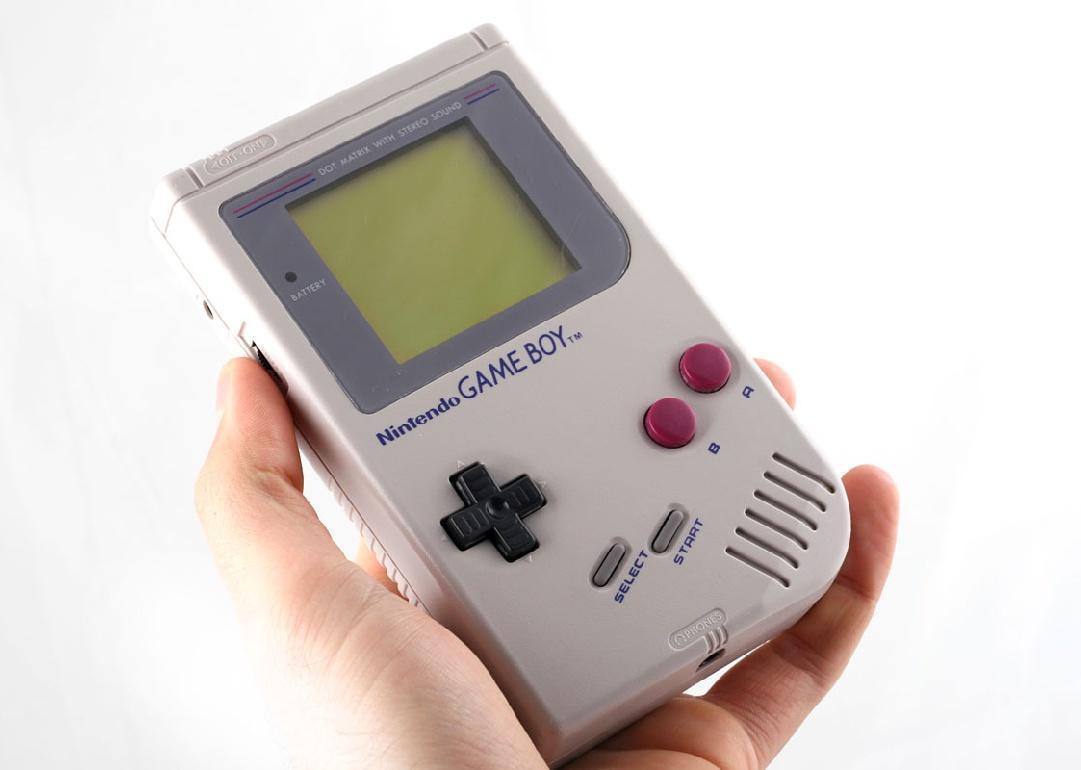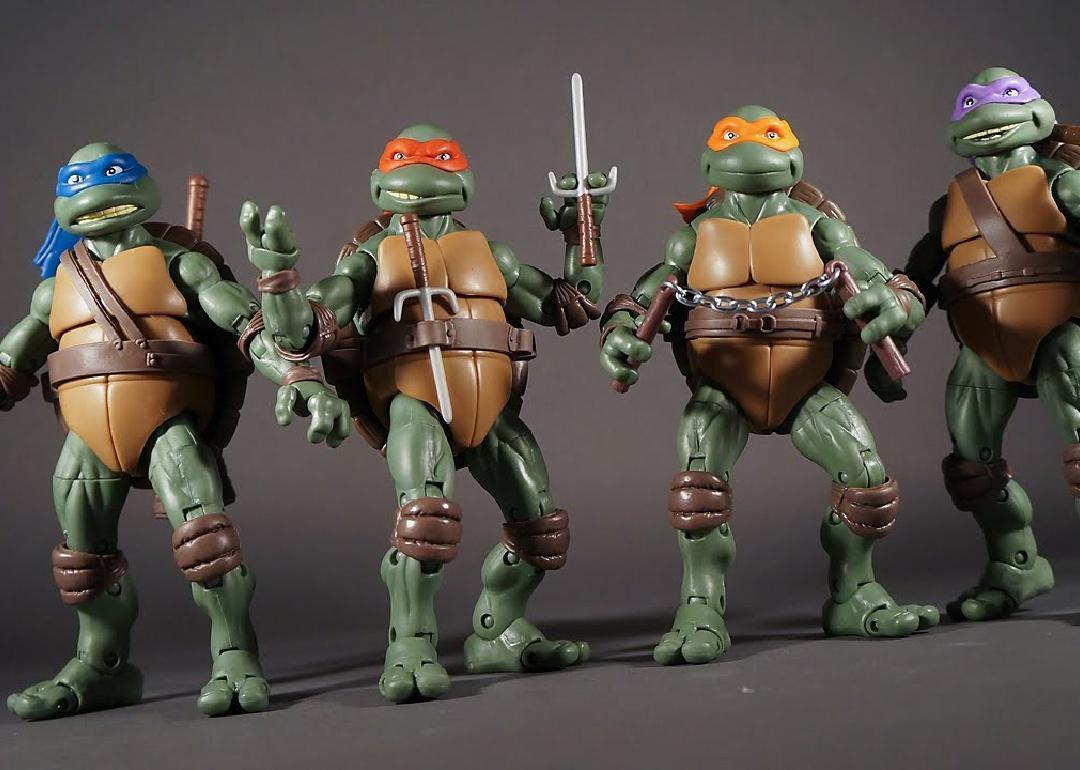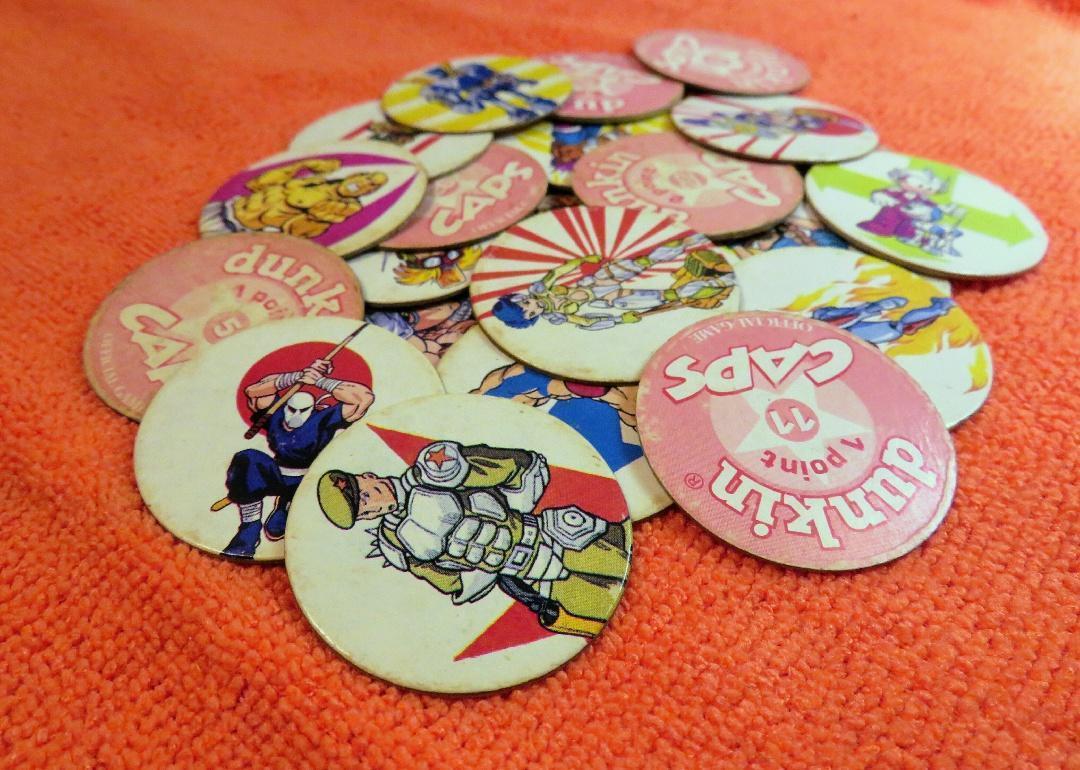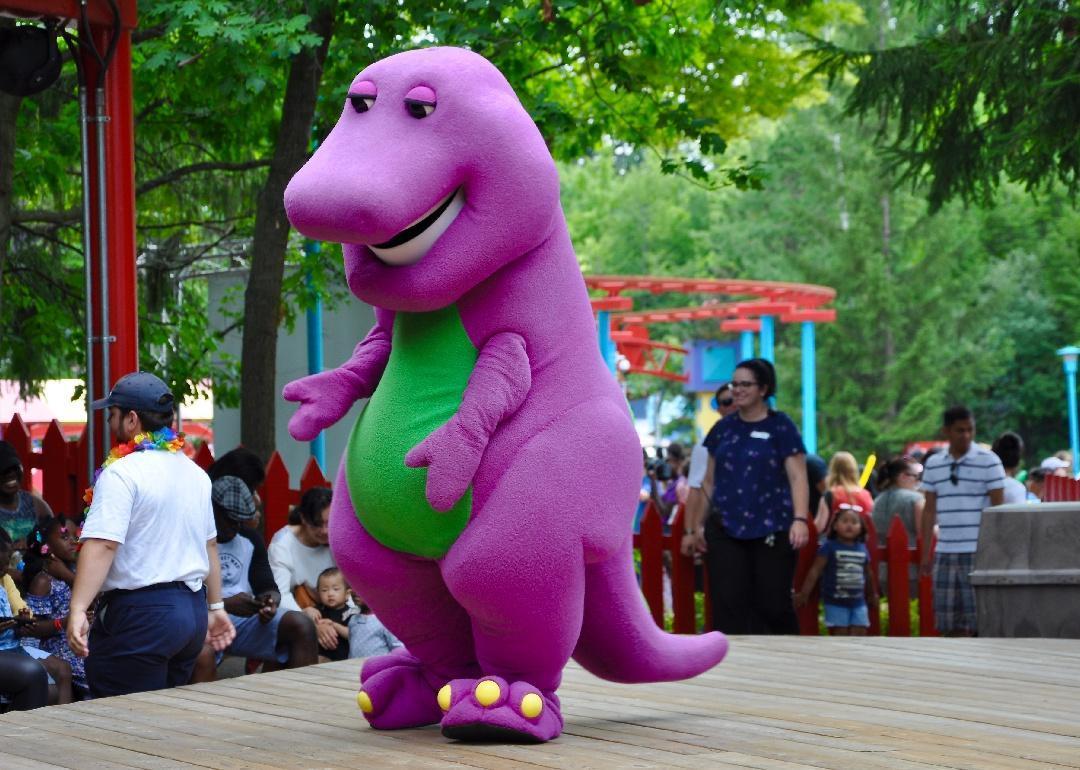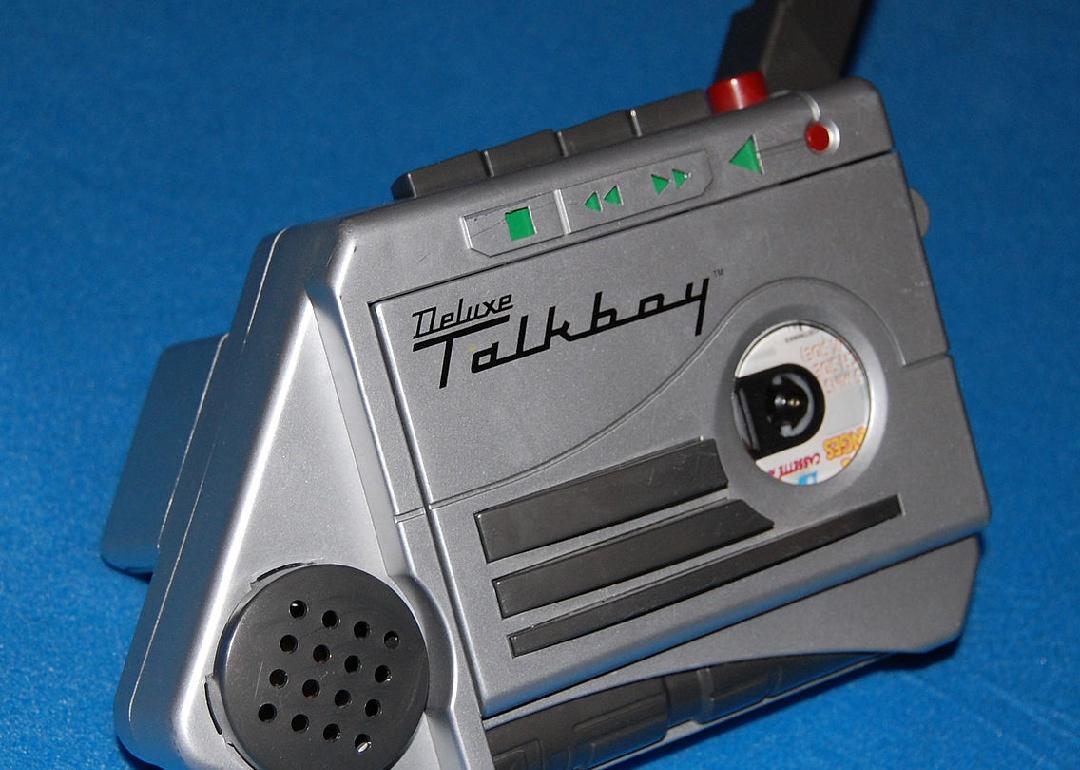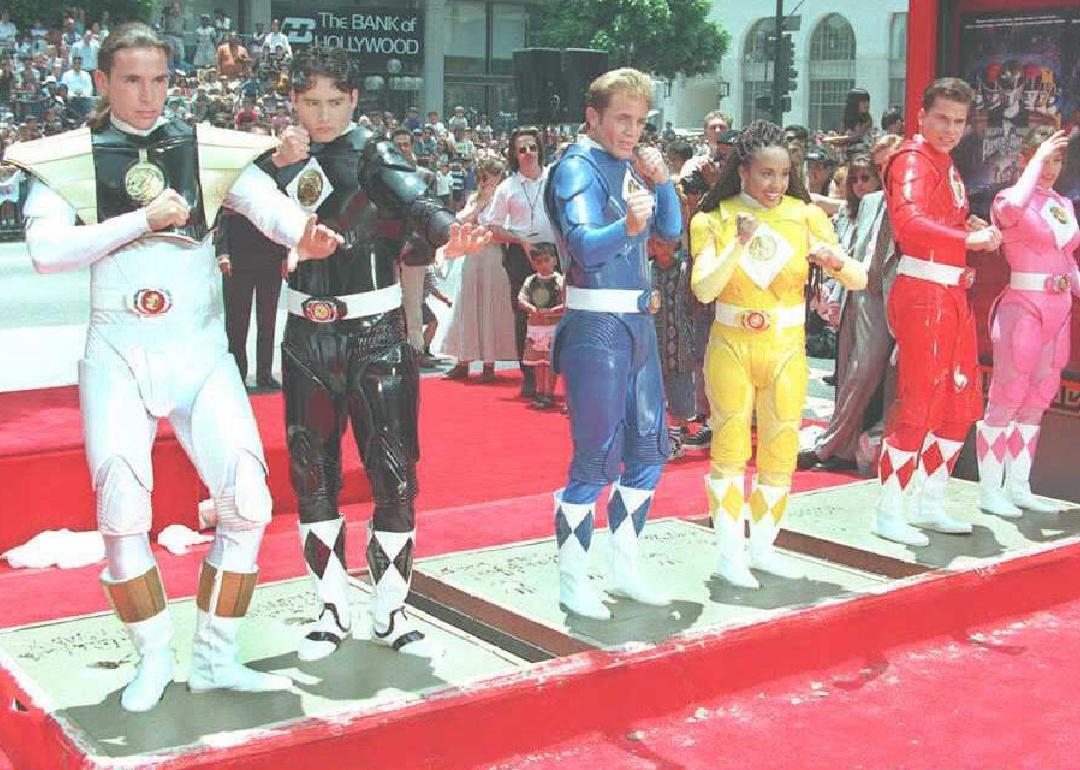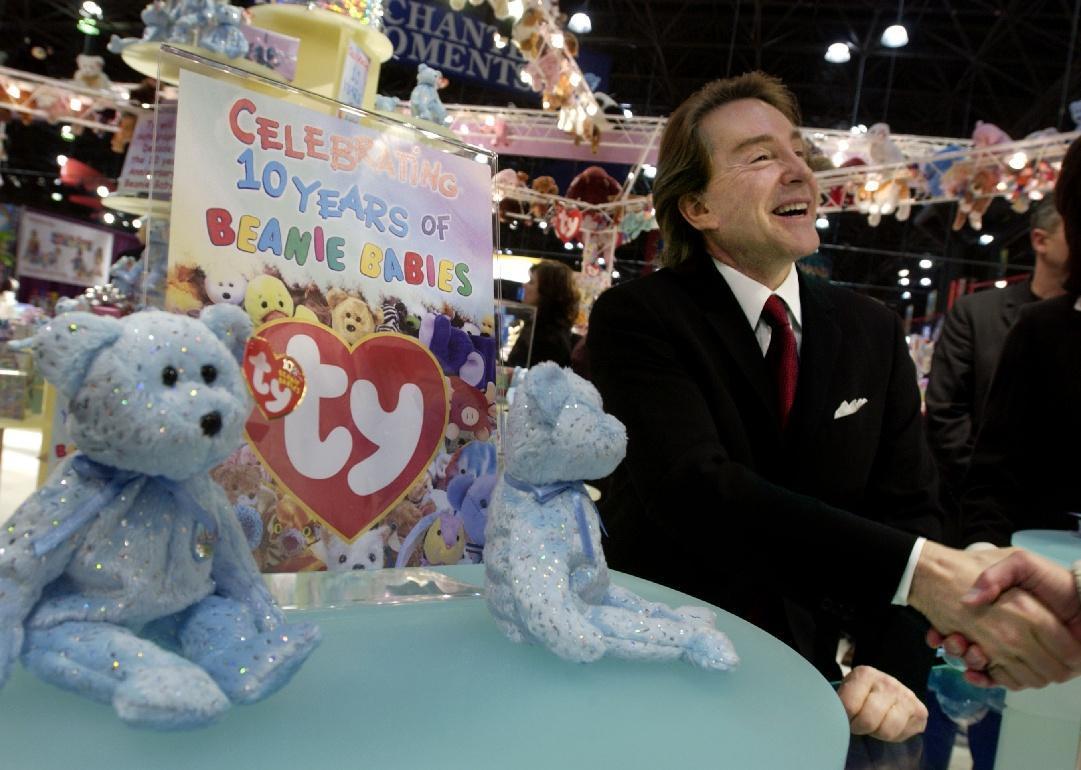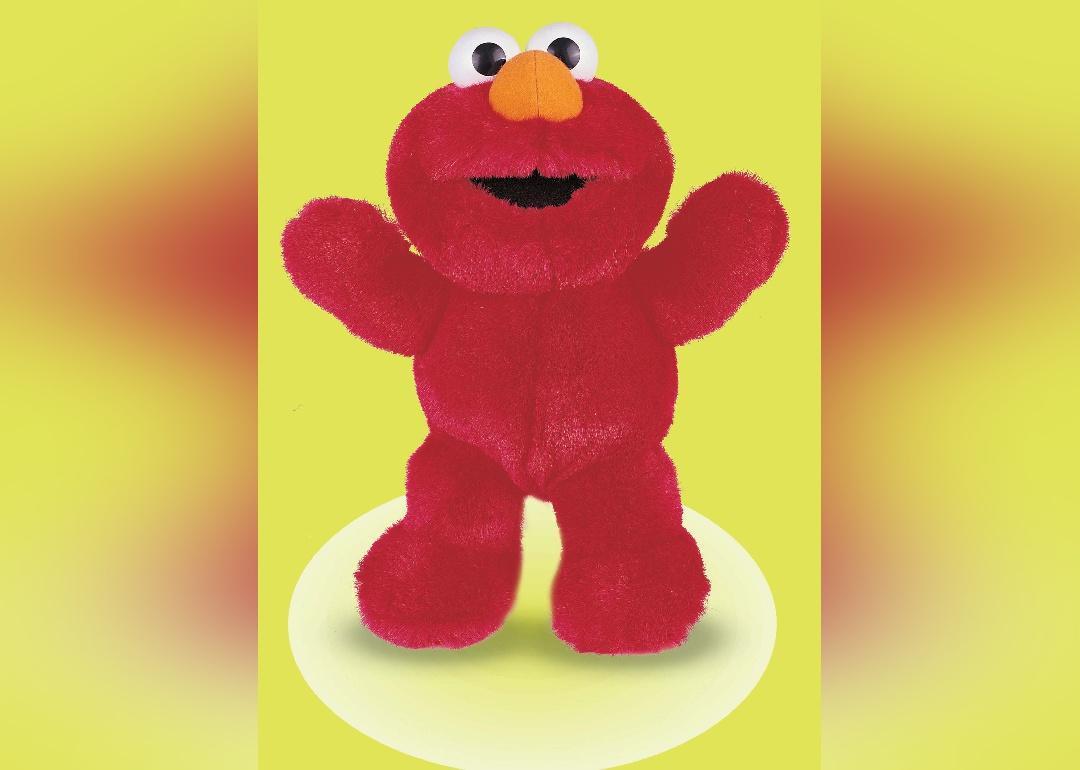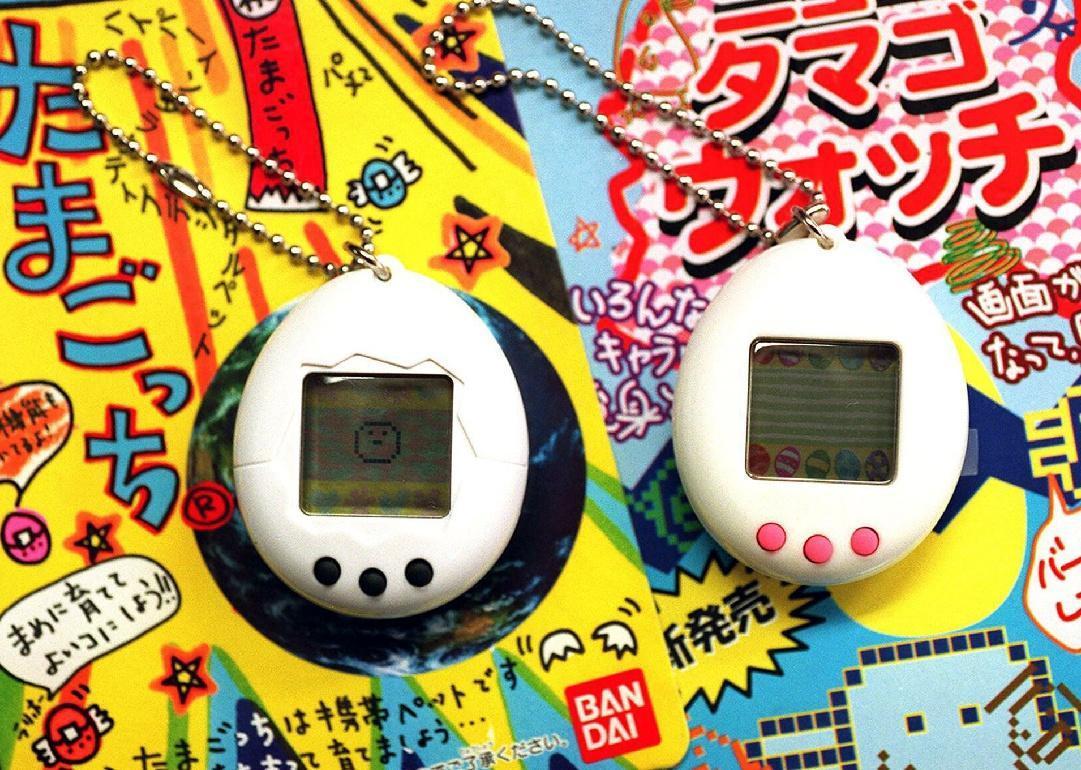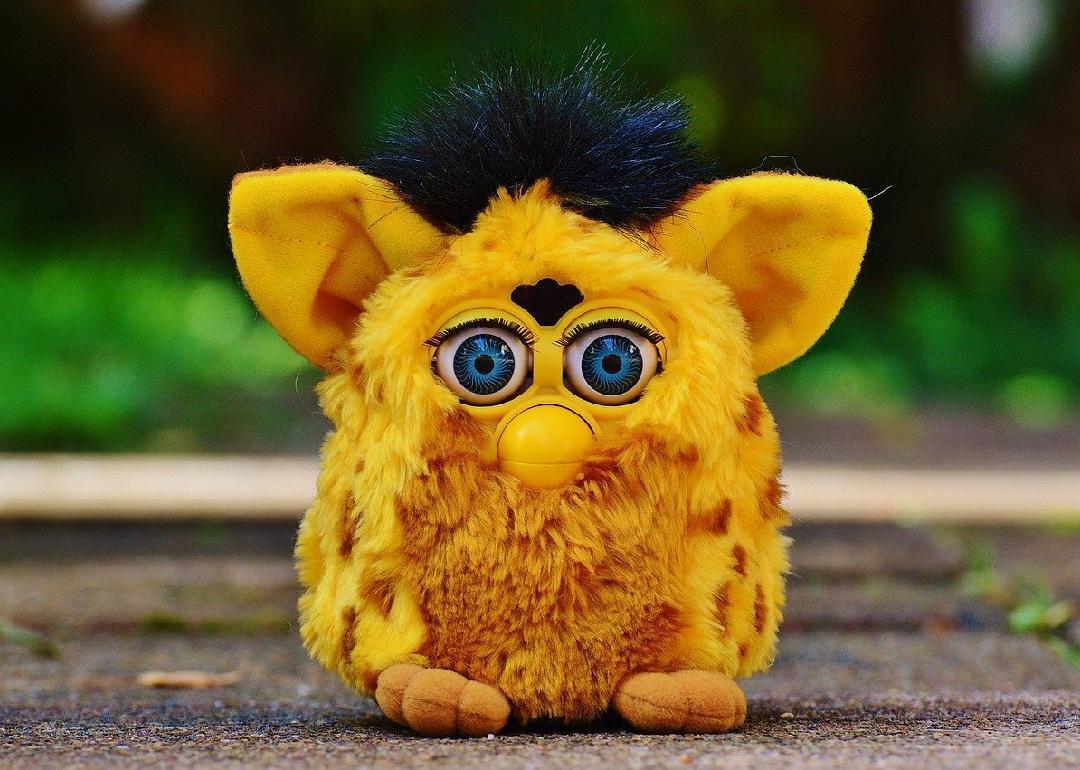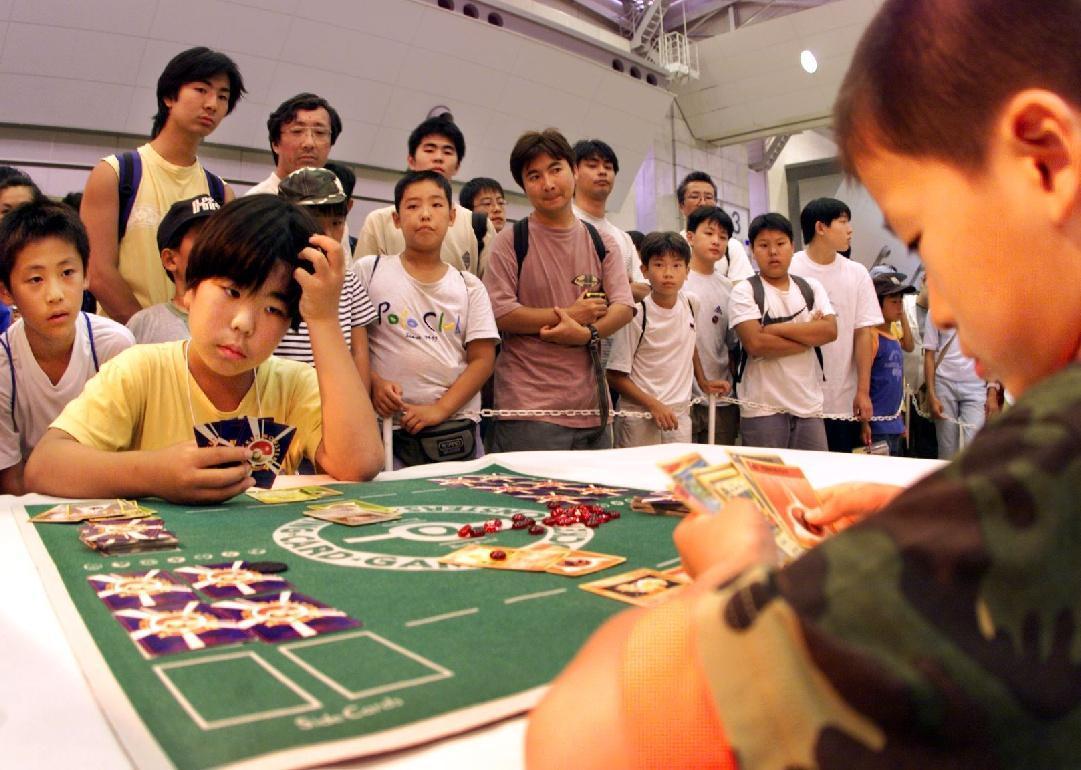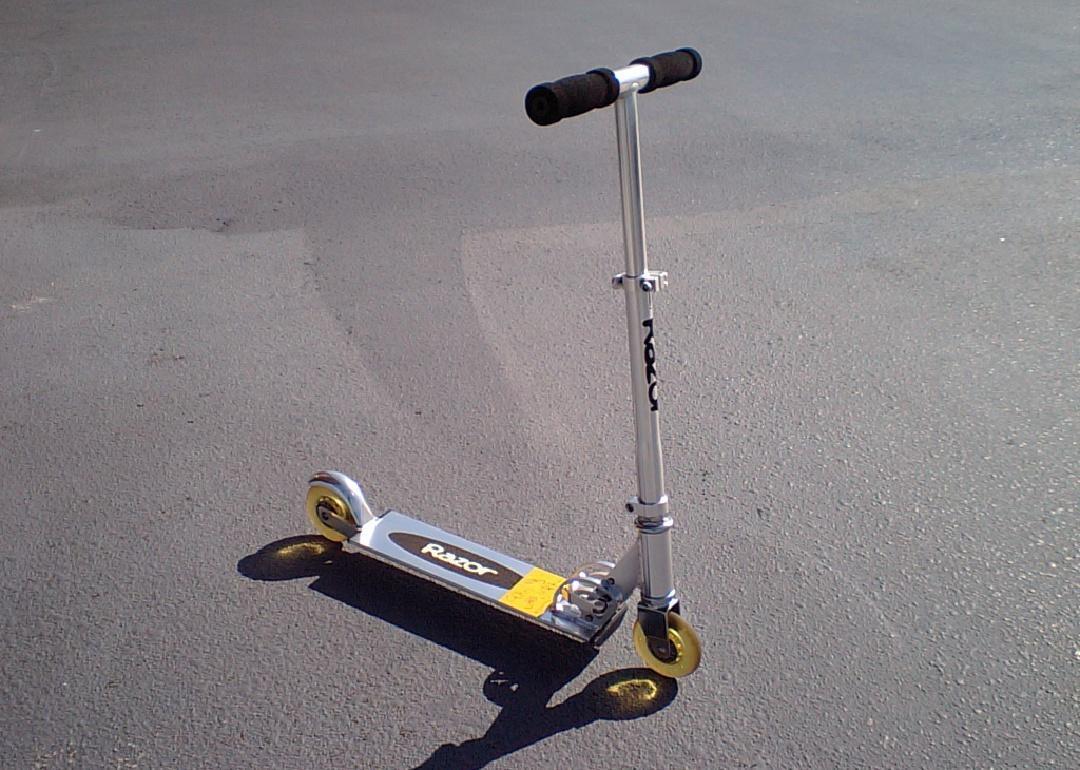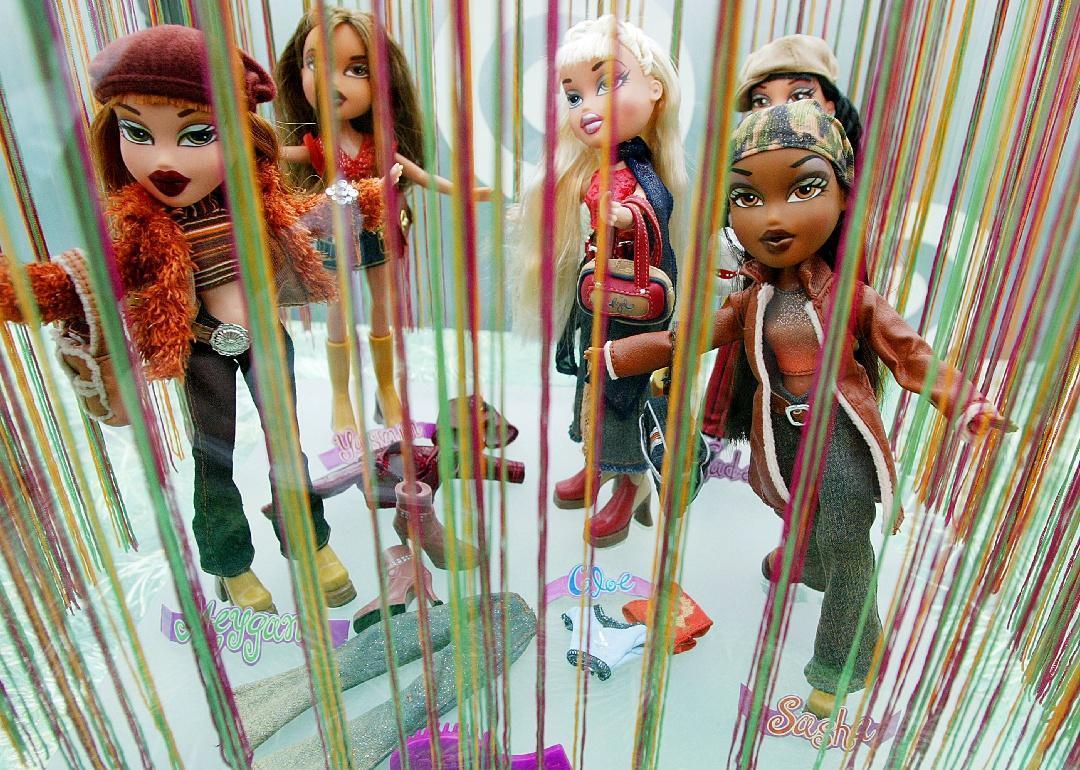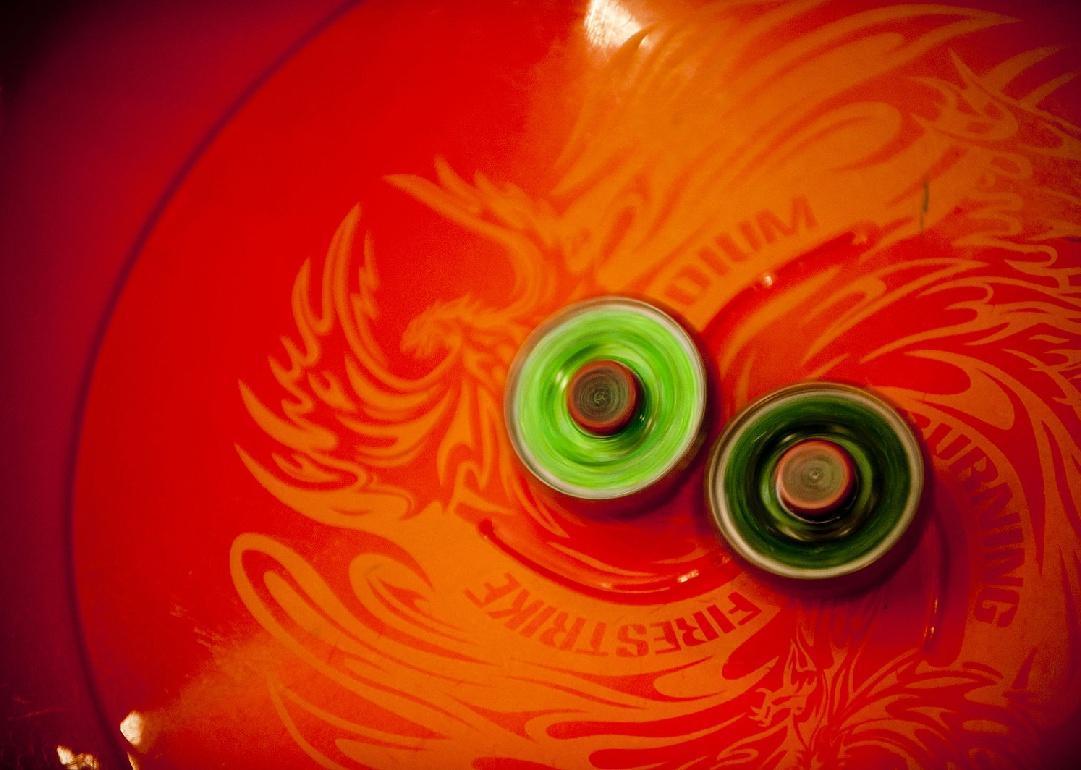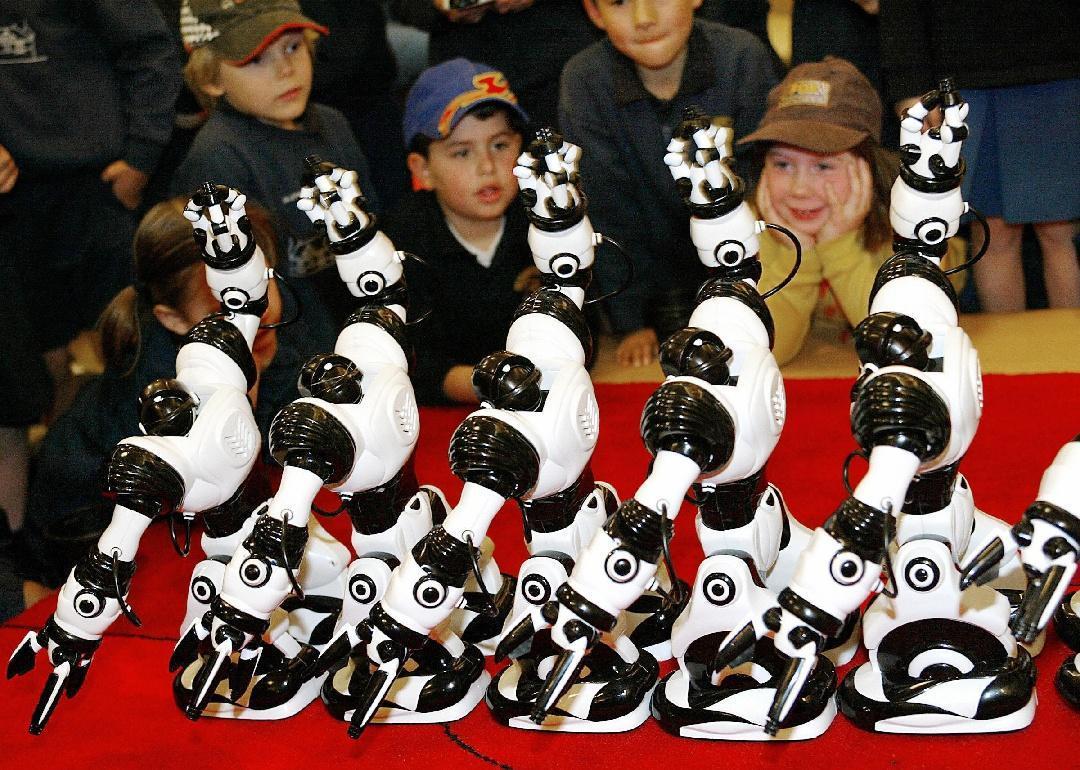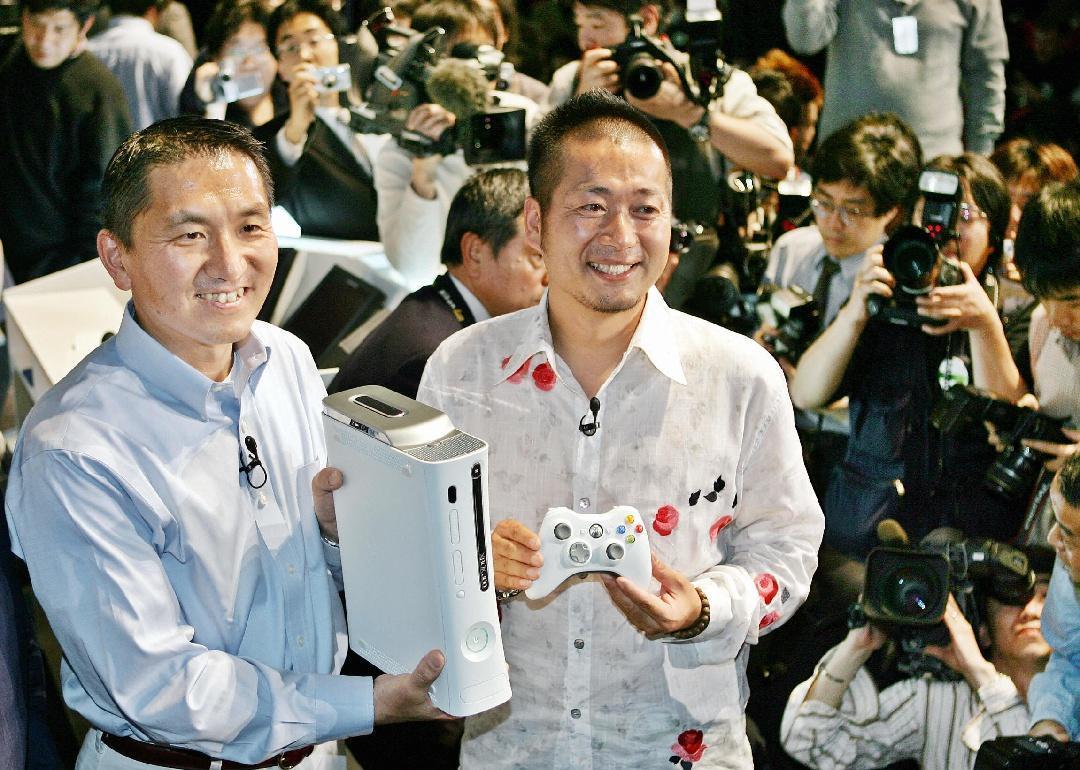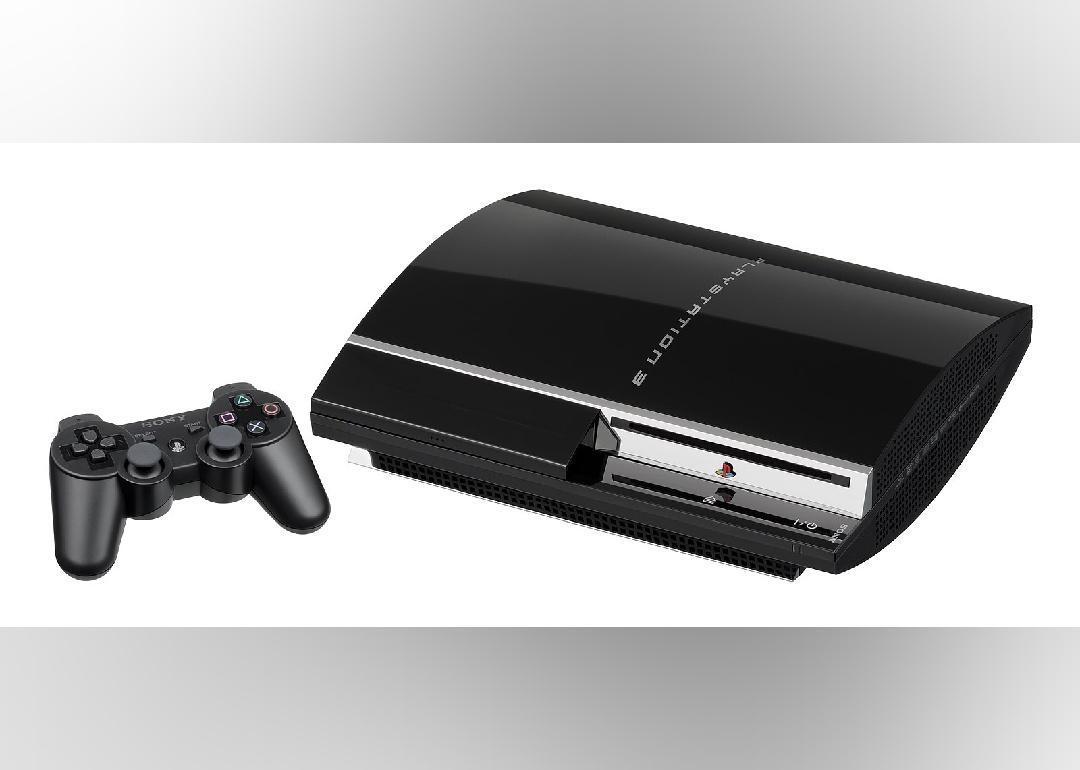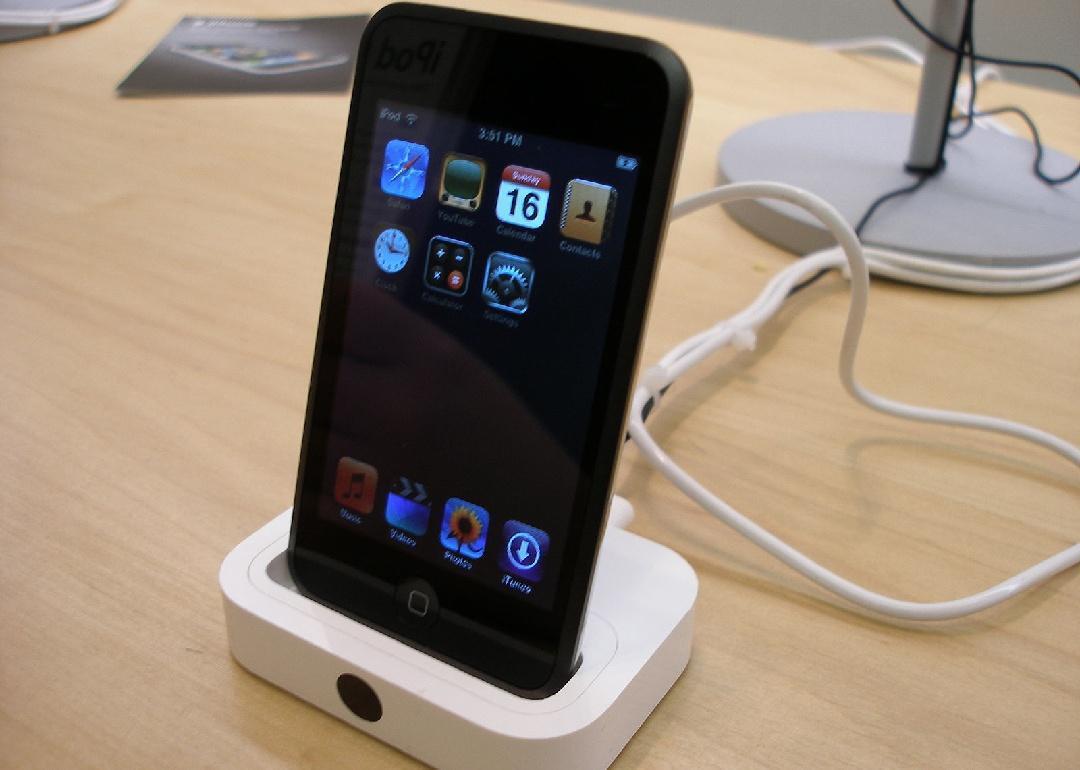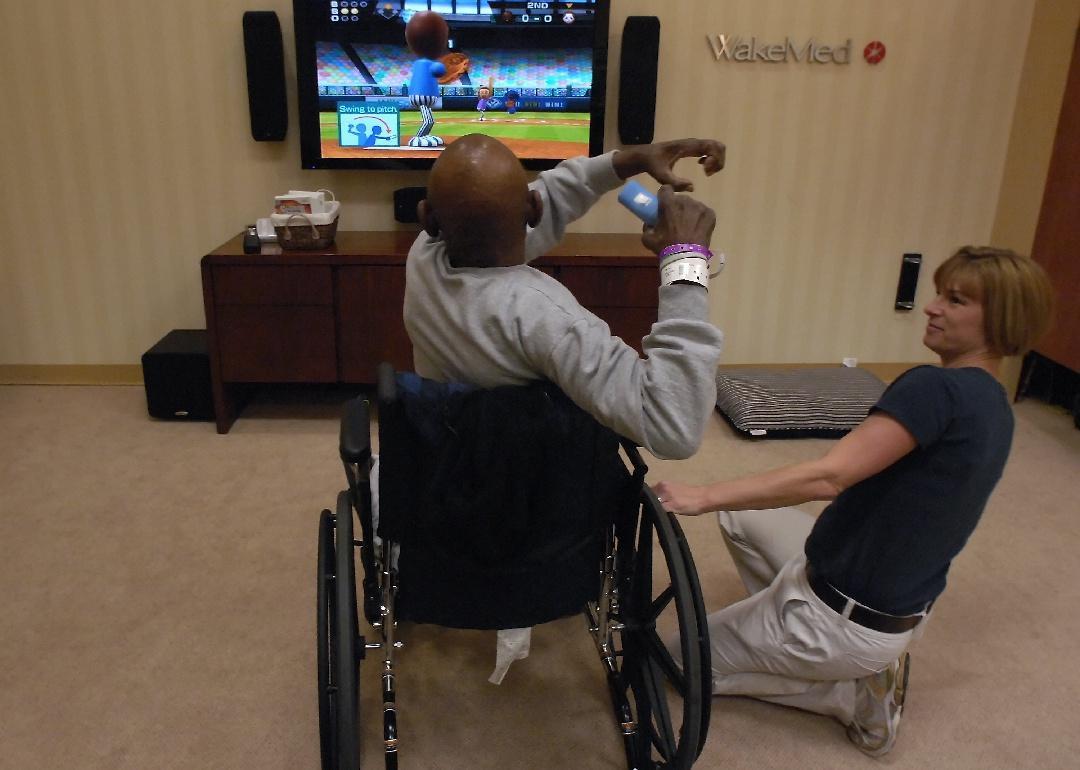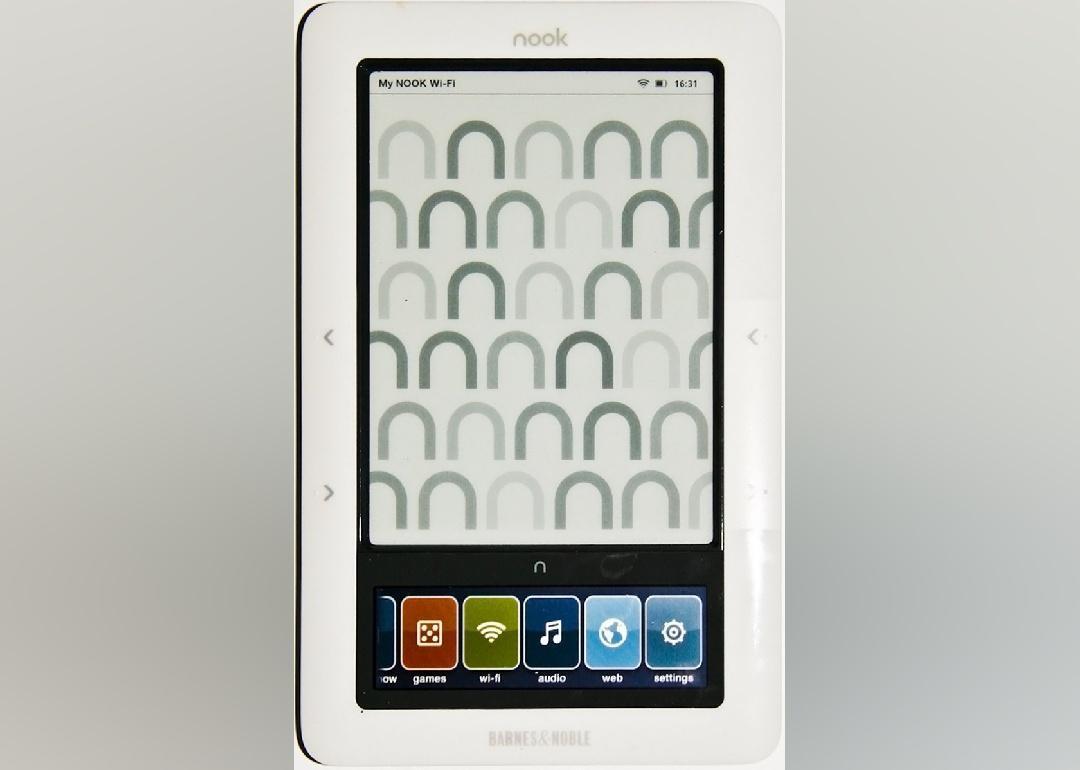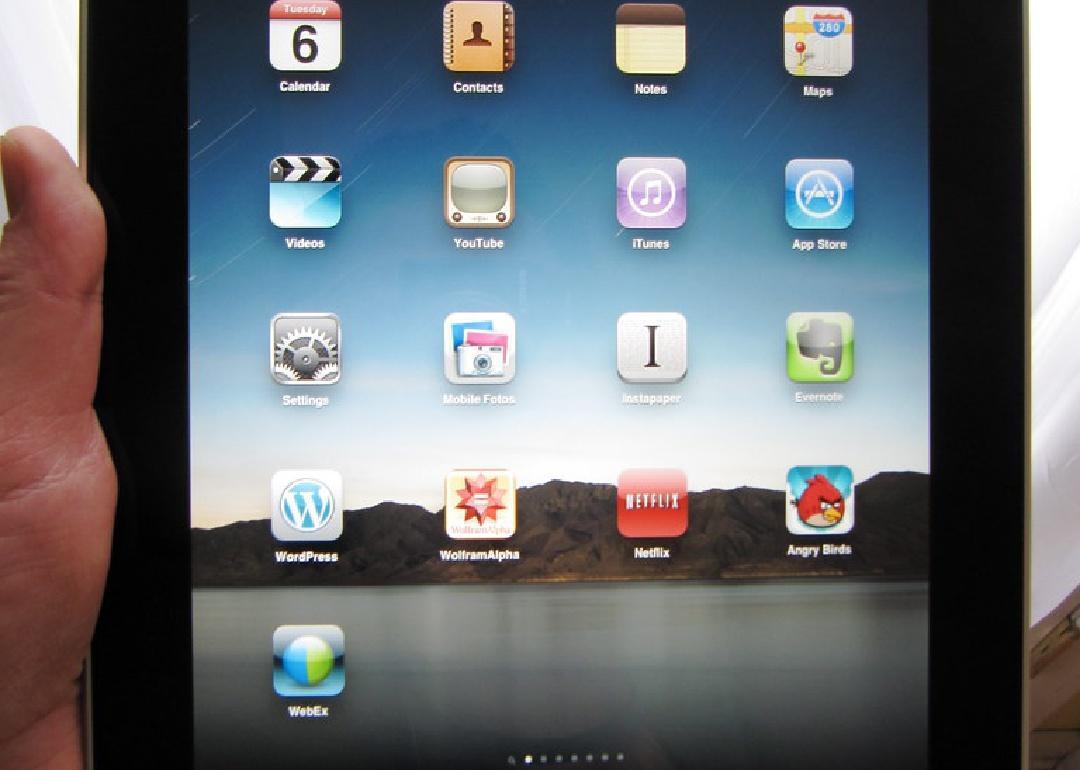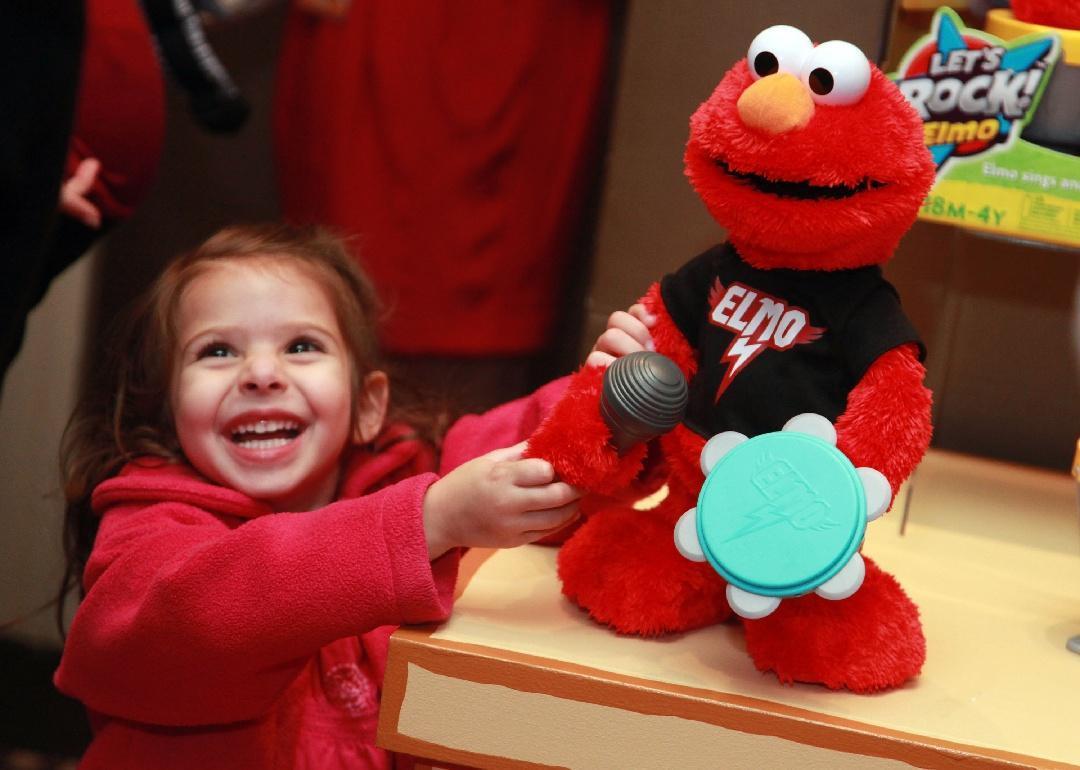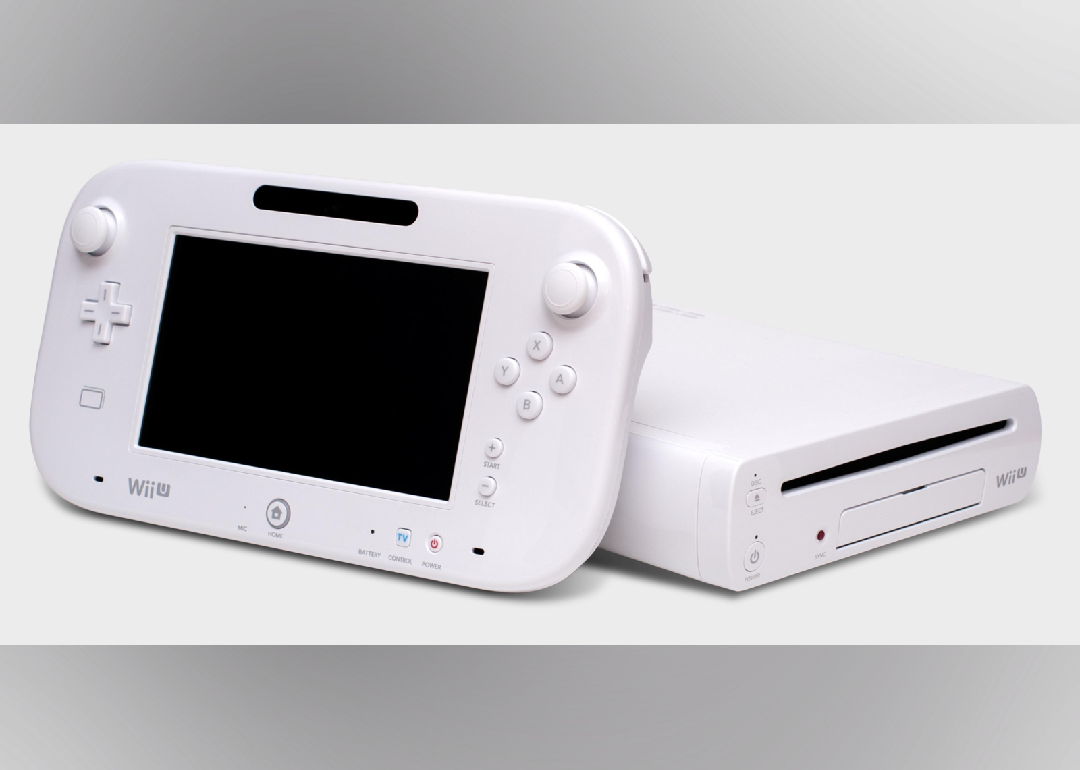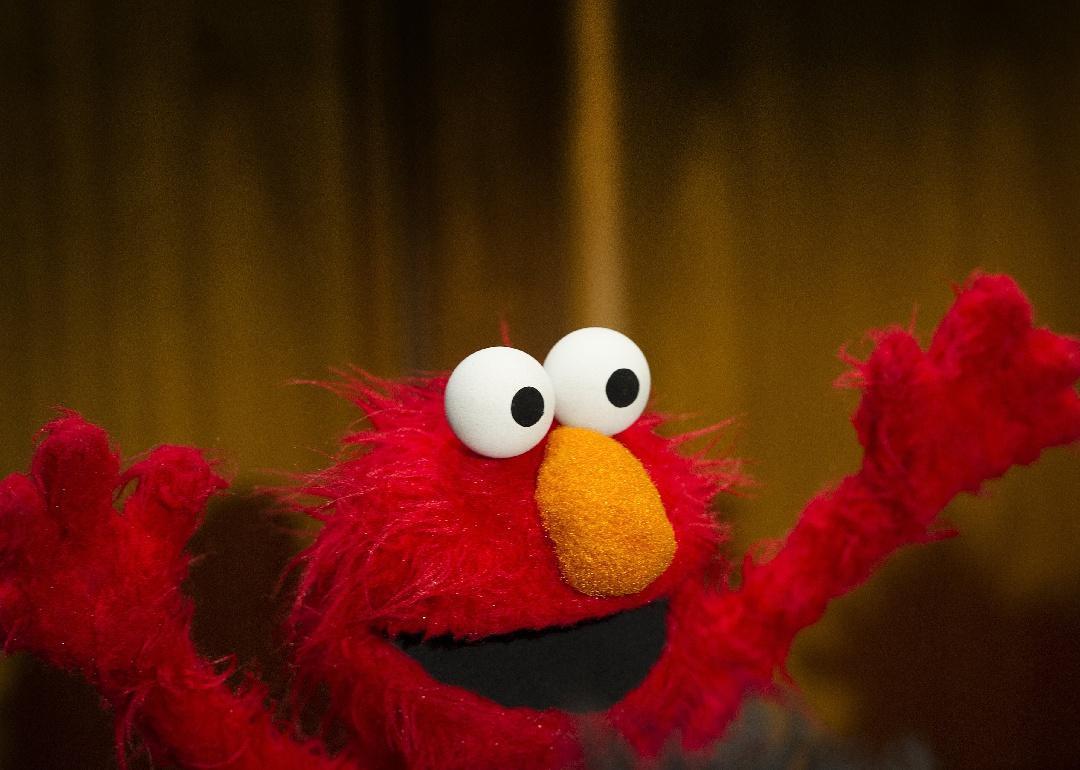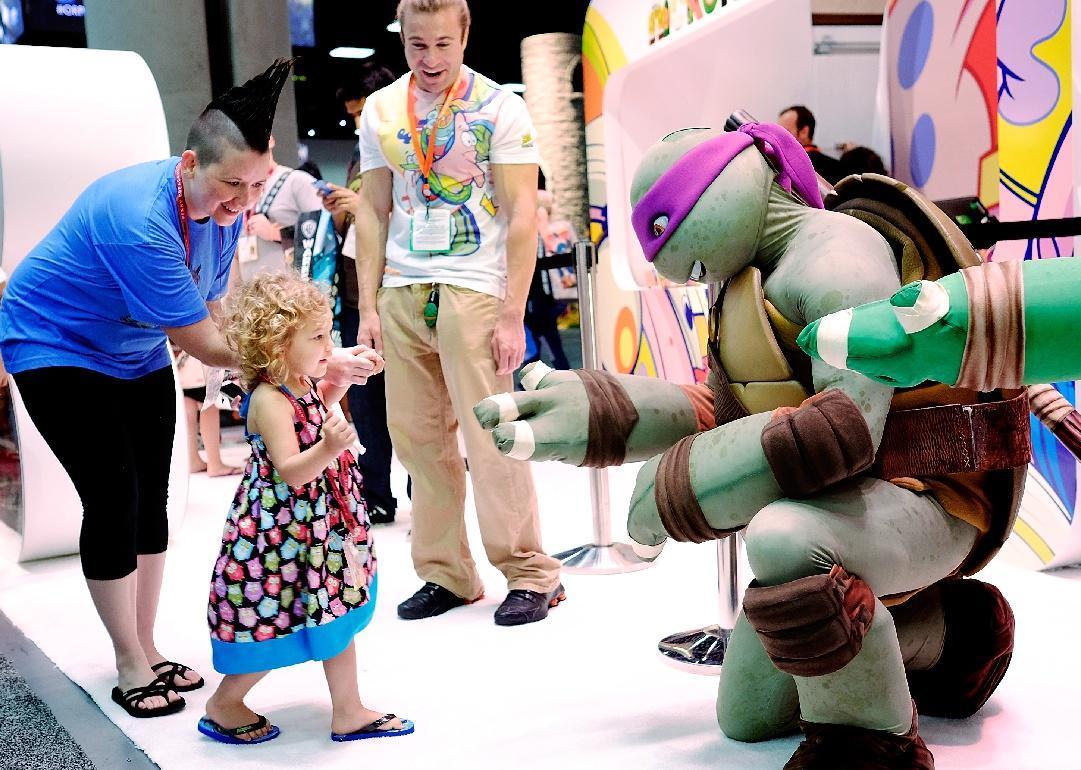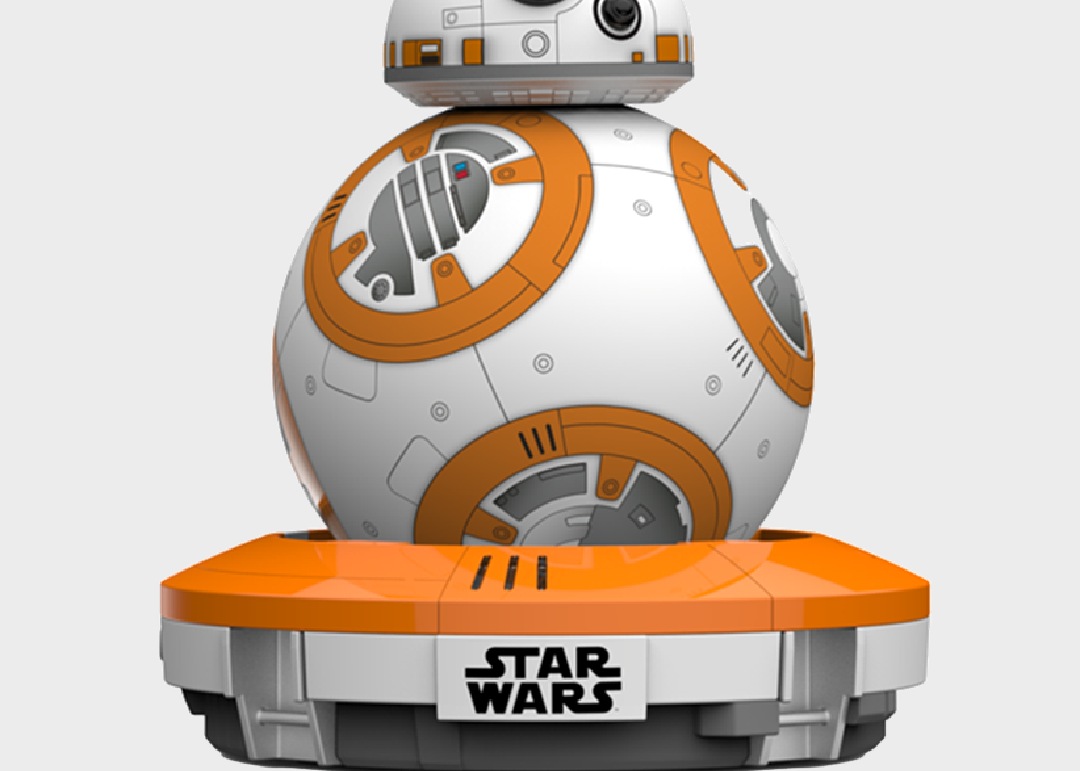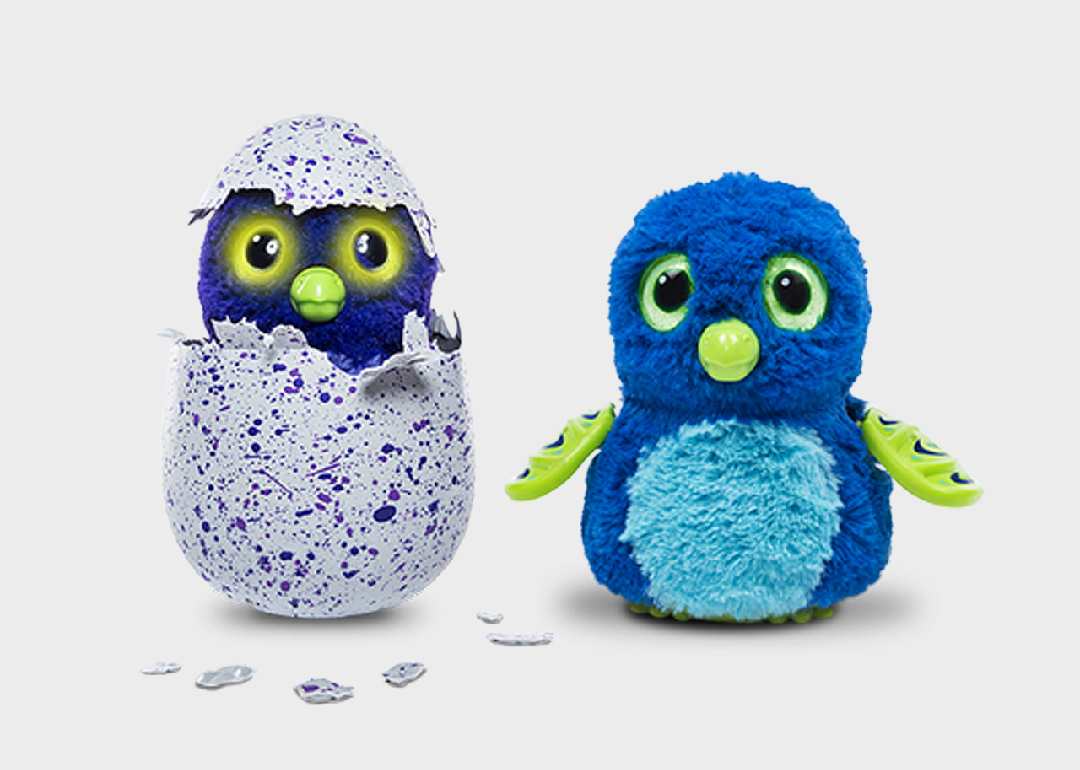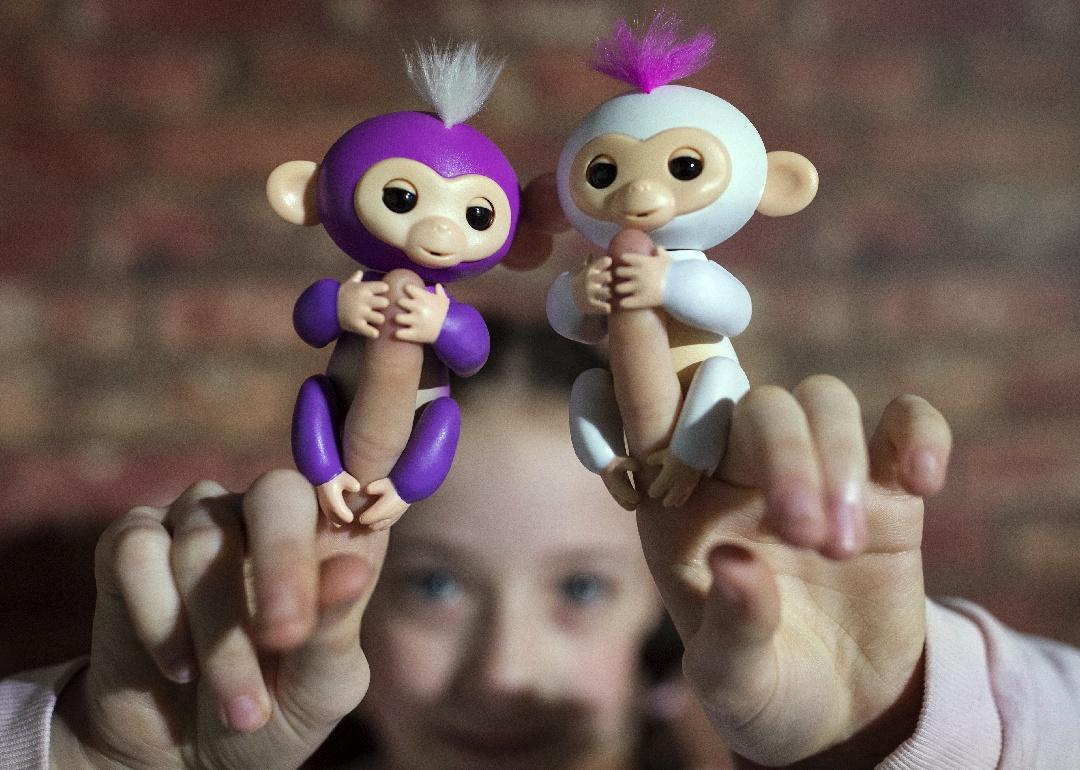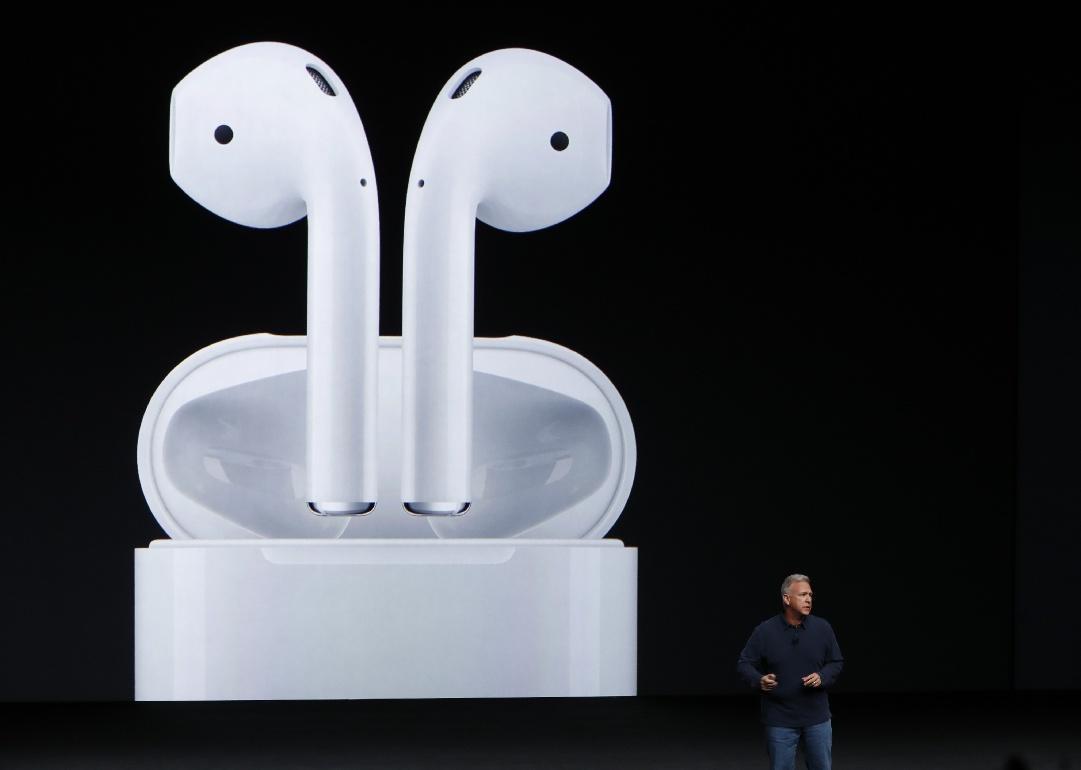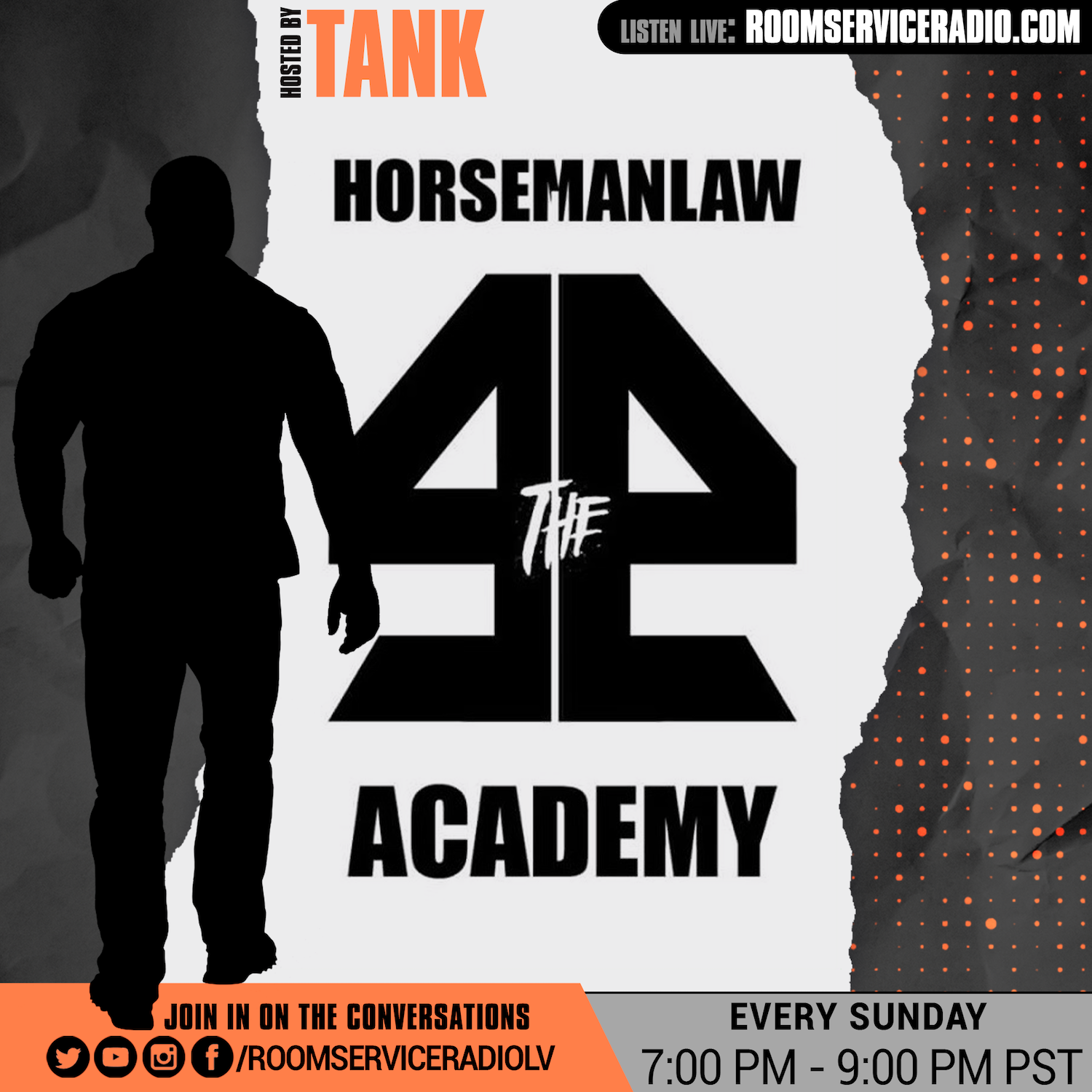Most popular holiday gifts and fads of the past century
The holidays are coming, and just like every year before this one, there’s sure to be a new gift craze or fad taking the country by storm. To celebrate, Stacker researched the crazes and fads of years past, from 1919 until today.
The information comes from lists of the hardest-to-find and the most popular Christmas gifts; the National Toy Hall of Fame’s toy list and Toy of the Year awards; inventions that became immediately popular; and lists of the 100 all-time greatest toys. The recommended age range for these gifts is mostly for toddlers, but a few are specifically for adults. This list reveals a unique snapshot of trends from each year in the past century, from building bricks to electronics.
You may know the little green army men and Mr. Potato Head from the “Toy Story” movies, but did you know that the miniature soldiers were first produced in the 1930s and that the spud-inspired plaything was the first toy advertised on TV about 15 years after? What about the 1980s and the debut of Transformers, Koosh ball, and Nintendo? The longevity of many of these gifts speaks volumes: Despite more recent advances in technology and the complexity of designs for holiday crazes like Xbox, iPad, and drones, we still desire the utility and joy from gifts as simple as Legos, Polaroid cameras, and Wiffle balls.
Whether you want to take a trip down memory lane, discover the fads of older generations, or brush up on the hottest trends for the youngest in your family, you may want to scroll through the list to find some inspiration.
You may also like: What America looked like during the Great Depression
![]()
STUDIO ALIJN // flickr
1919: Meccano sets
This predecessor to the Erector Set was first produced in the early 1900s, invented by Frank Hornby in the United Kingdom. In 1919, Hornby formed the Meccano Guild to encourage boys of all ages (up to adults) to gather together and get to building.
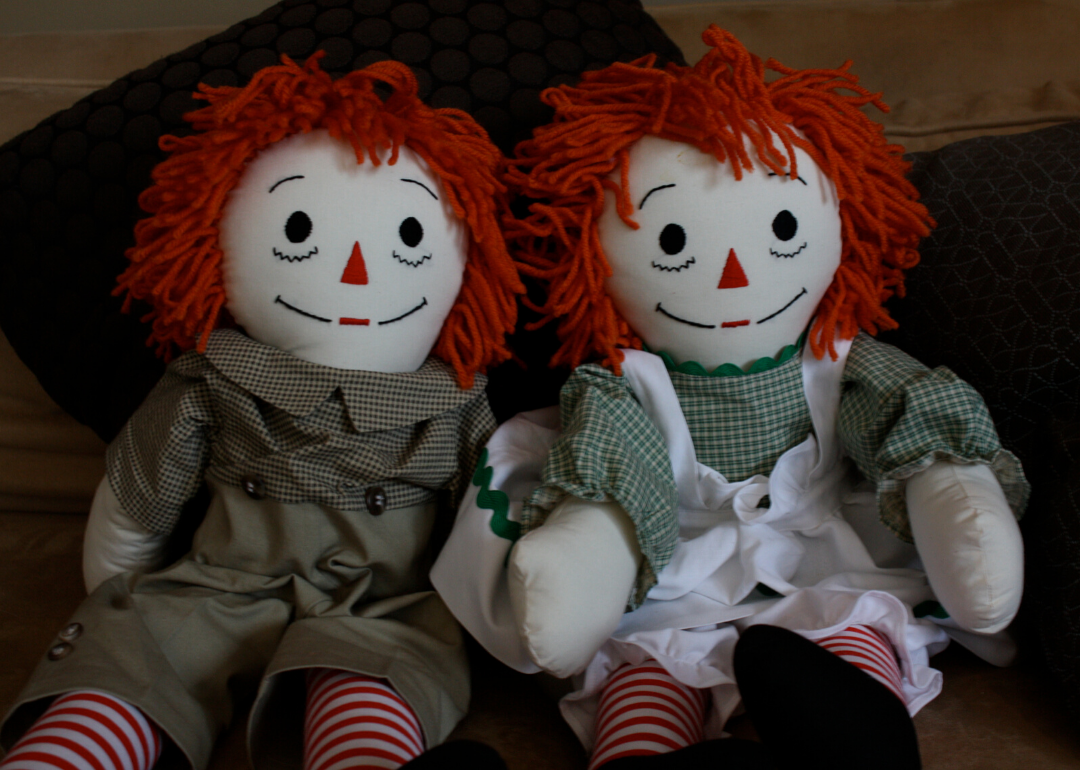
Troy Hakala // Flickr
1920: Raggedy Andy
In 1920, Raggedy Ann gained a brother. Cartoonist and illustrator Johnny Gruelle began to publish the “Raggedy Andy Stories” to complement Raggedy Ann, and an Andy doll came, too. Adults snapped them up so their kids could have a matching Ann and Andy set.
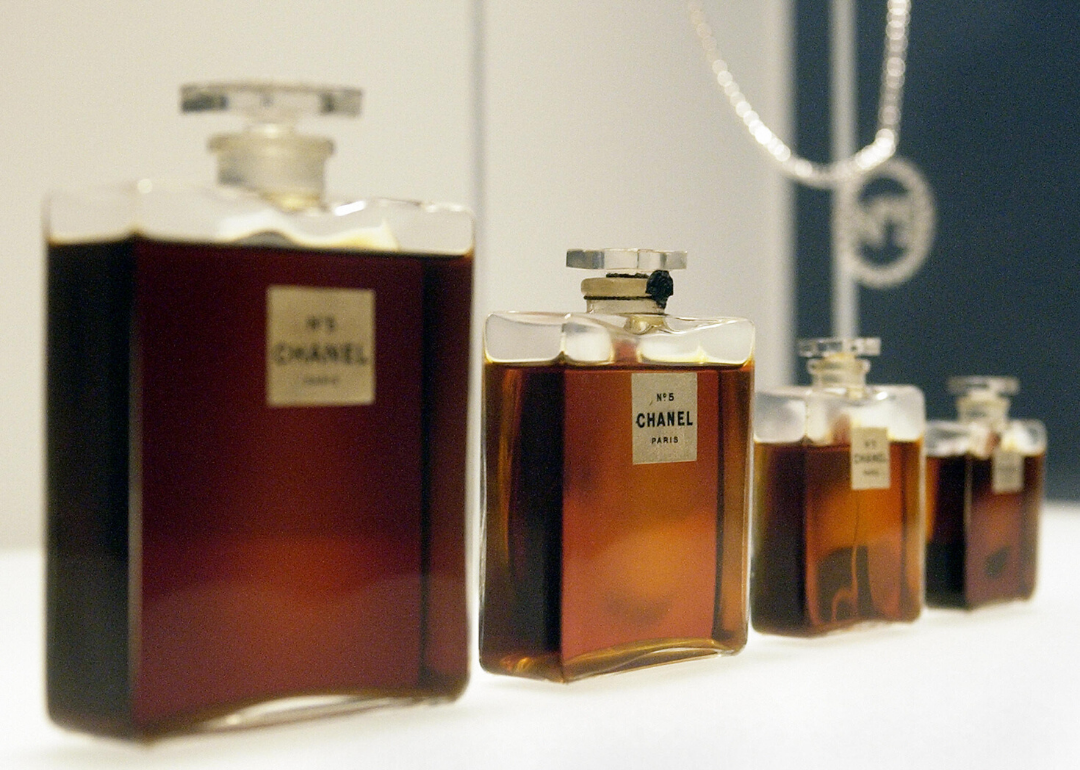
STAN HONDA via AFP // Getty Images
1921: Chanel No. 5
The invention of Chanel No. 5 was a game-changer in elite circles of women. Now, they could smell fresh and clean all the time, thanks to the assistant of Coco Chanel’s perfumer, who accidentally added a higher chemical dose to the mixture. Chanel marketed it immediately, and it was cleared off the shelves once the holidays came around.
W. G. Phillips/Topical Press Agency // Getty Images
1922: Pogo stick
The pogo stick was invented in 1919 by Russian immigrant George B. Hansburg, and by 1922 pogo sticks were the most popular outdoor toy for children and adults and featured prominently in magazine and newspaper ads.
oskay // flickr
1923: Chemistry set
In 1923, A.C. Gilbert (the inventor of the Erector Set) flexed his edutainment muscles once more and created a toy chemistry set just for boys. It was instantly popular, owing to parents dealing with the Great Depression and wanted promising careers for their children. While most of the set’s components were harmless, future iterations had some that could raise eyebrows, including a glassblowing kit that came with a blowtorch.
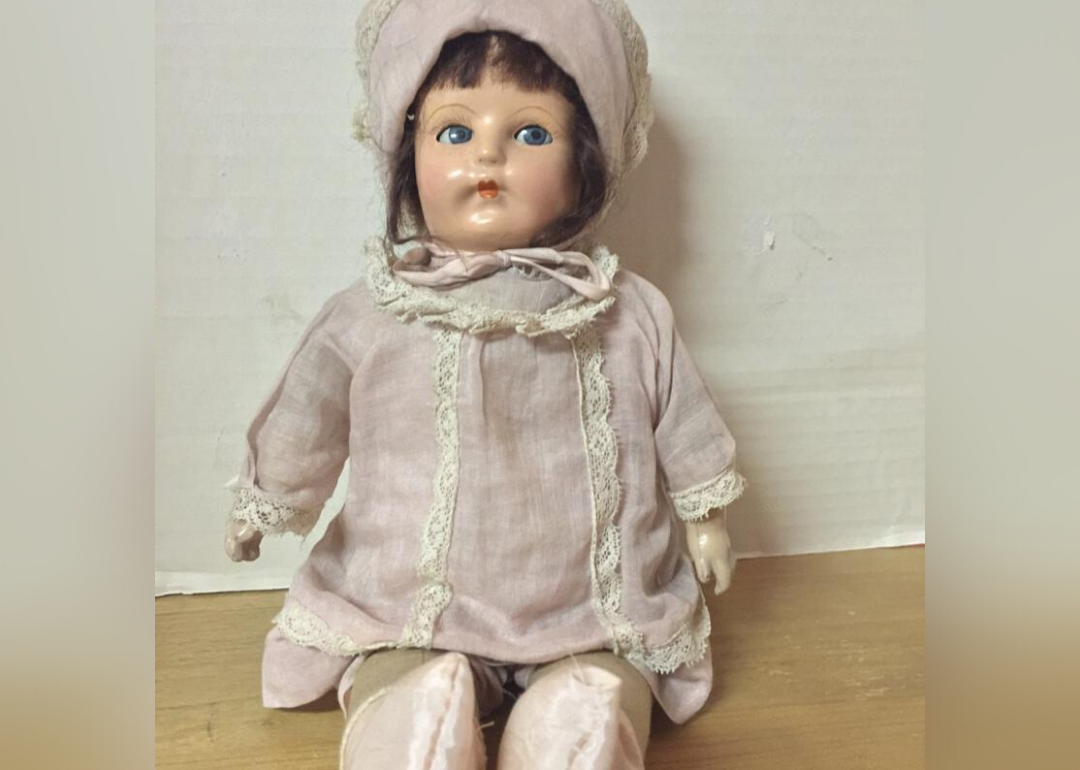
OldGreyDresser
1924: Flossie Flirt Doll
The Ideal Company produced Flossie Flirt in 1924, launched just in time for Christmas. The doll flirted with her eyes, darting them from side to side, winking, and blinking. Flossie Flirt was so popular that year that some newspapers published “Doll Lady” schedules, outlining where and when dealers who sold the doll would be available.
Pixabay
1925: Electric train set
Electric train sets took over the toy market in 1925 from three companies: Hornby (of former Meccano fame), American Flyer, and Lionel. The trains were expensive, though; one set cost about an average month’s salary.
Castles, Capes & Clones // flickr
1926: Winnie-the-Pooh
By the time “Winnie-the-Pooh” was published in 1926, the bear was already popular, having been made famous by A.A. Milne’s poetry and newspaper stories. Winnie and his friends were inspired by a set of stuffed toys Milne’s son, Christopher Robin, had received as gifts between 1920 and 1928. You can still visit this stuffed crew at the New York Public Library on 42nd Street.
cogdogblog // Wikimedia Commons
1927: Brownie camera
When the Brownie camera, invented in 1900 by Kodak, was released, it was the first time the public could enjoy photography as a hobby, thanks to its non-prohibitive price point.
James Green // flickr
1928: Dubble Bubble
In the candy world for the 1928 holiday season, everyone wanted Dubble Bubble. The gum was created accidentally by Walter Diemer at Fleer Chewing Gum Company and was stretchier, less sticky, and more prone to bubbles than regular chewing gum at the time. The first five-pound batch available sold out in one afternoon.
Daderot // flickr
1929: Yo-yo
No one knows exactly when the yo-yo was invented, but its first appearance in the U.S. was in 1927, when Pedro Flores, an immigrant from the Philippines, started carving and selling them. Yo-yos were a toy from his childhood. By 1929, he had two factories in Los Angeles and one in Santa Barbara just to keep up with demand.
State Library of Queensland// flickr
1930: Mickey Mouse
The first stuffed Mickey Mouse doll was commissioned by Disney in 1930 and created by a woman named Charlotte Clark. Mickey had already been around for two years, and his popularity was still increasing; the dolls were instantly popular.
Pixabay
1931: Radio Flyer Wagon
The American Flyer wagon, produced by the Liberty Coaster Company in Chicago, is the original Radio Flyer wagon. The company changed its name to Radio Steel and Manufacturing in 1930 and changed the wagon name the same year. By the end of 1930, the company was making 1,500 wagons a day to supply the craze taking over the country for gifts the following year.
niseag03 // flickr
1932: Sock monkey
Another Illinois company, the Nelson Knitting Co. based in Rockford, began producing the distinctive red-heeled sock that became the typical sock monkey in 1932. Money was often tight due to the ongoing Depression, and mothers would sew the worn-out socks into monkey toys for their children. Soon, a sock monkey pattern came with every pair of socks.
JeepersMedia // flickr
1933: Sears Wish Book
This trend wasn’t so much a toy as it was a printed catalog of toys. The Sears Christmas Book, a staple for holiday shopping, showed everything anyone could want to buy someone for Christmas. The first one in 1933 was only 87 pages; by 1968, it was 608 pages.
CGP Grey // Flickr
1934: Buck Rogers Ray Gun
The first science fiction comic strip ever, “Buck Rogers in the 25th Century A.D.,” premiered in January 1929. It was a daily strip, which was turned into a color Sunday edition in 1930, and then a radio show in 1932. In 1934, the first Buck Rogers replica toy ray gun debuted; it sold for 50 cents and made a “pop” sound when fired.
Hulton Archive // Getty Images
1935: Canned beer
This year, the first canned beer hit the market in Richmond, Virginia, from Gottfried Krueger Brewery. It was so popular that 37 more breweries were selling canned beer by the end of the year, and more than 200 million cans were sold.
elPadawan // flickr
1936: Monopoly
In 1935, Parker Brothers started selling the real estate game Monopoly; however, the idea for the game was stolen. On Jan. 28, 1936, the game’s actual creator Lizzie Magie called out the thievery on the front page of The Washington Post, which only served to promote the game further.
FOTO:FORTEPAN / Saly Noémi // Wikimedia Commons
1937: Pedal Cars
Between the 1920s and 1940s, pedal cars were enjoying a seemingly never-ending heyday. The design of the pedal cars matched the changing full-size auto industry. Some company catalogs had up to 30 pedal car models.
PetLvr // flickr
1938: Action Comics
Superheroes in pop culture can largely be traced back to Action Comics #1 in 1938, the first introduction of Superman. Only 200,000 copies were printed that first year, but it sold so well that the creators quickly obtained a spinoff comic of their own.
JWPhotowerks // flickr
1939: Little green army men
These little plastic toy soldiers were first produced in 1938, and—what timing—when World War II began in 1939, the popularity of the toys took off. Today, we can find them in all sorts of poses, including yoga.
GeorgeLouis // Wikimedia Commons
1940: Bubbles
No, blowing soap bubbles wasn’t invented in 1940. But the practice became widely popular that year, thanks to a company in Chicago that began to bottle its own solution.
MrBlueGenes // flickr
1941: ‘Captain America’ comic book
Four years before World War II had even ended, Captain America’s first appearance showed him punching Hitler on the cover of the comic book. It was controversial, which helped sales; the comic flew off the shelves as fast as it arrived.
BudCat14/Ross // flickr
1942: Little Golden Books
Before 1942, books for kids were high quality but way too expensive. Little Golden Books changed that, selling for only a quarter at accessible locations. The first year, hundreds of thousands sold, and through the holiday season into February the next year, more than 1.5 million were in print.
EtanSivad // flickr
1943: Chutes and Ladders
Chutes and Ladders, introduced by Milton Bradley in 1943, was based on an English game from India called Snakes and Ladders. It was an immediate success and stayed popular for several generations.
Atomicsteve // Wikimedia Commons
1944: Dick Tracy Detective Kit
Dick Tracy first showed up in 1931 but gained popularity in 1944 thanks to the resurgence of the radio show the year prior. This year, the hot toy was a Dick Tracy Detective Kit, complete with a manual, suspect information, a badge, a decoder, and more.
Marcin Wichary // flickr
1945: Slinky
Another year, another toy created by accident. Richard James, a mechanical engineer, was designing springs when he knocked one over and saw how it walked down the shelf. The Slinky wasn’t immediately popular when it was first released but became wildly desired after a 1945 Christmastime demonstration of the toy in a Philadelphia department store.
State Library and Archives of Florida // flickr
1946: Tupperware
Wives and mothers everywhere rejoiced with the invention of Tupperware bowls. They were airtight, watertight, and durable, and with the new proliferation of home refrigerators, they made storage simple.
Electric Football // Wikimedia Commons
1947: Electric football
Electric football isn’t a game of skill unless you count the patience you need to ignore that awful buzzing noise of players floating across a vibrating football field a skill. This toy, created in 1947, was a favorite to play with on Christmas morning.
Joe Haupt // Wikimedia Commons
1948: Tinymite Radio
Crystal radios were some of the first radios that grabbed a signal from broadcasting stations and played the sound through amplifiers. They were popular in the ’20s and ’30s but faded out, except in the form of toys. The Tinymite Radio was manufactured in 1948 and became immediately popular.
bigdogLHR // flickr
1949: Silly Putty
Silly Putty was accidentally created when an engineer tried to develop a synthetic rubber in 1943. No one had a use for it though, until 1949 when toy store owner Ruth Fallgatter decided to sell it in her catalog. It outsold almost everything in the catalog that year.
greeblie // Wikimedia Commons
1950: Magic 8 Ball
The fortune-telling pool ball we all love didn’t start as a ball at all; it was a tube created by a psychic’s son. The invention was picked up by Abe Bookman, brother-in-law to a shop owner in Cincinnati, who eventually shaped it like a crystal ball. In 1950, Brunswick Billiards wanted to use the item as a giveaway and turned it into an eight ball, and it gained immediate popularity. The toy was inducted into the National Toy Hall of Fame in 2018.
Chaloner Woods // Getty Images
1951: View-Master
The View-Master was originally designed to be a way to look at scenic photography from around the world. It was launched in 1939 at the New York World’s Fair and became marginally popular, but sales skyrocketed in 1951 when the discs started showing images from Disney movies.
Spencer Platt // Getty Images
1952: Mr. Potato Head
When the first Mr. Potato Head was introduced, there was no body included. It was a bring-your-own-potato toy of wacky face components. It was the first toy to have an actual commercial, which contributed to it making over $4 million in sales in the first few months after its launch in 1952.
Pixabay
1953: Matchbox Cars
These tiny cars are tiny thanks to a strange rule at a school. Jack Odell’s daughter was only allowed to bring toys to school that could fit into a matchbox, so Odell produced the little die-cast cars and sent her to school with them. All the students loved the cars, and when Matchbox officially launched in 1953, it cleaned up in the sales department.
JeepersMedia // flickr
1954: Wiffle Ball and Bat
The Wiffle Ball inventor, David Mullany, was a father, just looking for a safer way for his son to play baseball and not break any neighbors’ windows. He used old perfume packaging to create the original ball. By 1954, Mullany had filed a patent, incorporated a company, and began marketing in earnest, which caught the attention of Woolworth stores, leading to its eventual success.
Pixabay
1955: Gumby
In 1953, animator Art Clokey debuted Gumby in a short film. Bigwigs at television companies loved the idea and gave Clokey his own show, “The Gumby Show.” Gumby toys came out in 1955 and shared the same immediate success.
Ian Dudley // US Air Force
1956: PEZ
PEZ candy dates back to the ’20s, but the dispensers were invented in the ’50s. In 1956, PEZ debuted the space gun. The following year, the company added a 3D character head on top, cementing its place in pop history.
Petey21 // Wikimedia Commons
1957: Frisbee
By the time Frisbees were released in 1957, the flying discs had been around for nearly 90 years. It started as a “frisbie,” the empty pie tin from Frisbie Baking Company in Bridgeport, Connecticut. The craze took over nationally when Wham-O created the first iconic plastic disc.
Express/Express // Getty Images
1958: Hula Hoop
Another Wham-O toy, the hula hoop, was meant to capture the essence of Chinese acrobats spinning hoops on their limbs. Within the first few months of the hoop’s release in 1958, more than 25 million were sold.
mr.paille // flickr
1959: Barbie
When the first Barbie was introduced at the New York Toy Fair in 1959, the audience was skeptical. But one should never underestimate the appeal of a fashion doll: 300,000 Barbies sold in the first year.
Etcha // Wikimedia Commons
1960: Etch-A-Sketch
The original Etch-A-Sketch, introduced at a toy fair in Nuremberg, Germany, in 1959, wasn’t too popular when it launched. But it caught the eye of an Ohio company, which bought the product and saturated televisions with ads for the toy. It became a must-have for Christmas in 1960 and was so popular that the factory had to work until noon on Christmas Eve to fill all the orders.
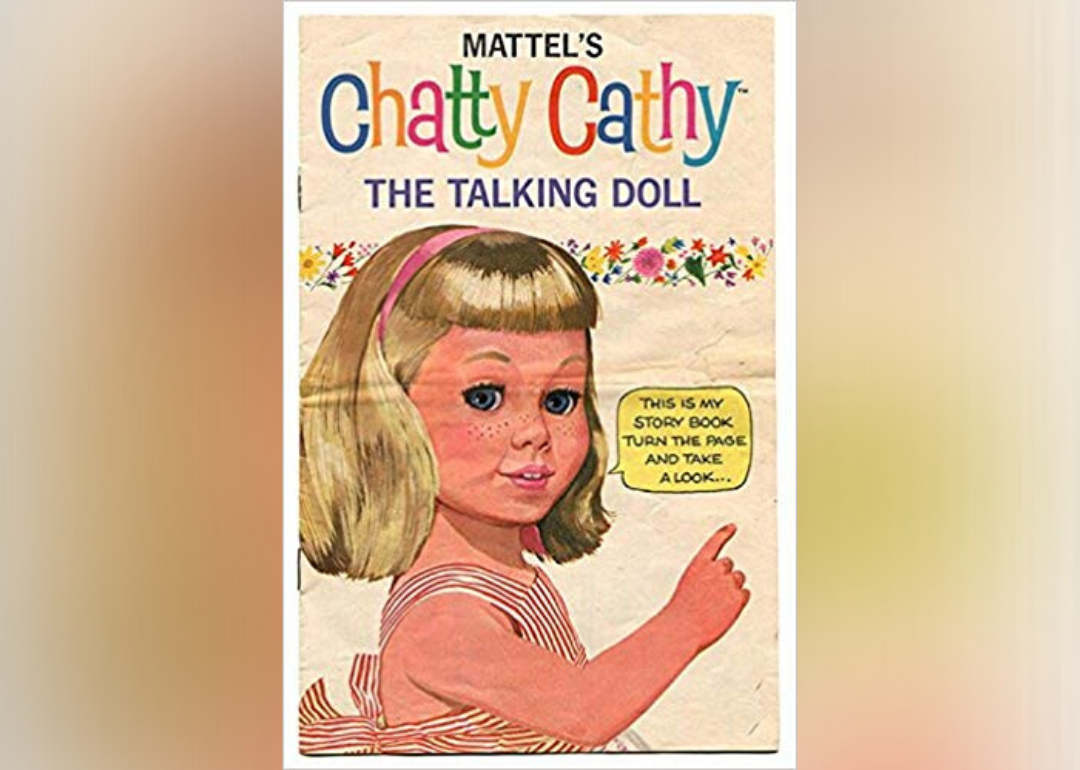
Inc. Mattel
1961: Chatty Cathy
Powered by a phonograph record in her belly, Chatty Cathy spoke 11 different phrases. She appeared in television commercials starting in 1960, and by 1961 she was the second most popular doll in the U.S., right behind Barbie.
Joybot // flickr
1962: Legos
After several iterations, the modern version of the Lego block was introduced in 1958. But it was a static toy, and although it was already popular, it gained even more fans when the Lego wheel debuted in 1962.
Bradross63 // Wikimedia Commons
1963: Easy Bake Oven
With a tiny lightbulb, kids could bake brownies and cakes once Hasbro released the Easy-Bake Oven in 1963. It debuted just in time for the Christmas rush and has been a favorite of young bakers ever since.
Mike Mozart // Flickr
1964: G.I. Joe
Barbie was the queen of dolls in the 1960s, dominating sales. A marketing agent in New York, Stanley Weston, wanted to give boys the same joy of having a doll and developed the G.I. Joe action figure; Hasbro invested and started to sell it in 1964. More than 16 million G.I. Joe action figures were sold by the end of that first year.
frankieleon // flickr
1965: Tonka Truck Dump Truck
Tonka Trucks were invented by three people in Minnesota who originally wanted to make garden tools but started making toy trucks after receiving a toy steam shovel. The dump truck was released in 1965 and became an instant bestseller, where it remained for the next 35 years.
Len Trievnor/Express/Hulton Archive // Getty Images
1966: Troll Dolls
The original troll dolls, invented by Danish woodworker Thomas Dam, were much creepier. They were made of wood and had wool hair and glass eyes. By 1959, the dolls were produced in a small factory using PVC plastic. The trolls gained popularity and held onto it throughout the next decade, with teens collecting them and hosting “bring your own troll” parties.
bunnyhero // flickr
1967: Barrel of Monkeys
Barrel of Monkeys, the game of linking red, S-shaped plastic monkeys into a long chain, originated when Leonard Marks was waiting at a shop counter, playing with snow tire replacement chain links. By 1967, Barrel of Monkeys was #2 on the hit toys charts.
Leap Kye // flickr
1968: Hot Wheels
Hot Wheels was one of Matchbox’s direct competitors, though Matchbox focused on size and Hot Wheels tricked out its cars. The first line released in 1968, The Sweet 16, instantly overtook all the competition in the die-cast car industry.
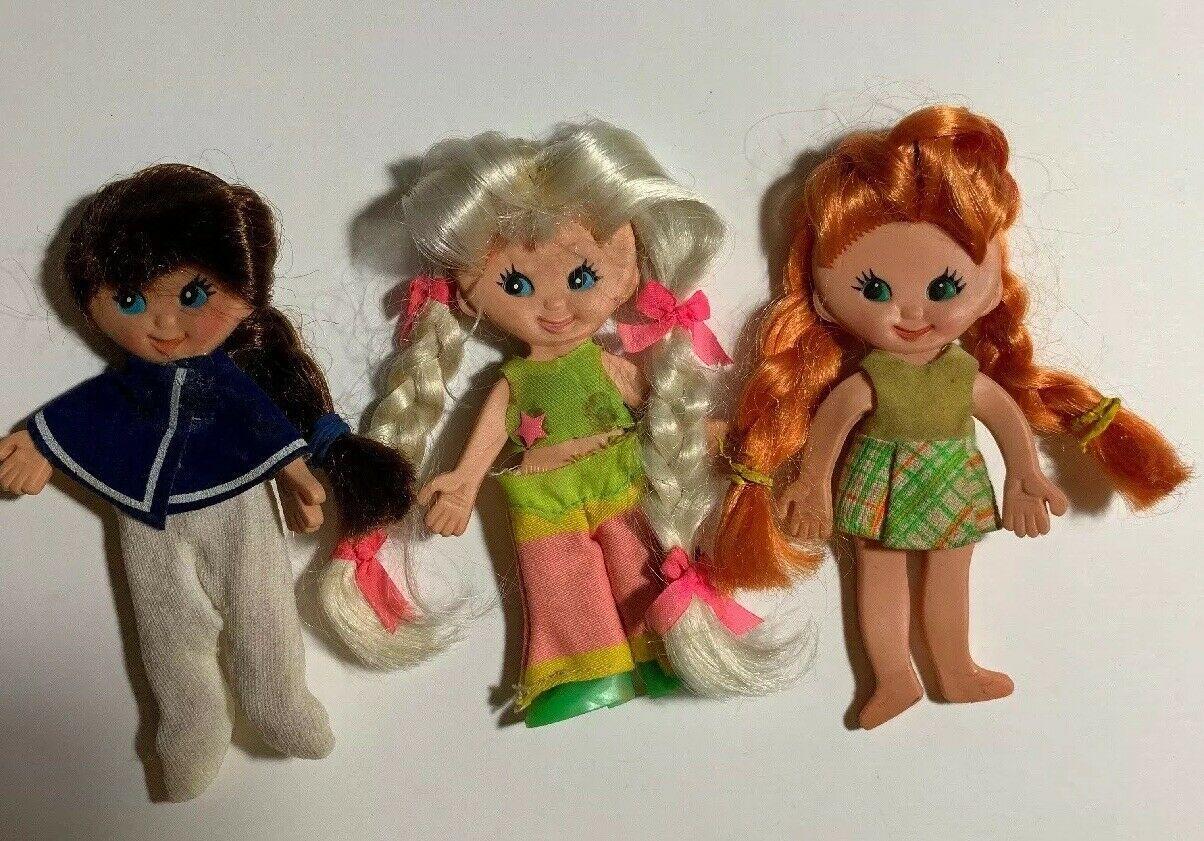
mygenerationcollectables // ebay
1969: Flatsy
If you combine a paper doll and a Barbie, you get Flatsy, a flat doll with hair, changeable clothes, and accessories. Ideal Toy Company released them in 1969, and they were immediately popular. Flatsy dolls became collector’s items the very next year.
JeepersMedia // flickr
1970: NERF
By 1970, Parker Brothers knew kids everywhere were tired of being told they couldn’t play ball in the house. So the company released a ball specifically to be played inside: NERF, a soft foam ball that wouldn’t hurt a thing if it smashed into it. By the end of the first year, more than 4 million were sold.
Ben Ramsey // Flickr
1971: Weebles
We all know the tagline: “Weebles wobble, but they don’t fall down!” The little wobbling egg-shaped people were introduced in 1971, based on the Punching Clown from the show “Romper Room.” The dolls gained immediate success.
Fabian Reus // Wikimedia Commons
1972: Polaroid Camera
Polaroid, an already established company, took a giant leap forward in 1972 when it released the Polaroid instant camera. Legend says the co-founder’s daughter was the inspiration; she wondered why she couldn’t see vacation photos immediately after they were snapped. The camera was the cover story for Life magazine just before Christmas that year, boosting sales.
twitchery // Flickr
1973: Baby Alive
1973 was a huge year for lifelike dolls. That year, Baby Alive was introduced and dominated the market. It had a mechanical mouth that chewed up food from packets, which it then “disposed of” in its diaper.
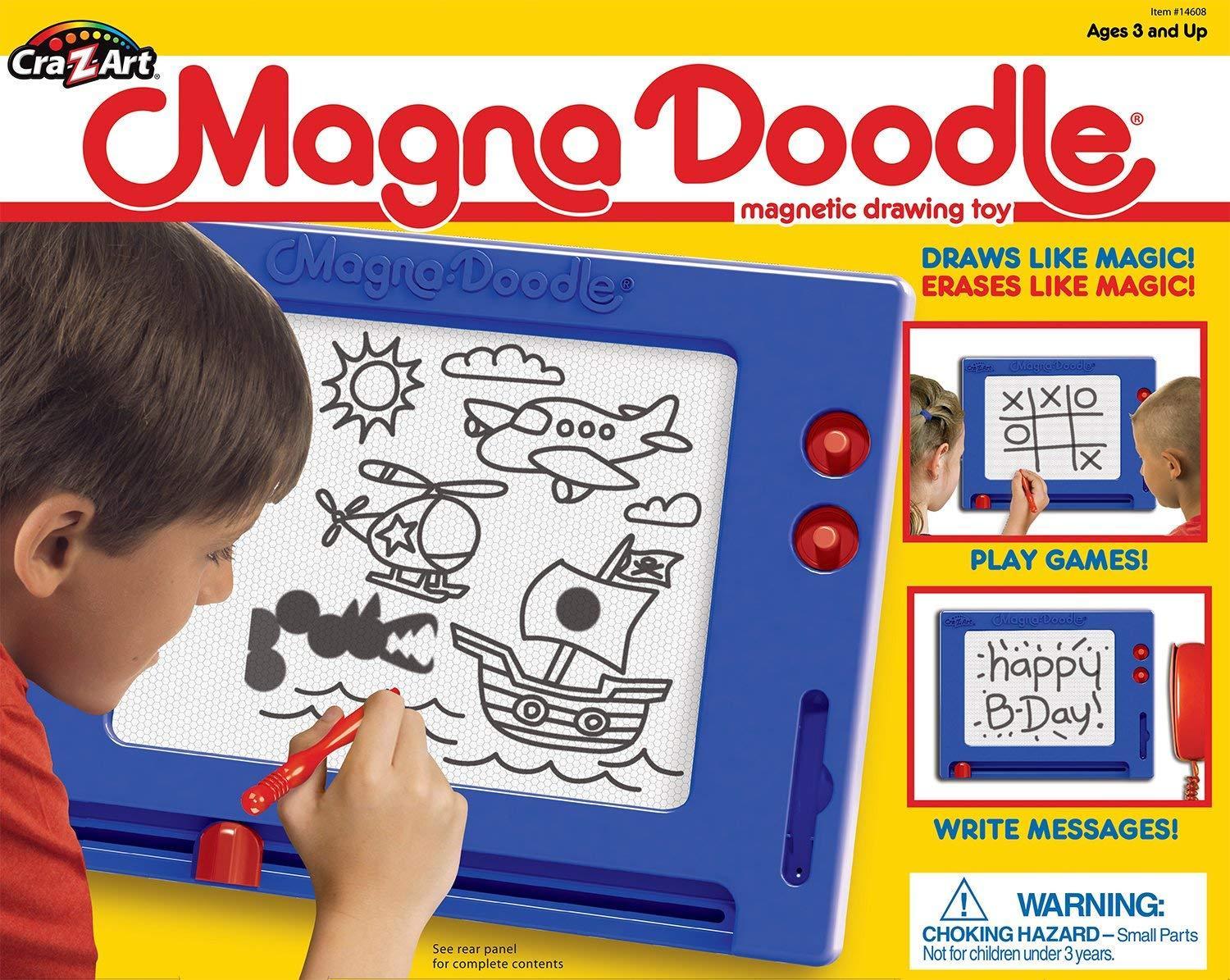
Cra-Z-Art
1974: Magna Doodle
In 1974, a new type of chalkboard was invented, one without chalk and without dust: the Magna Doodle. It was very similar to the Etch-A-Sketch—just newer—and sold millions since its introduction.
Hempdiddy // Wikimedia Commons
1975: Pet Rock
The Pet Rock was originally meant as a joke, a “pet” that didn’t need any care, which seemed to resonate incredibly well with the ethos of the self-indulgent mid-’70s. It cost $3.95 in 1975 and took over the country that year, with more than a million units sold.
Rick Ligthelm // Wikimedia Commons
1976: Paddington Bear
“A Bear Called Paddington” was first introduced to the world in 1958 through a children’s book. The bear himself in a stuffed animal version followed in 1972, and in 1975, the toy was given the green light in the U.S. market. It took off and spawned a television series in 1976.
Ciphers // Wikimedia Commons
1977: Slime
First introduced in 1976, squishy and oozy Slime came packaged in a plastic garbage can and became a bestseller right away. 1977 saw a new, wildly popular way to play with Slime: the Slime Monster Game, where players try to slime their opponents.
CarbonNYC [in SF!] // flickr
1978: Hungry Hungry Hippos
Hungry Hungry Hippos was released in 1978 to high acclaim. Basically, you play as a plastic hippo and try to eat as many marbles as possible as fast as possible. Kids born in the early ’80s remember the game well; it has been a staple in the family game room since its launch.
France1978 // flickr
1979: Atari
The ’70s started the video game craze, with Atari first reaching homes in 1975. And though 150,000 were sold that first year, it only took off once the inventor sold the system to Warner Communications. By the end of 1979, sales topped $415 million.
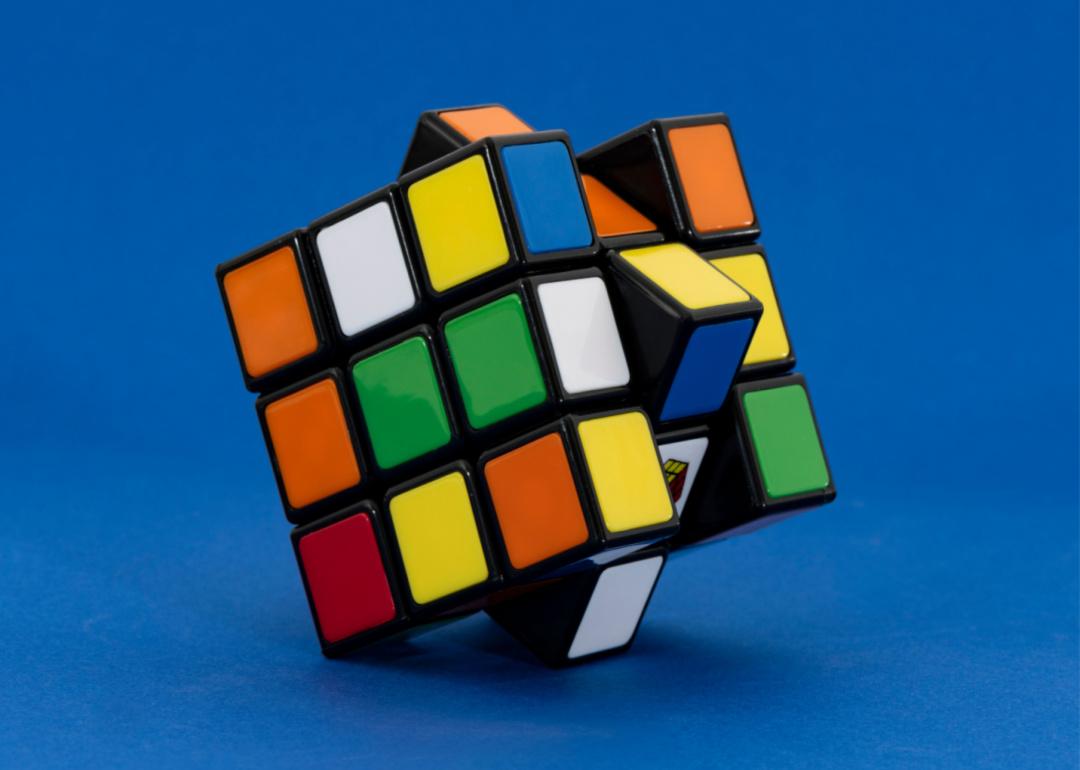
gd project // Shutterstock
1980: Rubik’s Cube
The Rubik’s Cube was invented in 1974 by a professor in his mother’s Budapest apartment. The twisty-turny puzzle cube became really popular in 1980, though, when it debuted at the New York toy fair. The toy was immediately popular, and about 100 million cubes were sold in the next three years.
Asrar Makrani
1981: Smurfs
In September 1981, Smurfs first aired on television and became part of a standard ’80s childhood.
M. Mckeown/Express // Getty Images
1982: BMX Bikes
We can largely thank a boy and his alien for the BMX bike craze throughout the ’80s. The off-road trick bikes were featured in “ET,” released in 1982, and kids around the country instantly had to have them.
william_mckeehan // flickr
1983: Cabbage Patch Kids
Cabbage Patch Kids were created by a 21-year-old folk artist in Georgia as dolls you could “adopt” after they were “born.” The artist, Xavier Roberts, couldn’t keep up with demand; in 1982, he joined forces with Coleco to mass produce the dolls. When they launched to the public in 1983, people were so obsessed with getting one before Christmas that violent riots broke out in several stores.
France1978 // flickr
1984: Transformers
In 1984, both the television show and toys for “Transformers” were released. Hasbro produced the robot toys that took on other forms, like cars, planes, and cassette tapes. Transformer fever took over, and the toys became one of the most successful franchises in history.
Quinn Dombrowski // Flickr
1985: Teddy Ruxpin
Teddy Ruxpin, the stuffed bear with a cassette tape in his back, entered the world of mass toy production in 1985. He could tell stories and move his mouth and eyes along with the tale. The bear sold out for Christmas and remained the next year’s top-selling Christmas gift.
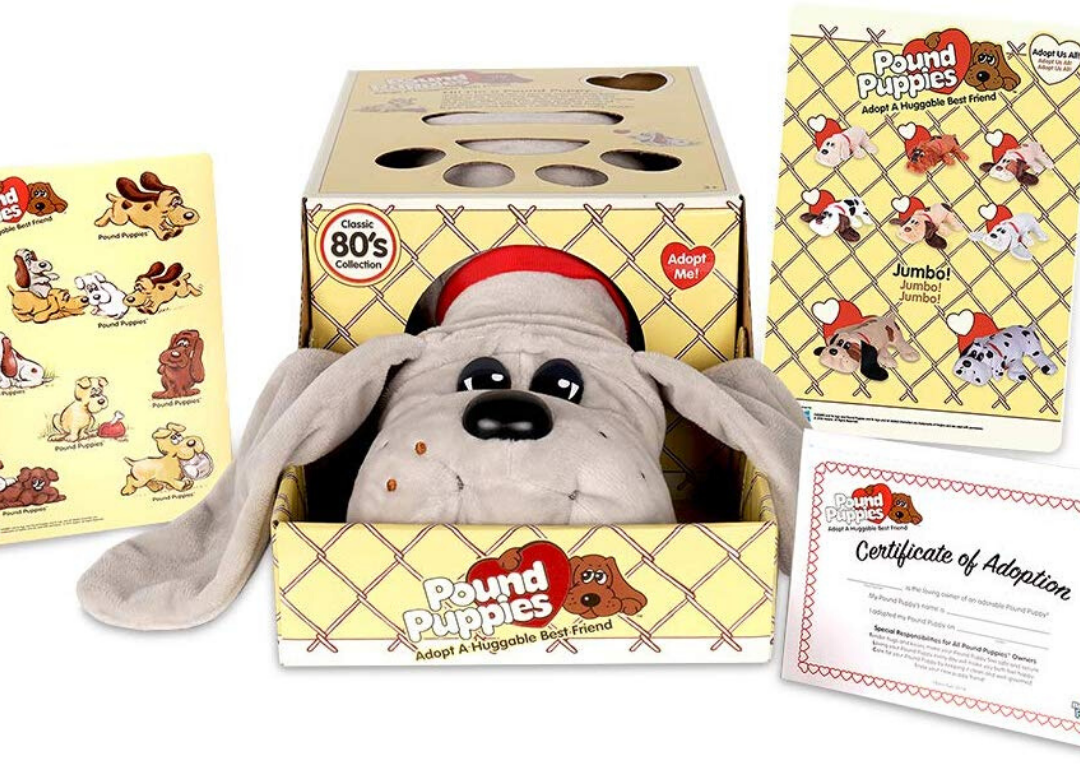
Basic Fun
1986: Pound Puppies
Like the Cabbage Patch Kids, Pound Puppies were toys you could “adopt,” and they came in a cardboard carrier with a guide to taking care of the new pet. They were selling out by 1985 and got an extra boost in popularity when their own cartoon premiered in the fall of 1986.
Evan-Amos // Wikimedia Commons
1987: Nintendo
Gamers have Nintendo to thank for reviving the video game scene in the 1980s. Atari had fallen out of favor, and no one was buying video game systems, not even the Nintendo when it was first released until Super Mario Bros. debuted. No one knows when the game went on sale in the U.S., but by 1987 it was there and taking Nintendo to stardom with it.
1lenore // flickr
1988: Koosh Ball
The world was introduced to the Koosh Ball in 1987. The creator wanted to help his kids learn how to play catch, so he invented an easily caught ball made from rubber strands—2,000 of them per ball, to be exact. By 1988, the Koosh Ball was a must-have Christmas gift.
JCD1981NL // Wikimedia Commons
1989: Game Boy
Capitalizing on the popularity of the original system, Nintendo released Game Boy, a handheld video game system, in 1989. It was bundled with the puzzle game Tetris and immediately took the world by storm, selling 35 million that first year.
Sawyer Family Reviews // YouTube
1990: TMNT Action Figures
By 1990, everyone wanted to be a hero in a half-shell or at least have one of their own. Teenage Mutant Ninja Turtle mania was sweeping across the country thanks to a comic book, a cartoon, and action figures. That year, the first movie was released, and the toys started flying off the shelves faster than ever.
WikiFido // Wikimedia Commons
1991: Pogs
Pogs in some form have already been around since the 1600s in Japan. The original discs were about the size of milk caps, which kids used when the game became popular in Hawaii in the early 1900s. In 1991, a schoolteacher named Blossom Galbiso taught her students how to play, sparking a craze that would take over the country.
Lester Balajadia // Shutterstock
1992: Barney
Barney, the big lovable purple dinosaur, first debuted in a TV show in April 1992. By November, more than 25,000 people were flocking to events around the country, forming lines almost a mile long just to get a glimpse of the dino. Barney merchandise sold like crazy that first year.
Onetwo1 // Wikimedia Commons
1993: Talkboy
Fun fact: The first Talkboy wasn’t actually a real thing. It was a nonfunctional prop for 1992’s “Home Alone 2.” Fans wanted it though and launched a letter-writing campaign to have the voice-changing cassette recorder produced. The campaign was successful, and in 1993 the functional Talkboy instantly topped toy charts.
Mike Nelson // AFP via Getty Images
1994: Power Rangers
The initial life cycle of the Mighty Morphin Power Rangers was fairly short. The show launched in 1993. In 1994, fans were causing 8-mile-long traffic jams to meet the characters, and the toys topped the holiday gift charts. Only a year later, popularity peaked with a movie and then rapidly declined. But that was just the first wave; the Power Rangers were back with a vengeance by 2013.
Chris Hondros // Getty Images
1995: Beanie Babies
In 1995, the Beanie Baby toy craze took off when one of the toys, a stuffed lamb called Lovie, was discontinued. The inventor, Ty Warner, told angry customers the toy had “retired,” exponentially driving up demand. He began to do this at random to different Beanie Babies and watched as their value grew. Owners were able to sell rare Beanie Babies to finance braces and even adopt a child.
Fisher Price // Getty Images
1996: Tickle Me Elmo
Tickle Me Elmo, the doll that laughed more and more as you tickled it, hit shelves in July 1996. But it didn’t sell well at first—until Rosie O’Donnell featured it on her show in October. By the holiday shopping season, people were trampling one another to get the dolls, which were selling out in a matter of minutes.
Jiji Press // AFP via Getty Images
1997: Tamagotchi
In 1997, everyone wanted Tamagotchi, the portable pet you feed, play with, and help grow. On the sad chance you forget to pause the game and leave it alone for a few hours, your Tamagotchi dies. Shortly after its release, it was featured in The New York Times and was selling out nationwide, with waitlists for people hoping to get one.
Pixabay
1998: Furbies
Inspired by Tamagochis, David Hampton and Caleb Chung came up with Furbies, which became wildly popular, despite being creepy. High demand for the toy pushed prices to more than $100 at Christmastime in 1998.
YOSHIKAZU TSUNO // AFP via Getty Images
1999: Pokémon Trading Cards
Trading cards have always brought in a tidy sum, and Pokémon cards, the game based on capturing and battling adorable monsters, is no exception. In 1999, Pokémon cards were the most popular holiday gift—and the most controversial: Some parents sued the company that year, claiming the game had given their children gambling problems.
丁 // Wikimedia Commons
2000: Razor Scooter
The foldable Razor A scooter was released in 2000 and was quickly named Toy of the Year. By the next year, 7 million were sold in the United States. The scooters are still popular today among people of all ages (including adults scooting their way to work in the city), but nothing has quite matched the popularity of the first launch.
Mario Tama // Getty Images
2001: Bratz
In 2001, Barbie found worthy rivals in her edgy descendants, Bratz Dolls. The dolls were fashion-forward, wore a lot of glittery makeup, and had huge doe eyes. Millions sold that first year, and now there’s a whole Bratz empire behind the dolls.
Clayton Lenhardt US Airforce // Wikimedia Commons
2002: Beyblades
Beyblades, customized spinning battle tops, were born in Japan in 1999 and launched internationally in 2002. They were an instant success, bolstered by an accompanying TV show that began to air the year prior.
Andy App // flickr
2003: Electronic Hulk Hands
While Beyblades were still dominating sales in 2003, the Toy Association’s Boy Toy of the Year Award knocked them down a notch and placed Electronic Hulk Hands at the top spot. The big green gloves made Hulk noises when you hit things with them.
GREG WOOD // AFP via Getty Images
2004: Robosapien
Robotics has come a long way since the Furby craze of 1998, and in 2004, Robosapien burst onto the market. It was a trainable robot that could interact with you and do whatever you wanted. Kids went crazy for it, taking it to the top of the Christmas must-have lists.
YOSHIKAZU TSUNO // AFP via Getty Images
2005: Xbox 360
The next big innovation in video game systems launched in November 2005 with the Xbox 360. It was a much-anticipated release, and gamers and parents waited outside stores all night to get one, only to be confronted with a supply shortage that often left them empty-handed.
Evan-Amos // Wikimedia Commons
2006: PlayStation 3
The third iteration of the PlayStation hit the shelves in late 2006, just in time for the holidays. It was the most expensive video game system yet, but it also came with either a 20 GB hard drive or a 60 GB hard drive.
Aido2002 // Wikimedia Commons
2007: iPod Touch
When Apple first released the iPhone in 2006, it was an instant hit. However, the company knew not everyone was buying it, either because they had a phone already, didn’t want it, or it just cost too much. So in 2007, Apple released the iPhone without the phone: the iPod Touch. It stayed a bestseller until the next generation was released in 2008.
Sara D. Davis // Getty Images
2008: Nintendo Wii
Nintendo’s first big motion-sensitive console was released in 2006, launching a new type of video gaming that others would expand on in years to come. The console sold out during the holidays every year; in 2008, 13.4 million units were in U.S. households.
Yamavu // Wikimedia Commons
2009: Nook
Barnes & Noble took a risk in 2009 and released an e-reader called the Nook, competing directly with Amazon’s Kindle. Sales backed the value of the decision, though. That year, the company sold out of its entire stock, and people were waiting for back-ordered ones through the Christmas season.
cote // flickr
2010: iPad
The first iPad was as much anticipated as a new tablet following the release of the iPhone a few years earlier. More than 300,000 sold when it first launched, and by the end of the holidays, sales had reached the millions, outselling actual Mac computers.
Astrid Stawiarz // Getty Images
2011: Let’s Rock Elmo
Move over, Tickle Me Elmo. The red doll can now play instruments and sing. Let’s Rock Elmo knew six songs and was popular enough in 2011 to make Time’s Top 10 Everything list.
Takimata // Wikimedia Commons
2012: Wii U
Nintendo’s next console, the Wii U, launched in November 2012, just in time for the holiday shopping craze. It sold out in the first week, again prompting hopeful system owners to wait outside all night to get one.
JIM WATSON/AFP // Getty Images
2013: Big Hugs Elmo
Every time a new Elmo toy comes out, he creeps back into popularity, as in 2013 with the release of Big Hugs Elmo, the Elmo doll that hugged you back. It immediately made it on Toys R Us’ list of best holiday toys. Only one problem, though: it was recalled shortly after because the batteries tended to overheat.
T.J. Kirkpatrick // Getty Images
2014: TMNT Rereleased Action Figures
Disney’s new movie “Frozen” was all the rage throughout 2014, but numbers after the holidays proved another movie actually spawned the highest-selling toy of the season. The original Teenage Mutant Ninja Turtles movie relaunched in 2014, along with the action figures, which outpaced the Elsa doll from “Frozen,” originally thought to be #1.
Pixabay
2015: BB-8 Droid
By April 2015, the BB-8 Droid was listed as one of the year’s must-have holiday gifts. The robotic ball with a detachable, independently moving head was controlled by a smartphone, and by Christmas morning, “Star Wars” geeks of all ages had one rolling around under the tree.
Pixabay
2016: Hatchimals
Hatchimals are cute, interactive toys that hatch themselves out of eggs. They were released in October 2016 and instantly began selling out in every store that sold them.
Dan Kitwood // Getty Images
2017: Fingerlings
Matching the Hatchimals-level holiday craze, Fingerlings were introduced in 2017 to a lot of excitement. The little robotic monkeys that attach to your finger and make monkey noises at you consistently sold out within hours every time more were put on the shelf.
Stephen Lam // Getty Images
2018: Apple AirPods
Bluetooth audio has been common for several years, but when Apple eliminated the wires on its earbuds, the AirPods craze took over the 2018 holidays. After the product got over the ridicule hump (aka the “rich and wealthy” who shelled out $160 for a product that, in the past, was free when it included a wire and was purchased with an iPhone), it became a ubiquitous symbol of tech and music.
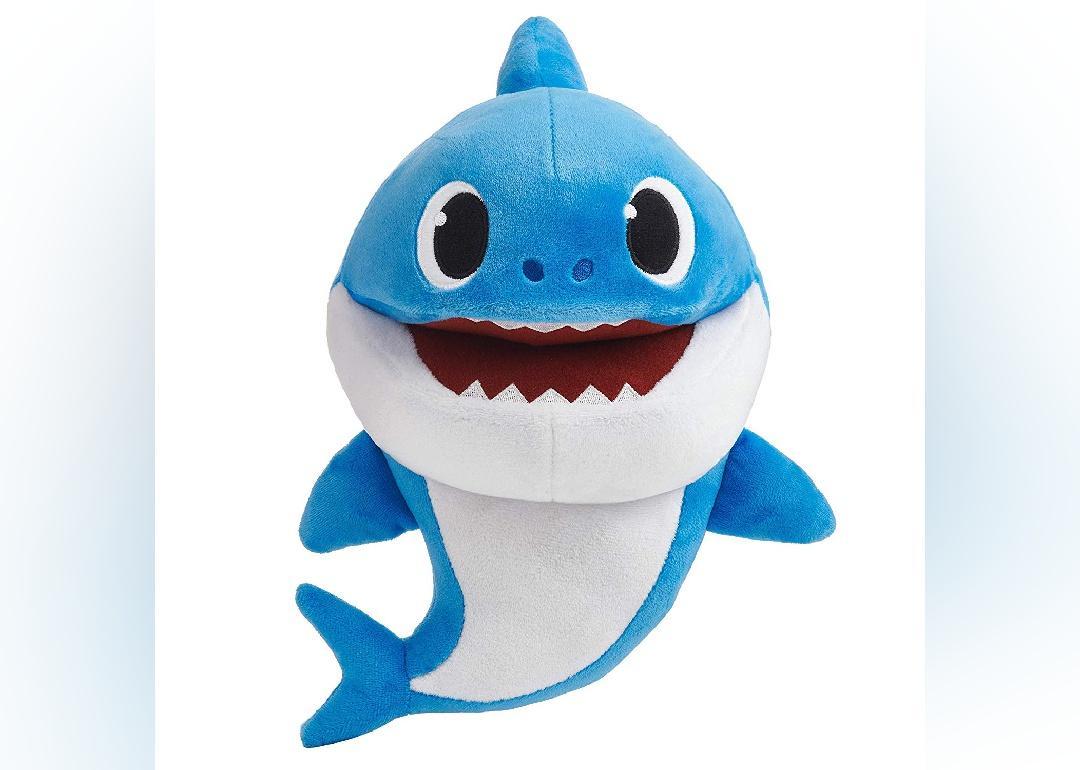
WowWee
2019: Baby Shark Song Puppet
It is not unusual for a wildly popular song to transcend the airwaves into the cultural consciousness, and “Baby Shark” has been no different. The WowWee Pinkfong Baby Shark Official Song Puppet is cute, yellow, and advanced. It moves its mouth with your hand and plays “Baby Shark.” Moving it faster or slower changes the song’s tempo. What would a gift craze be without options?
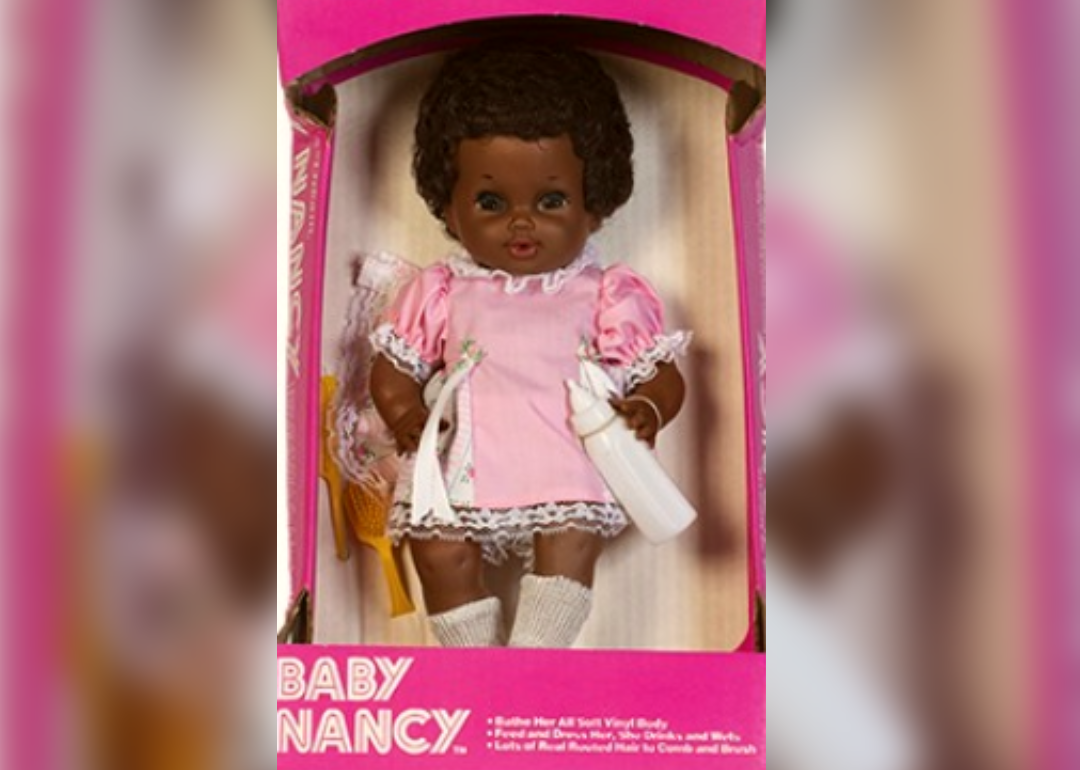
Shinanda Toys
2020: Baby Nancy
Shindana Toys, a California-based company, manufactured most Black dolls from the 1960s to the 1980s and introduced its first doll, Baby Nancy, in 1968. Baby Nancy, who sports an Afro, was the first doll to show realistic Black features. With 32 dolls and six games in production, Shindana became the largest producer of Black dolls and toys of the mid-’70s. In 2020, the pioneering doll was inducted into the National Toy Hall of Fame.
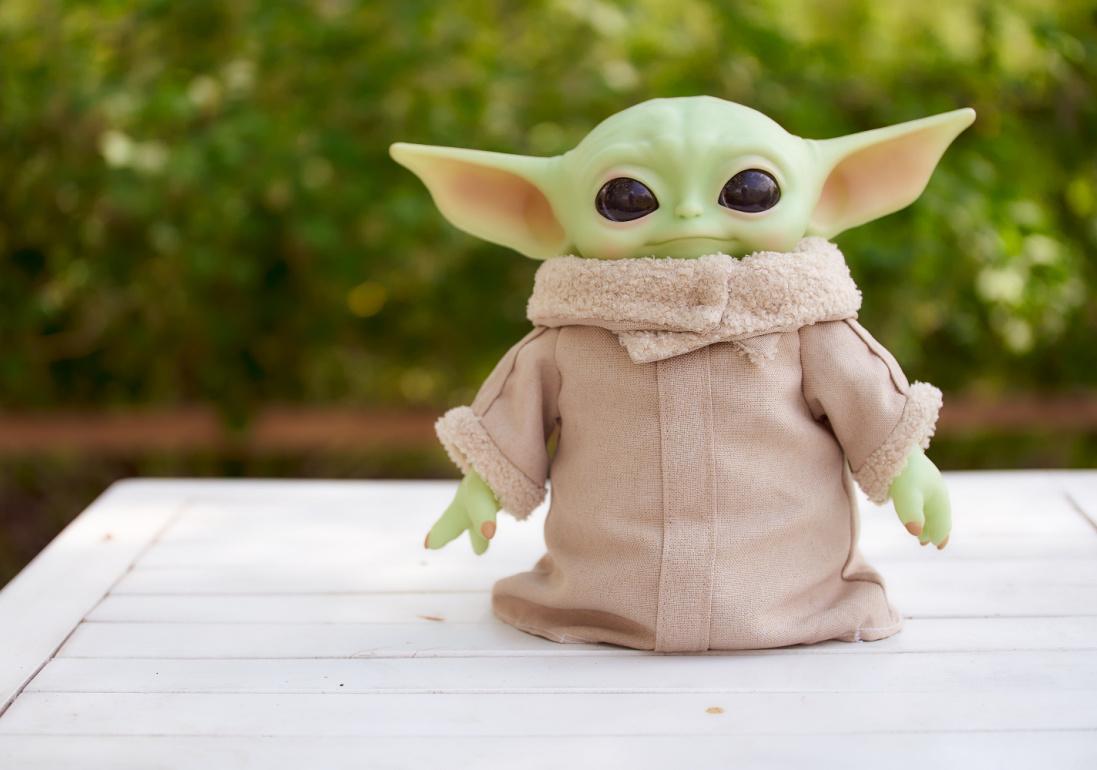
XELARIX // Shutterstock
2021: Baby Yoda
Baby Yoda isn’t just popular amongst kids but adults who are longtime “Star Wars” fans. With his big ears, huge black eyes, and recognizable robe, Baby Yoda has been transformed into toys of all kinds—an animatronic plaything, card game, vinyl figure, Lego, and plush toys of various sizes.
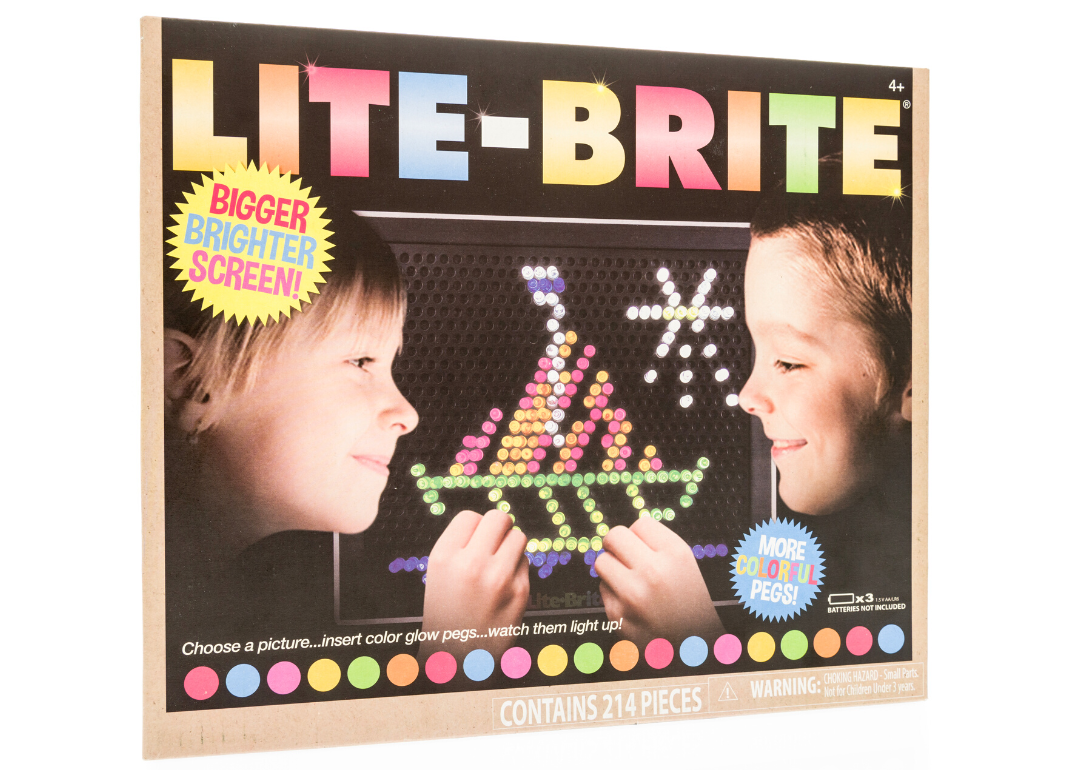
Keith Homan // Shutterstock
2022: Lite-Brite
Hasbro’s Lite-Brite has been a hit with kids since its introduction in the 1960s. Thanks to its cameo in the chart-topping show “Stranger Things,” the light-up peg toy has enjoyed a renewed interest from toy lovers looking to boost their creativity while waxing nostalgic.
Article written by Jennifer Billock Stacker.com #ReviewJournal










